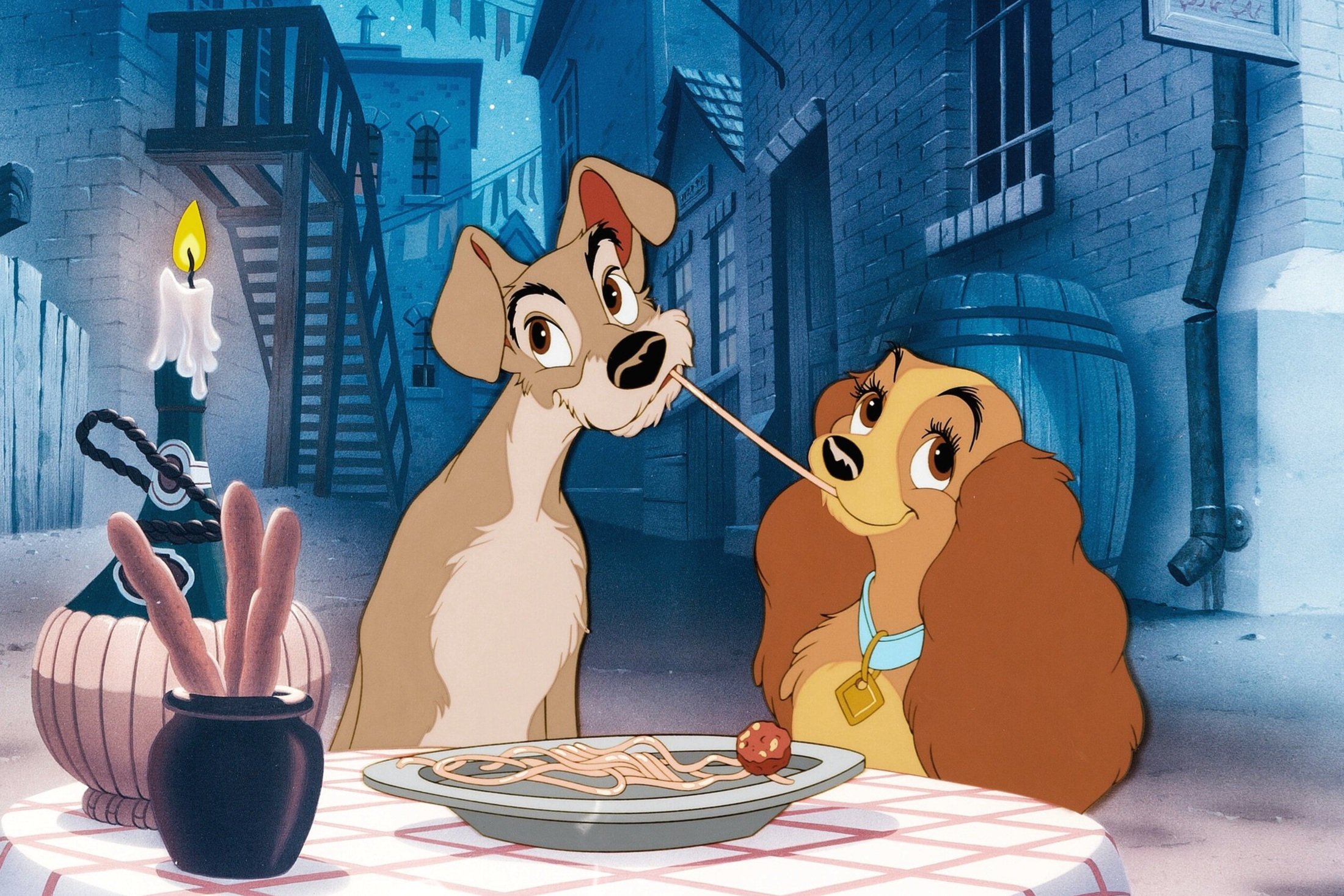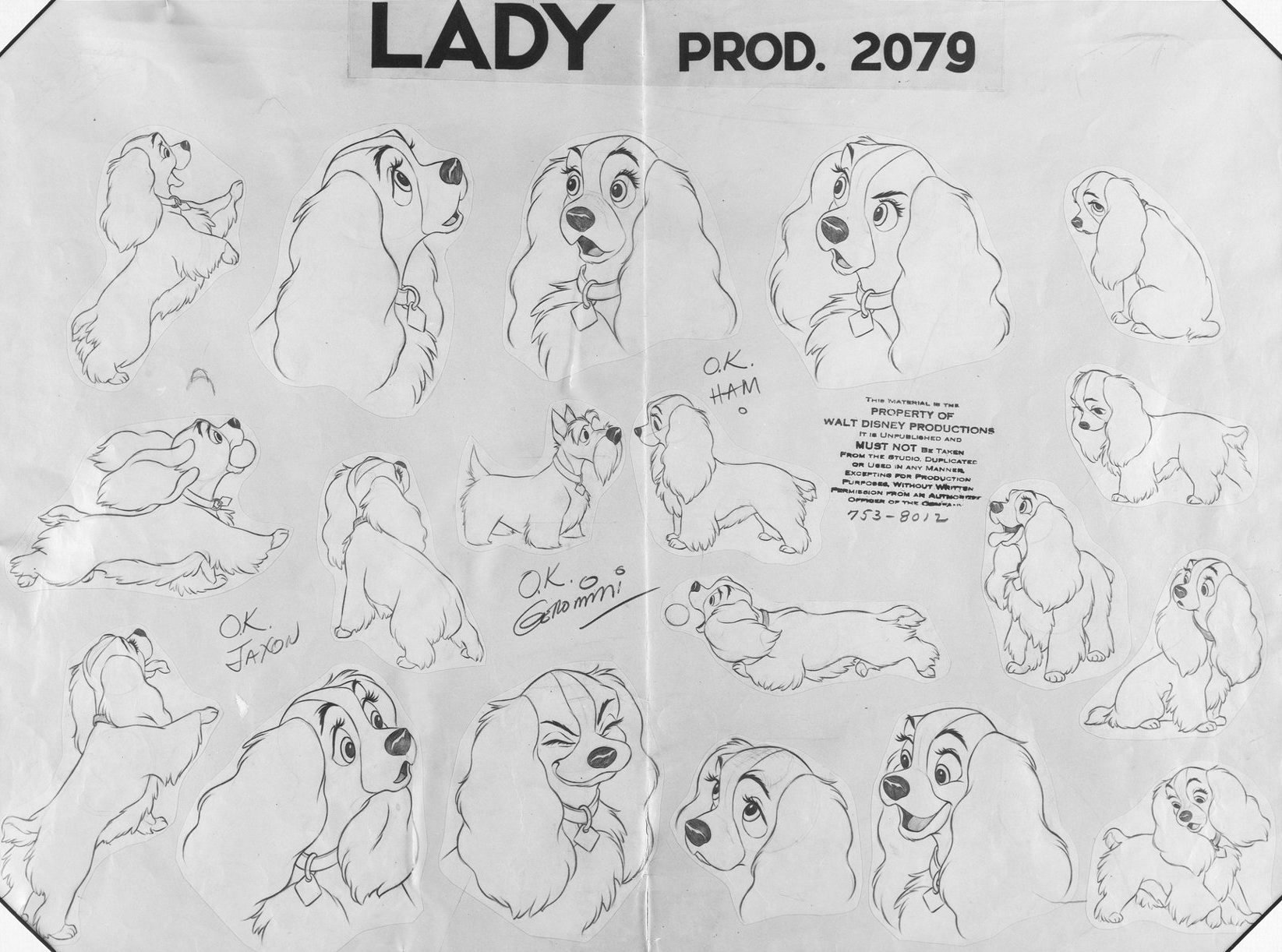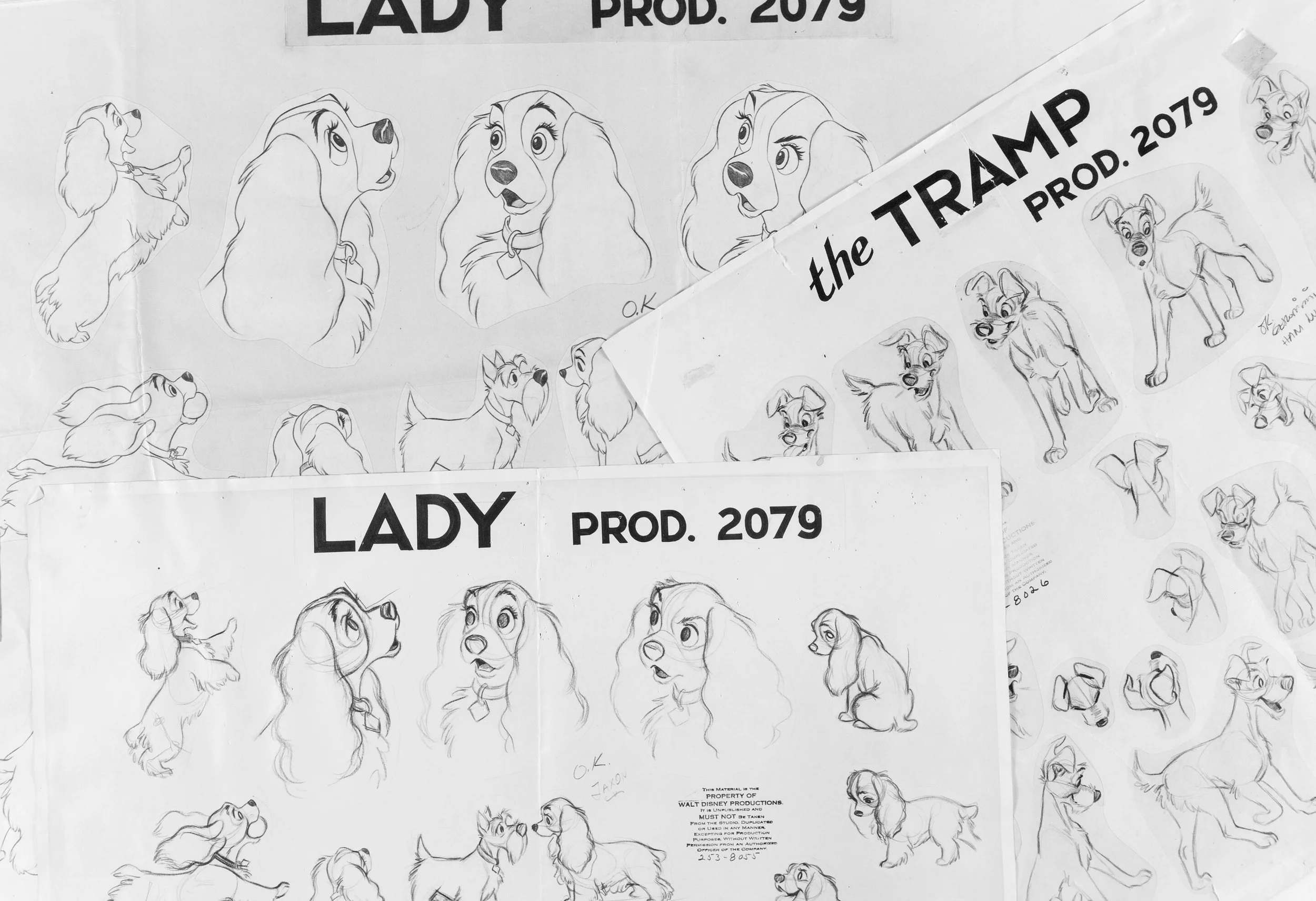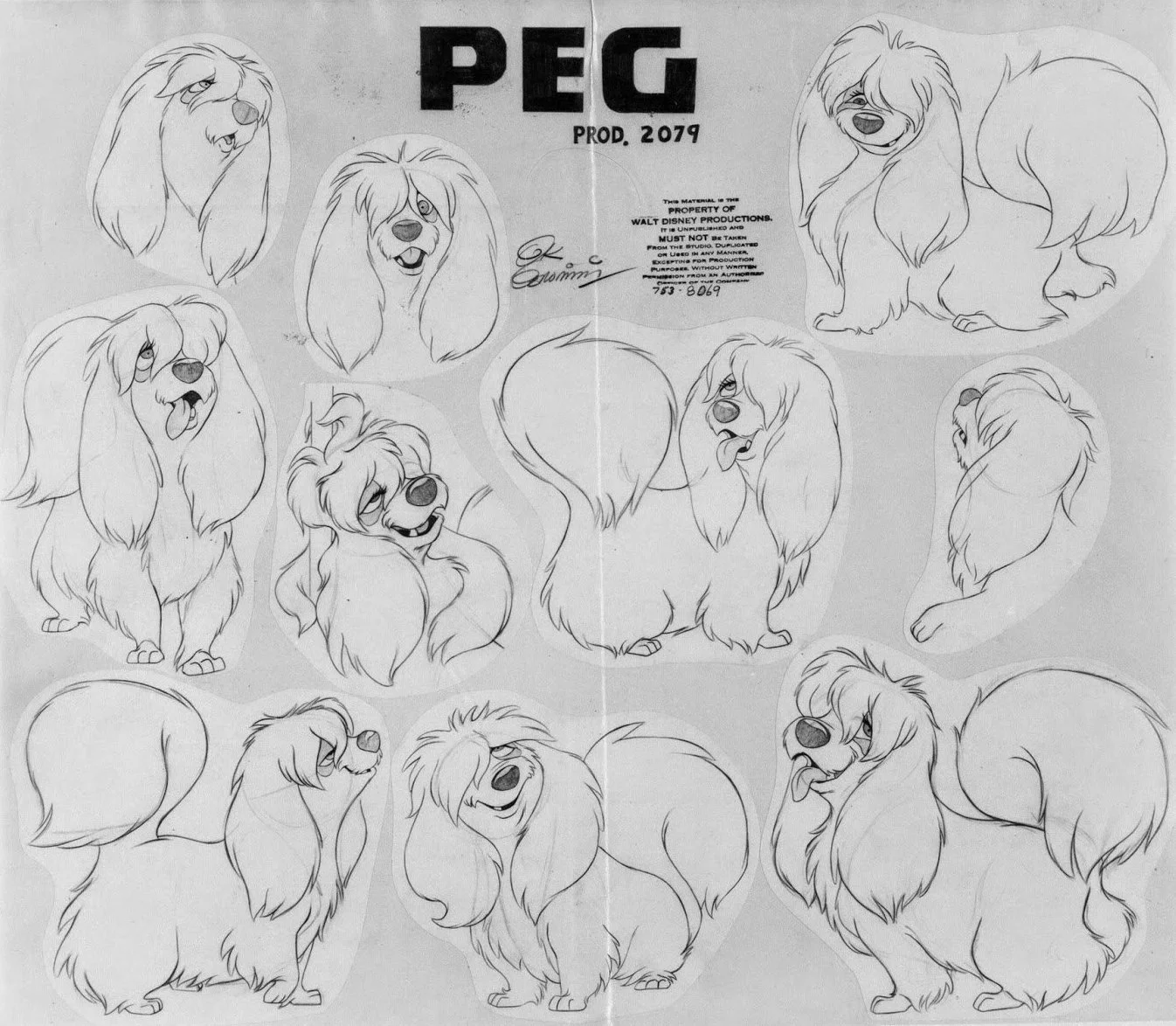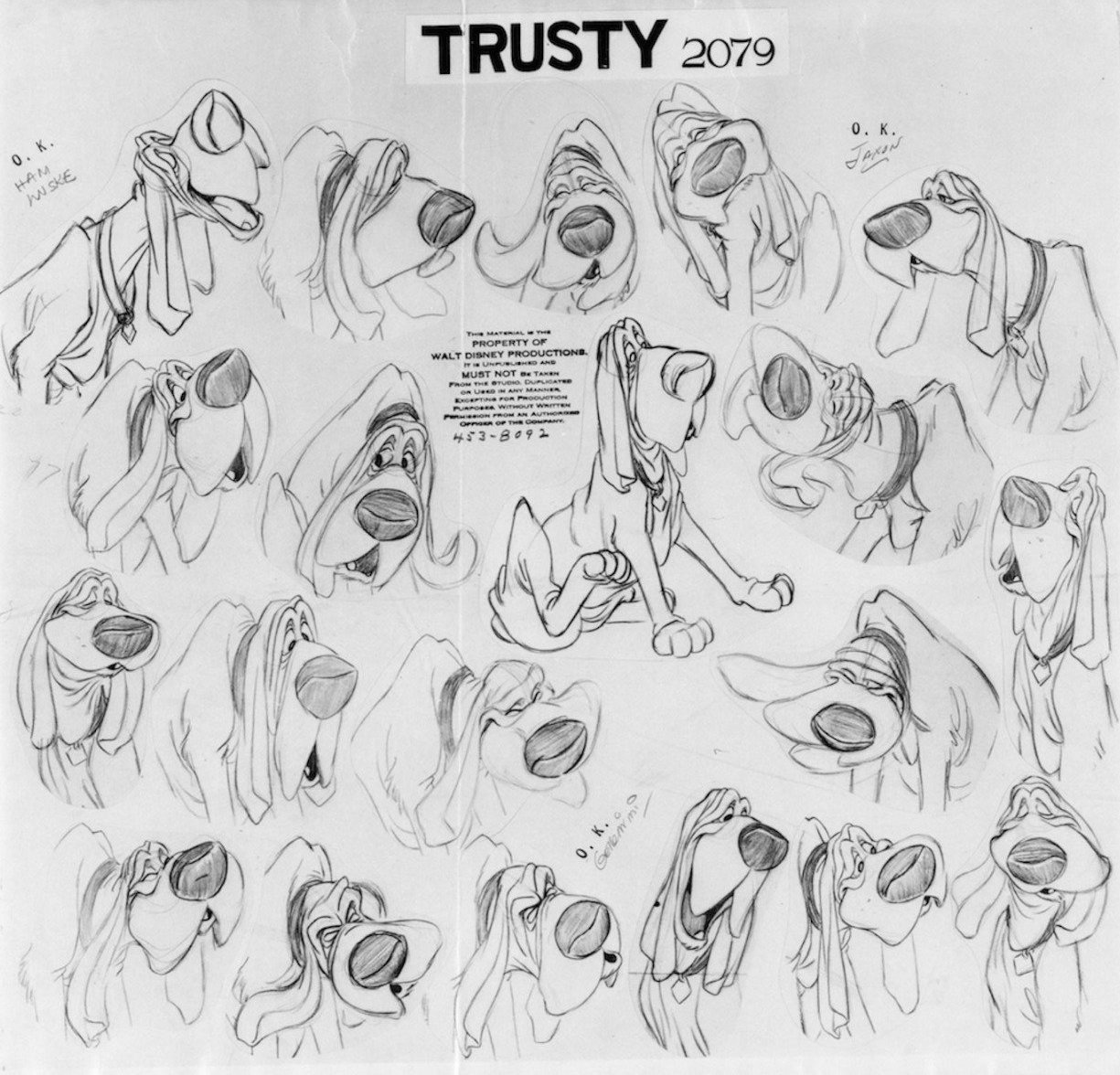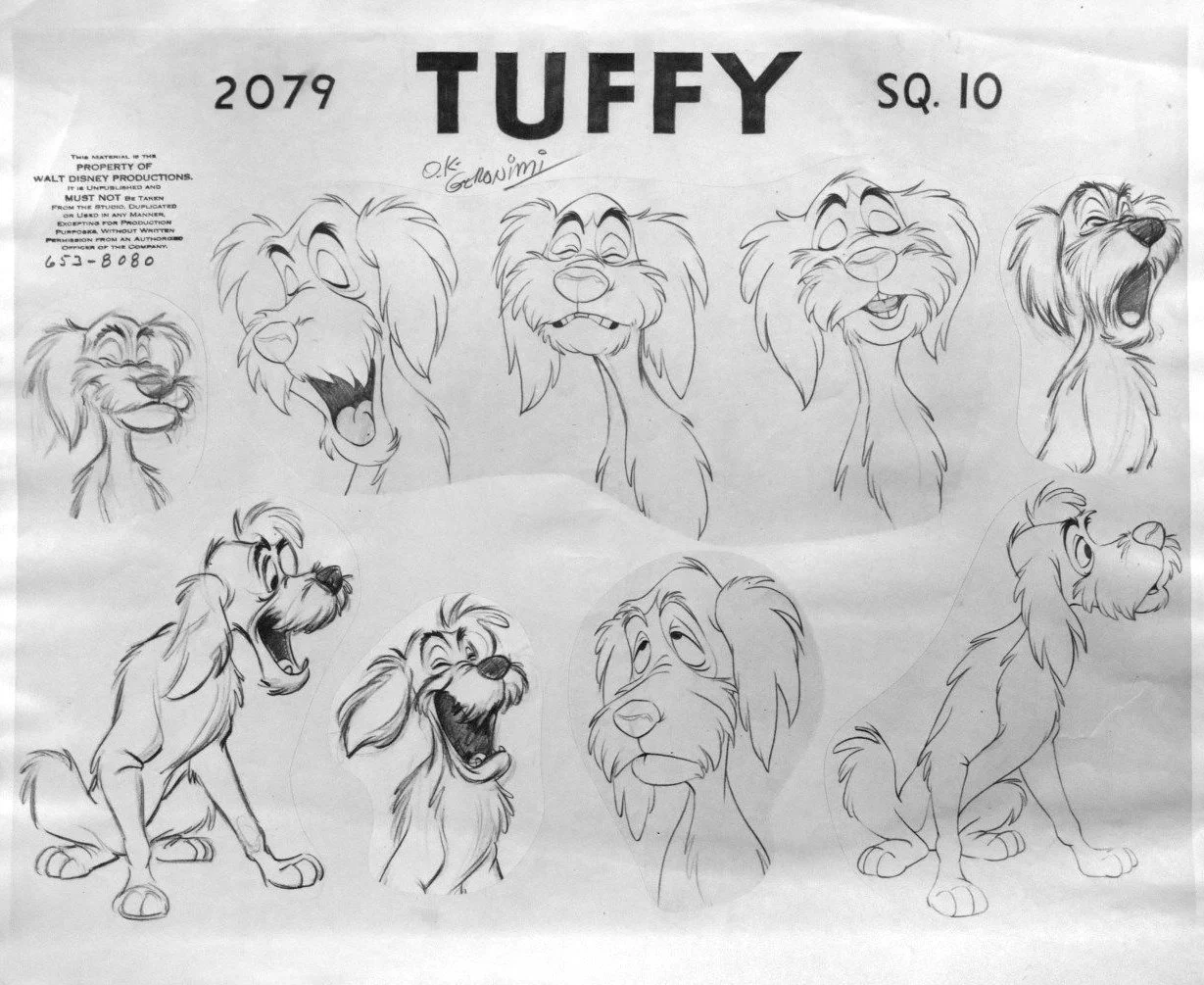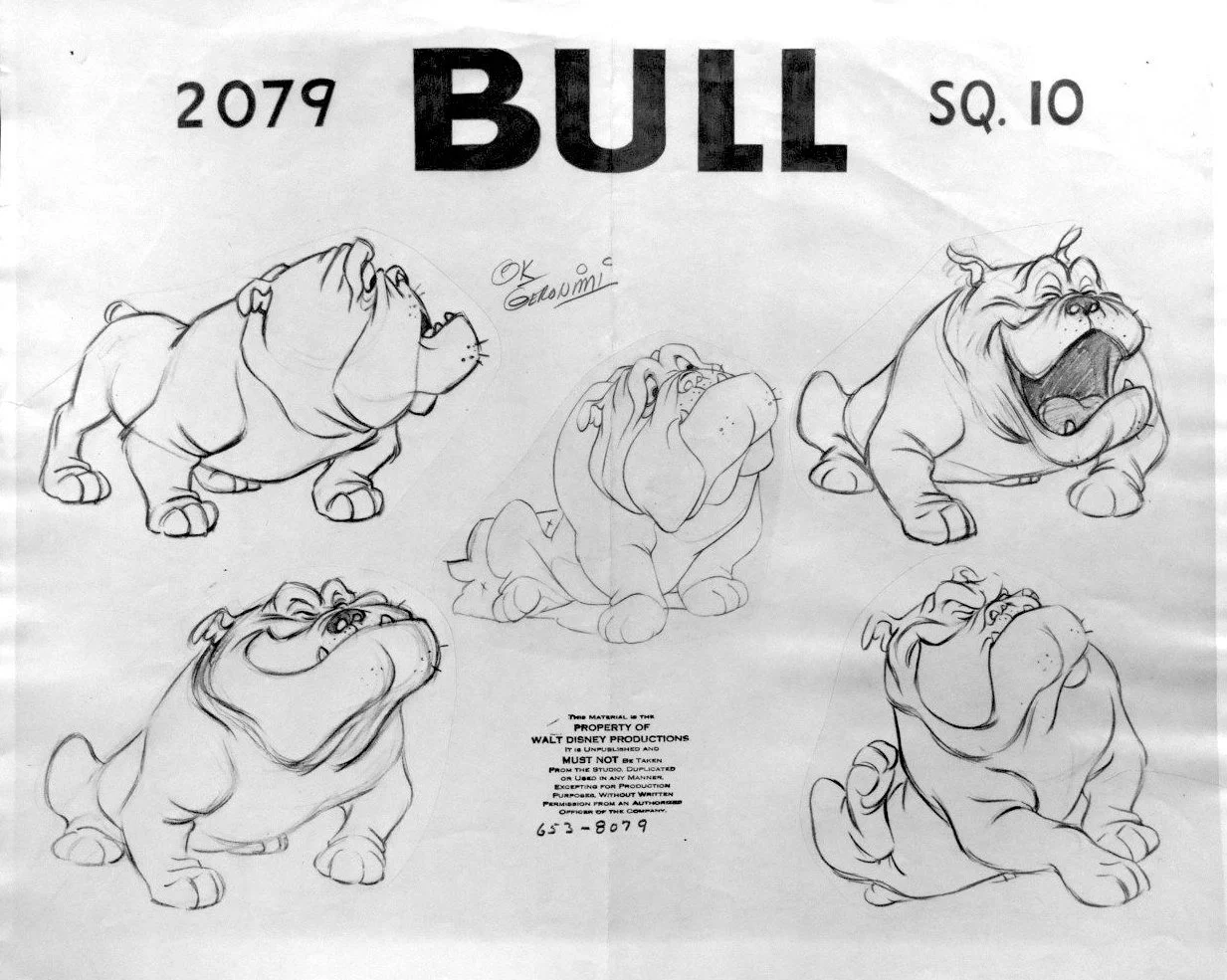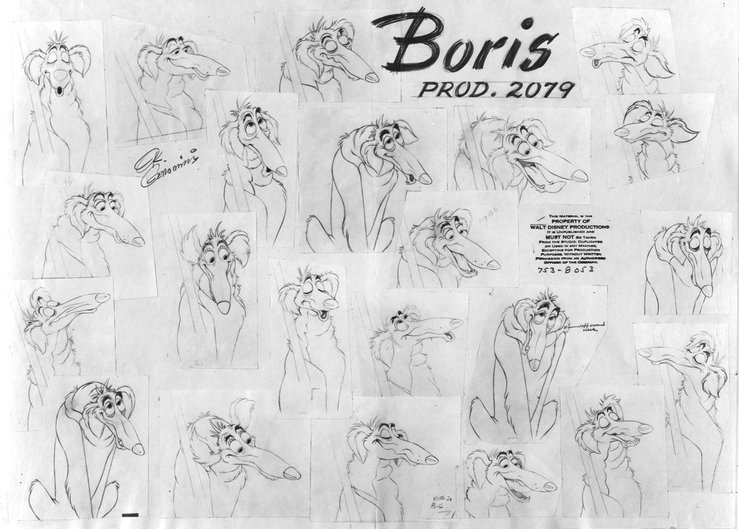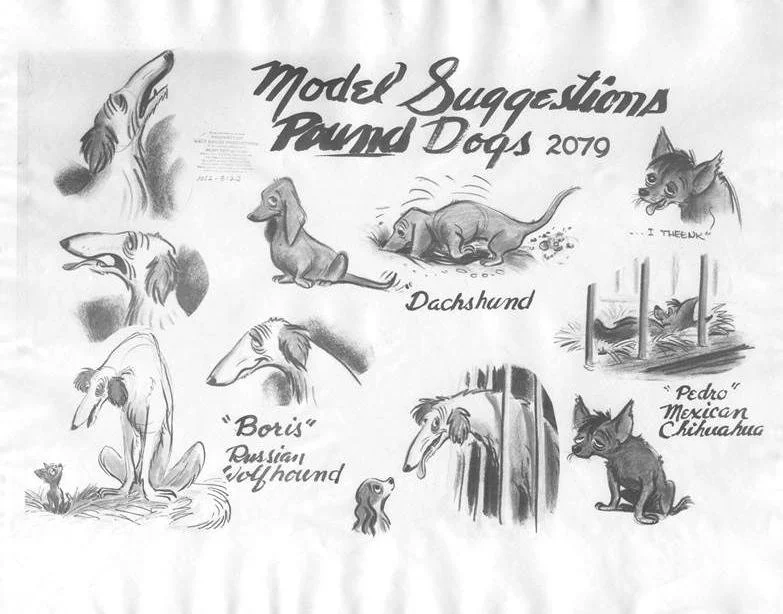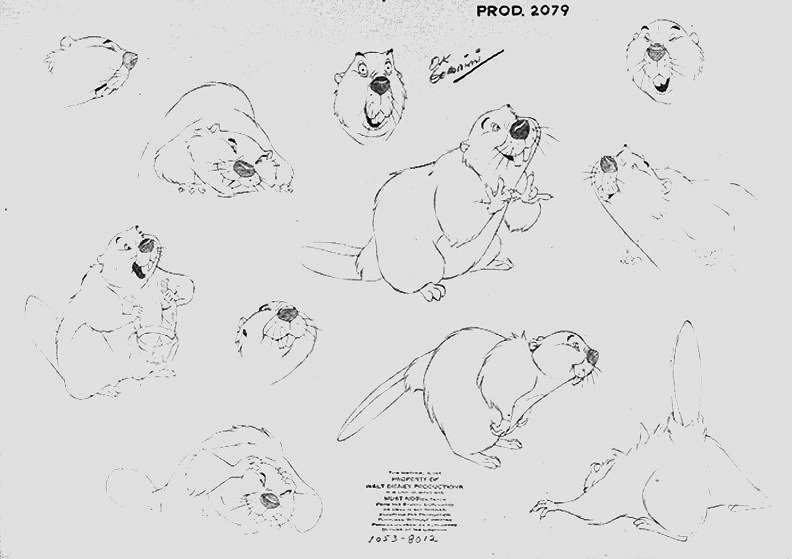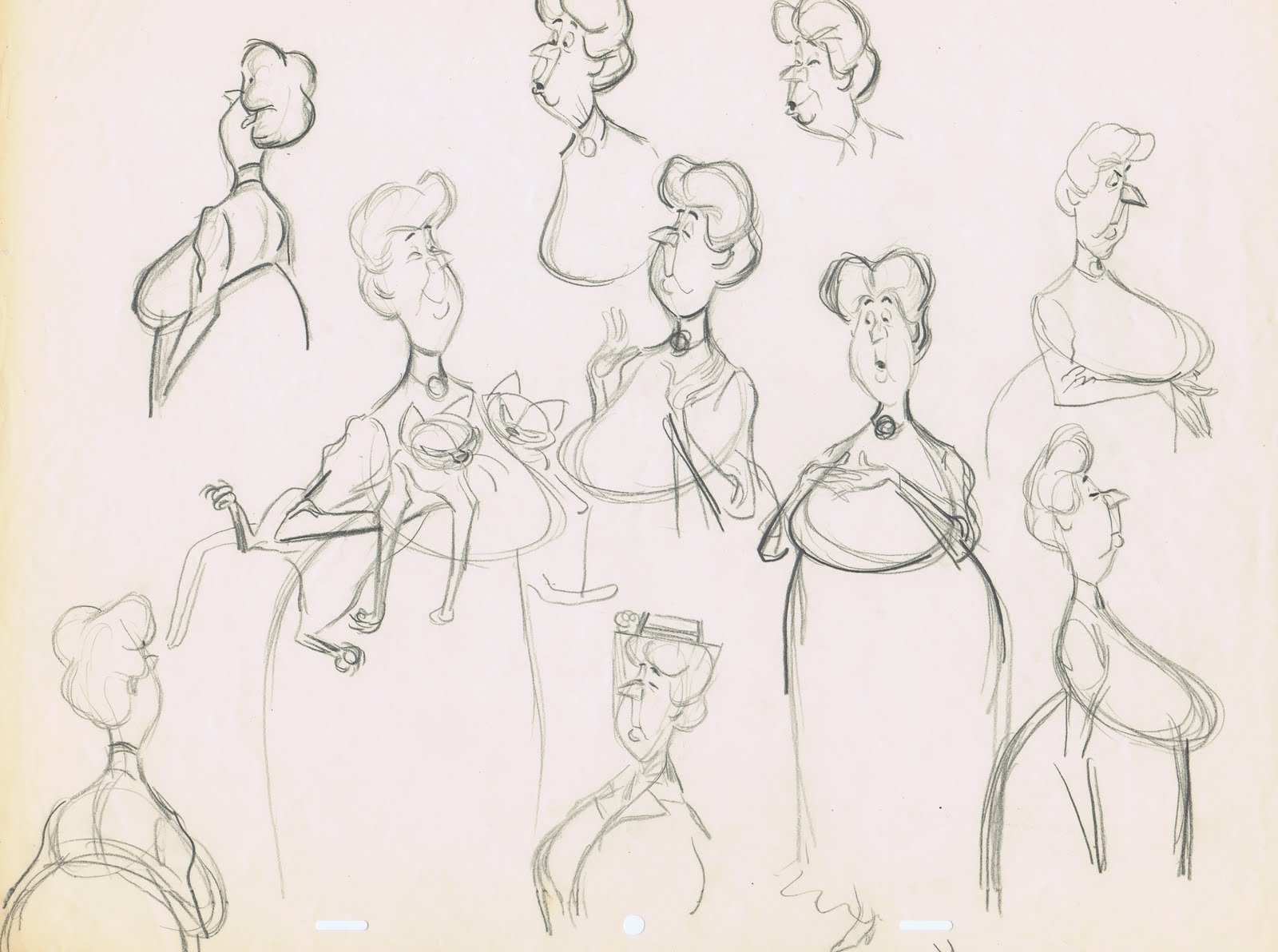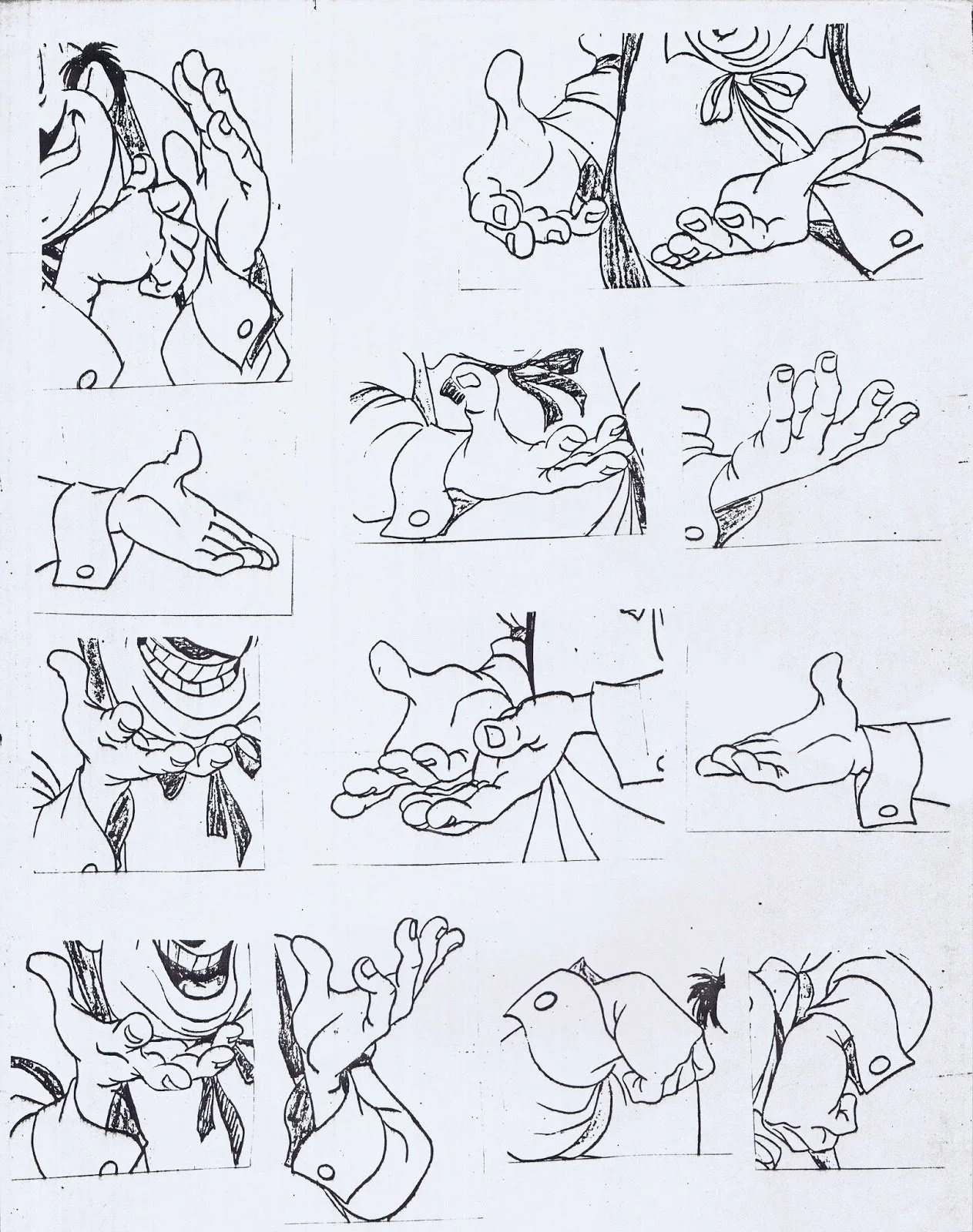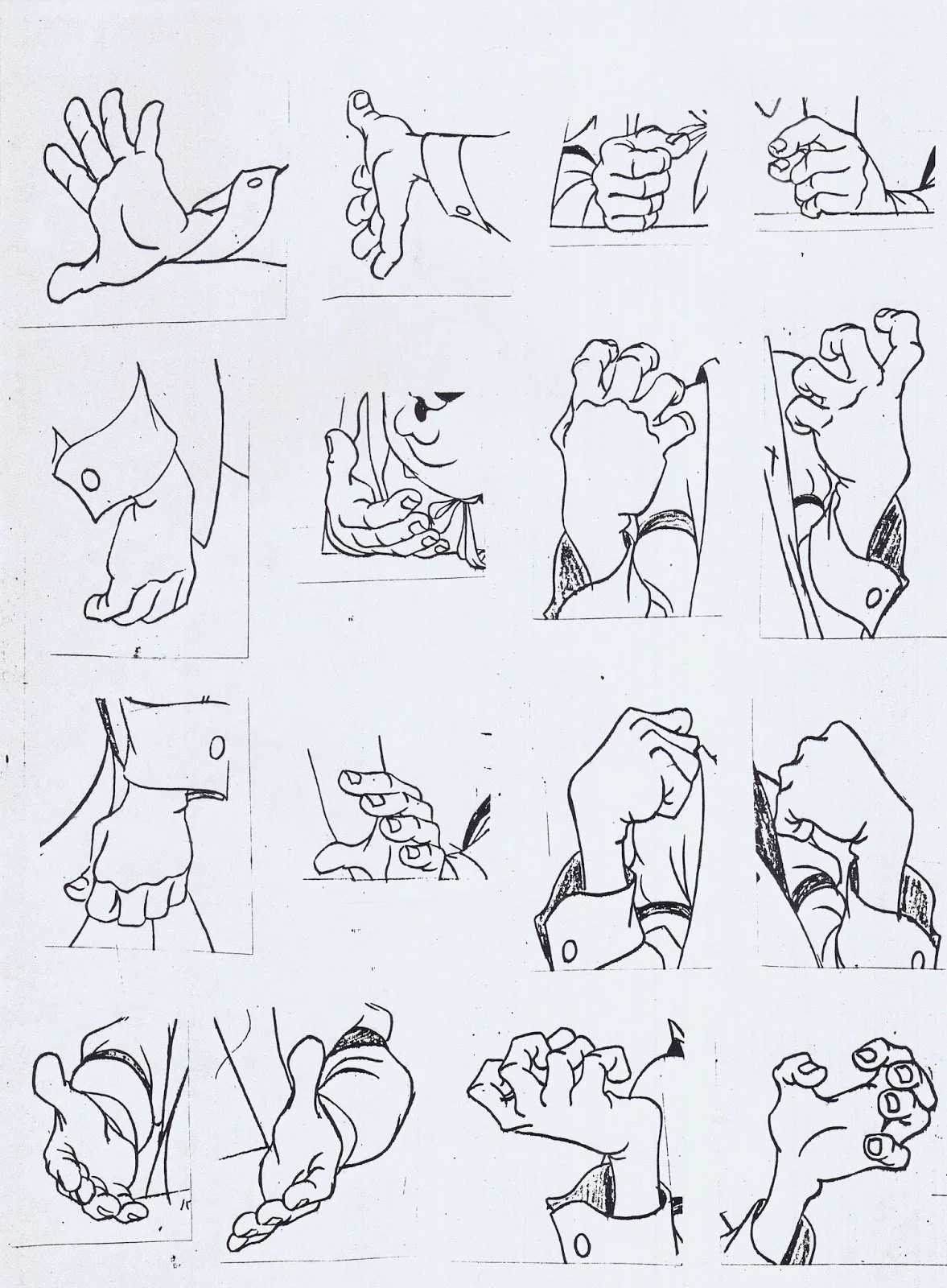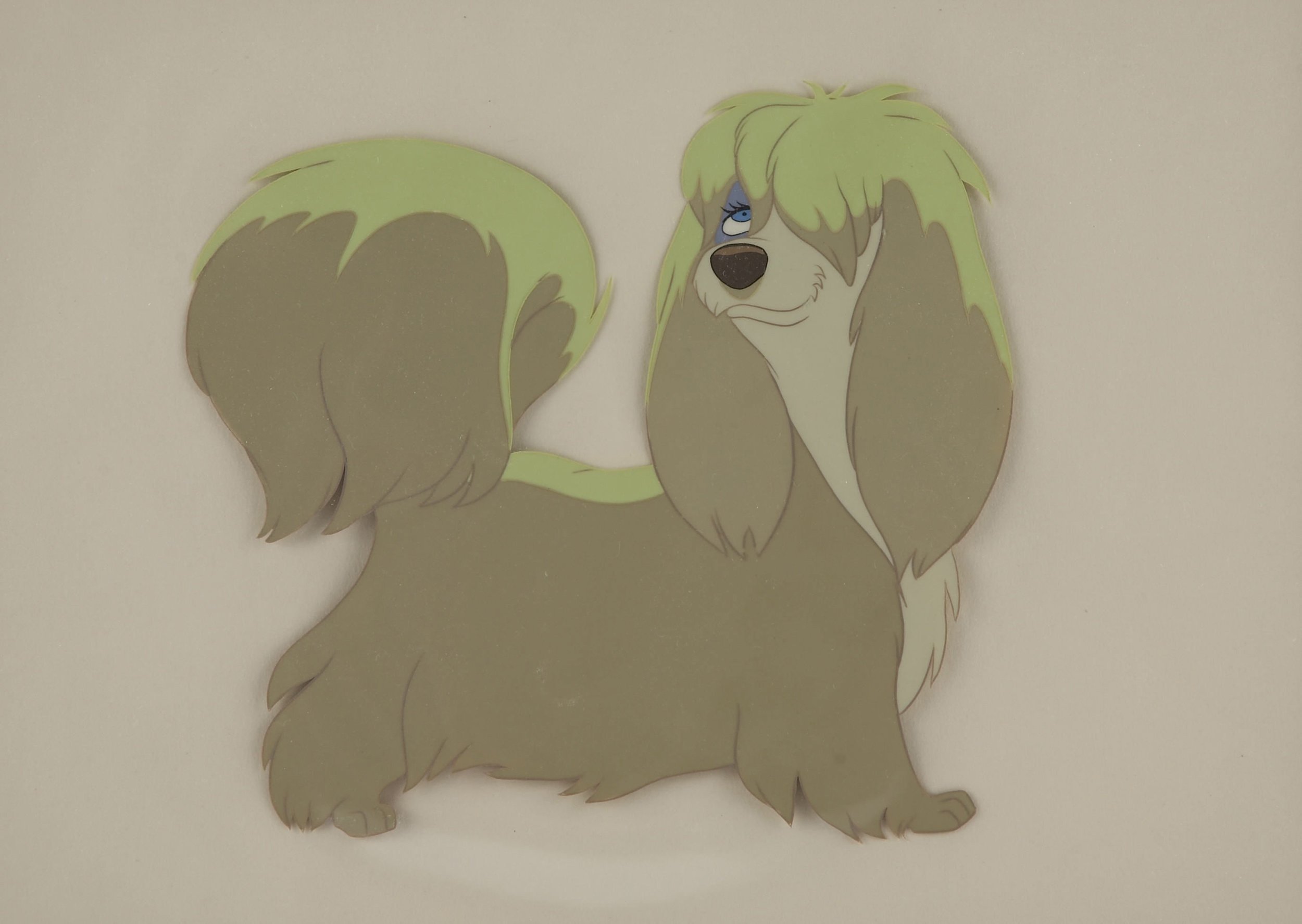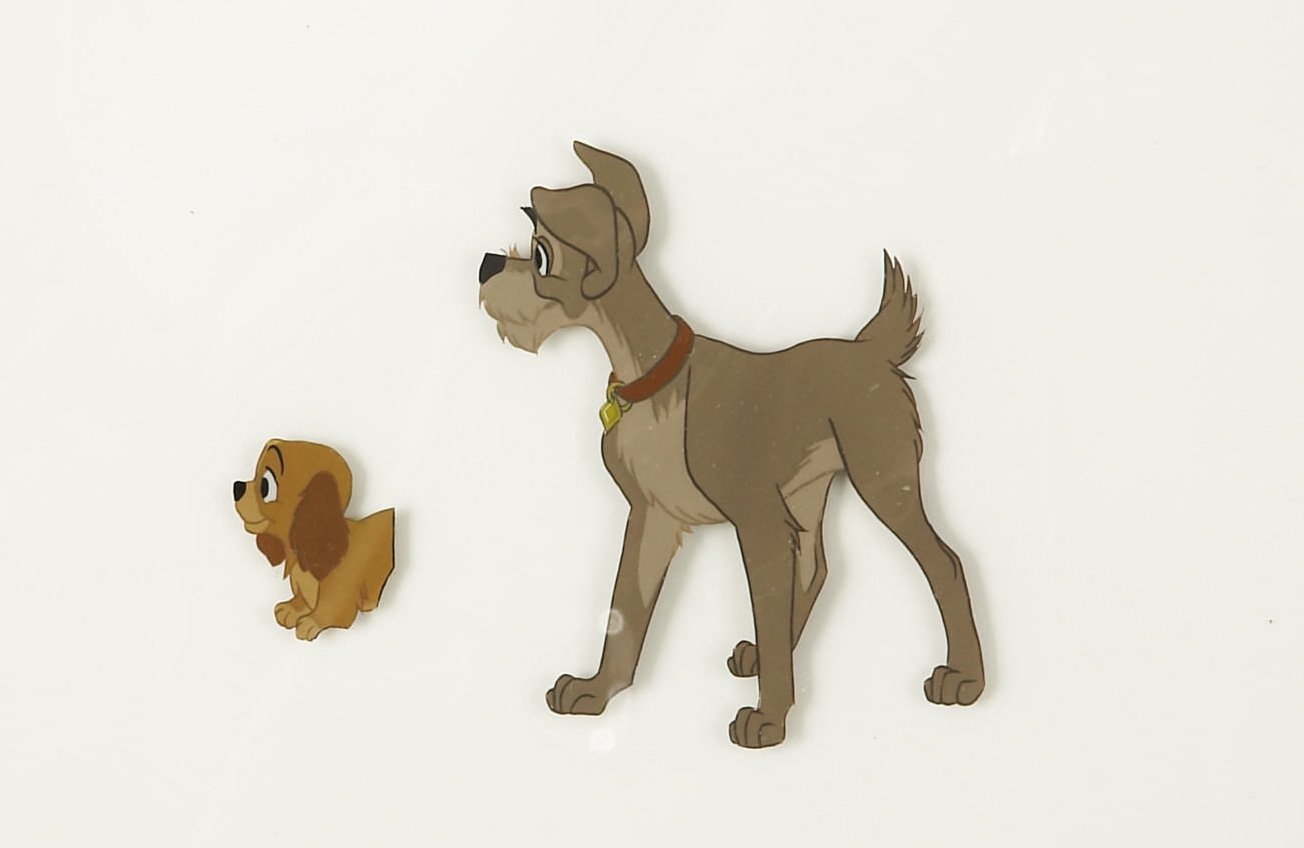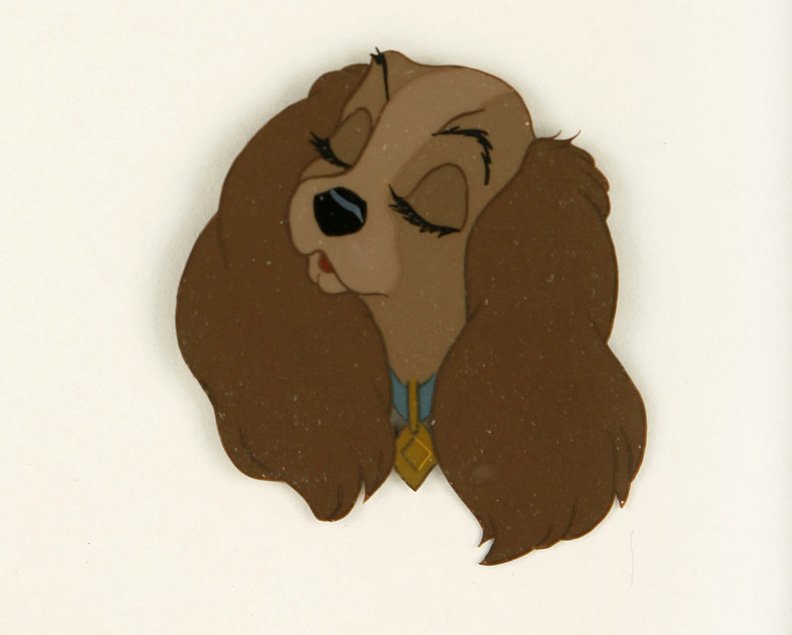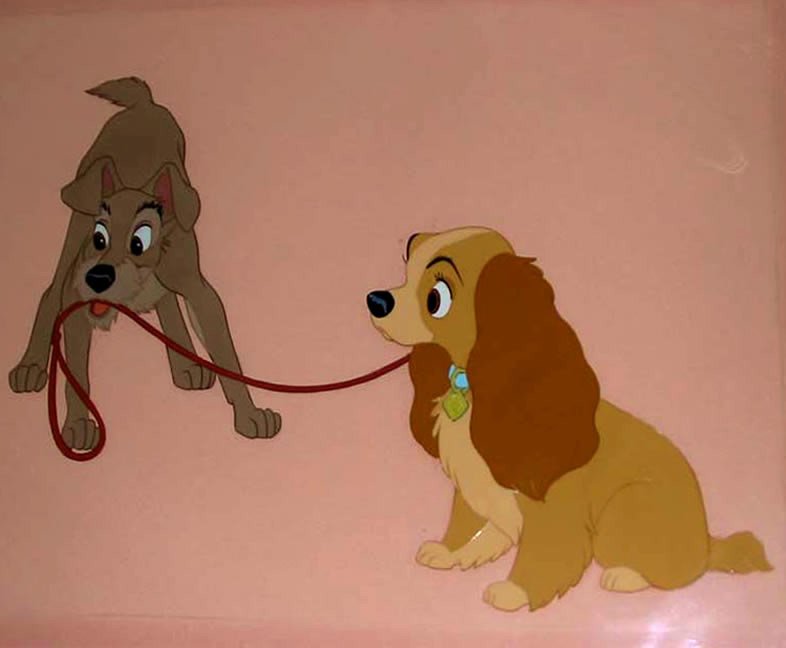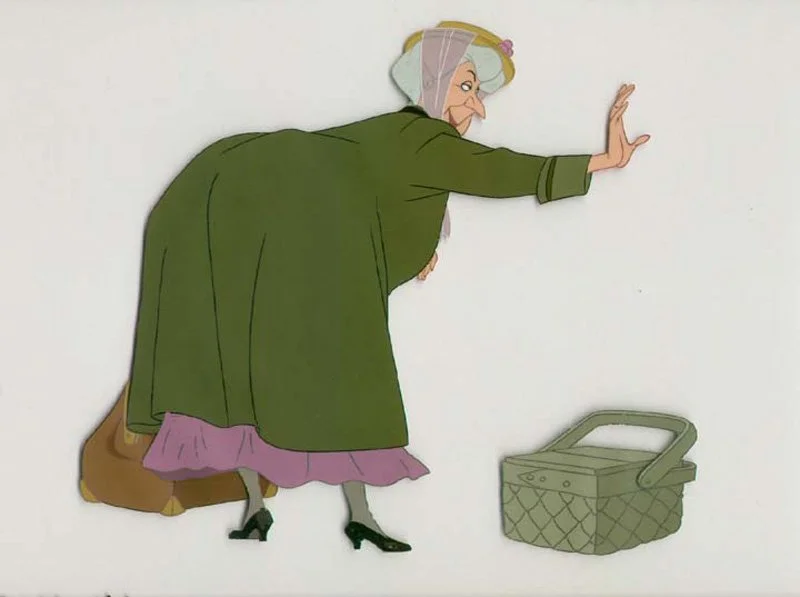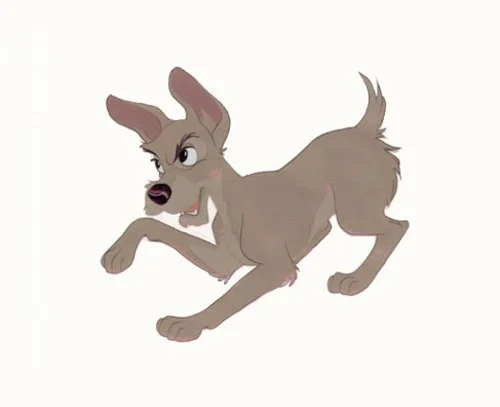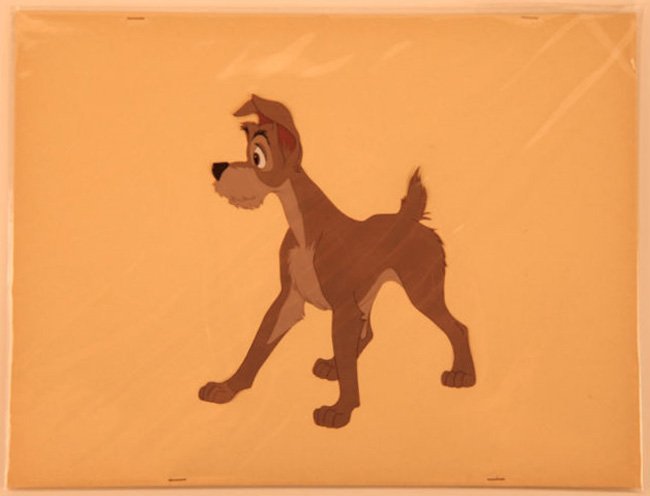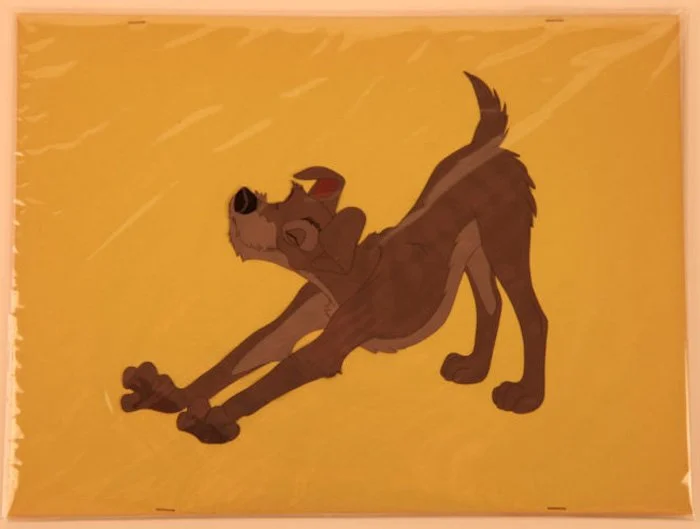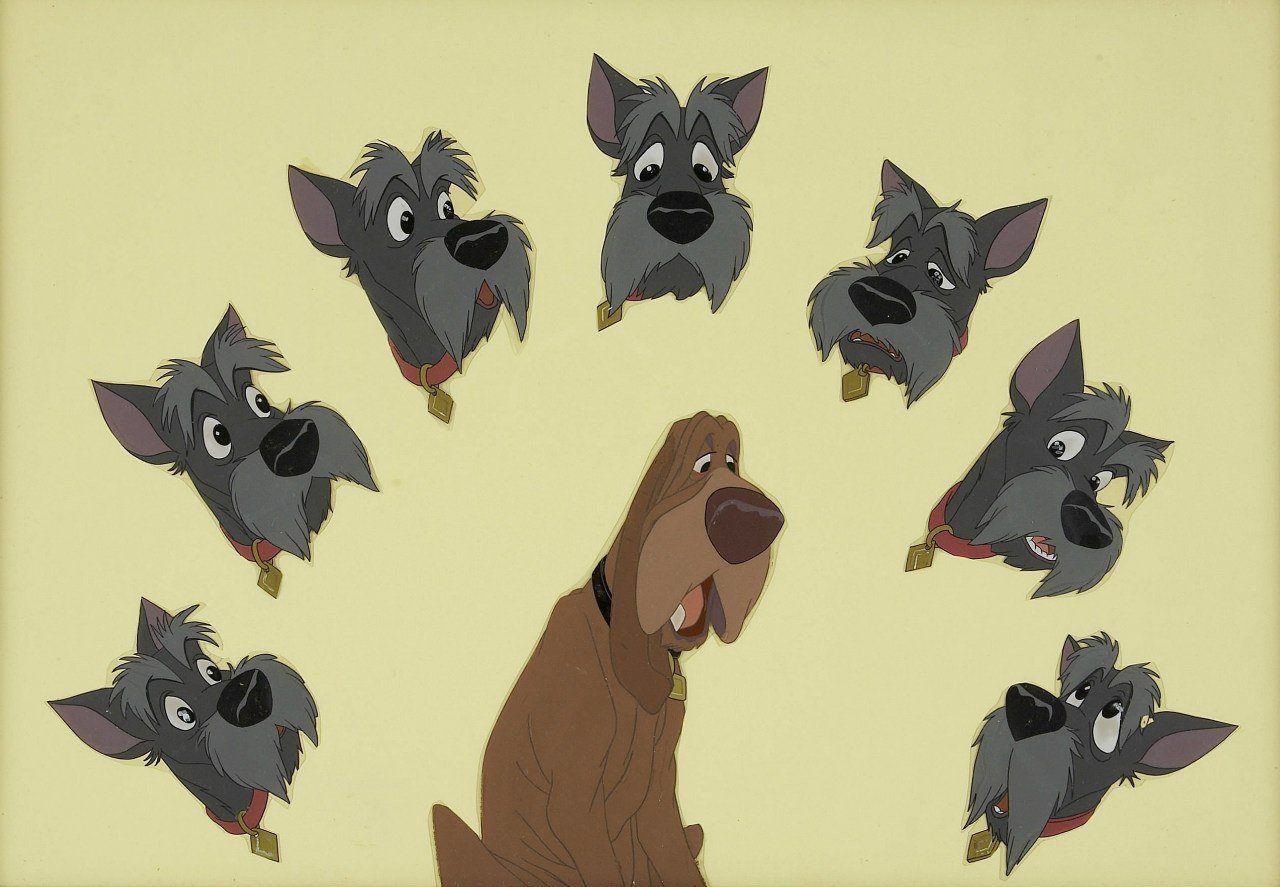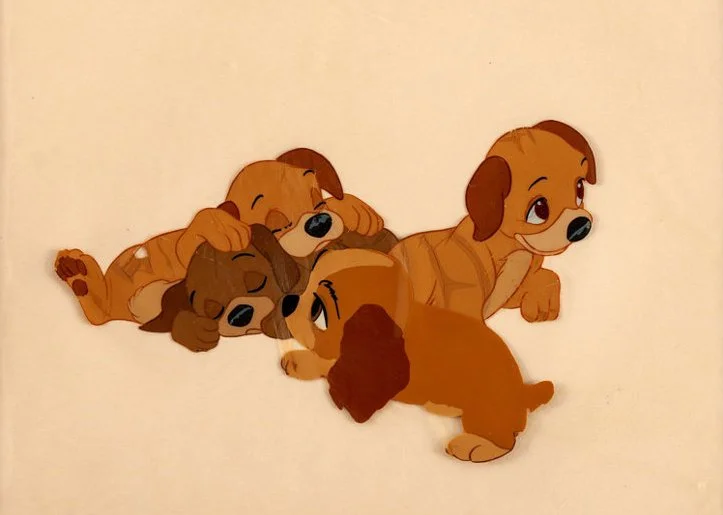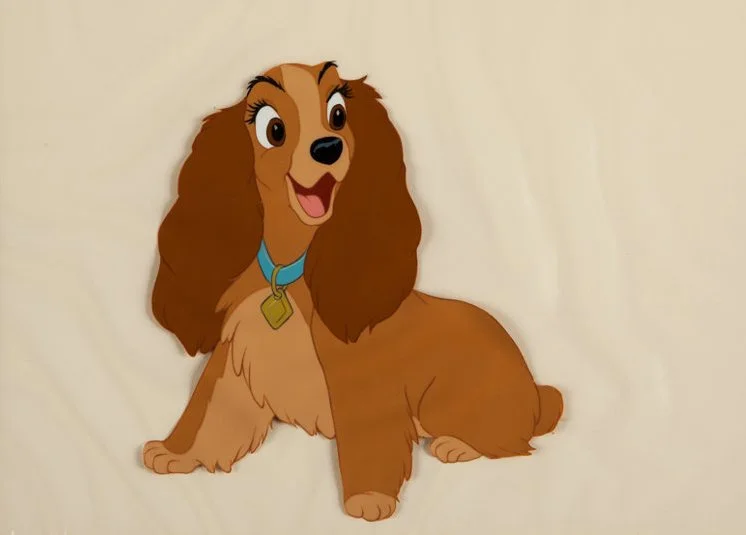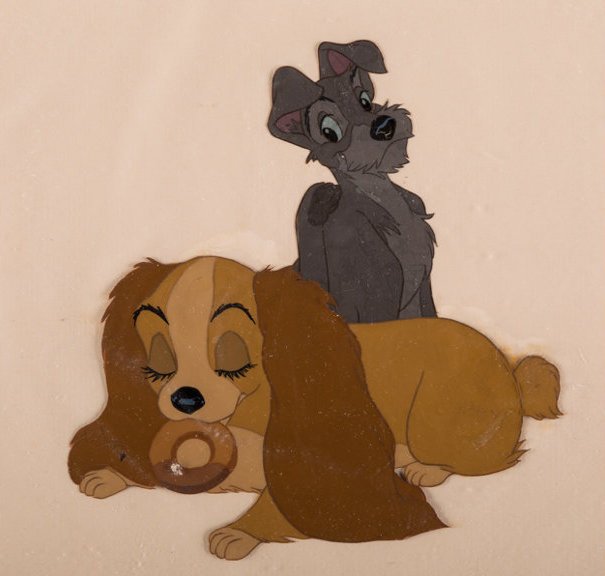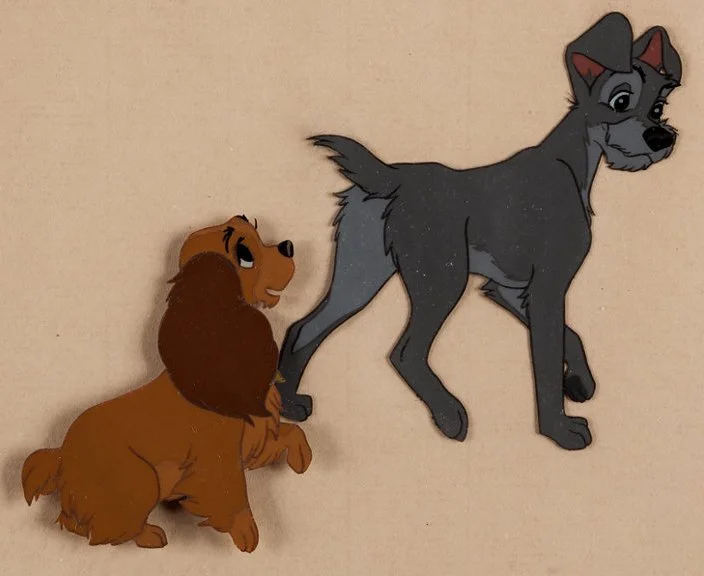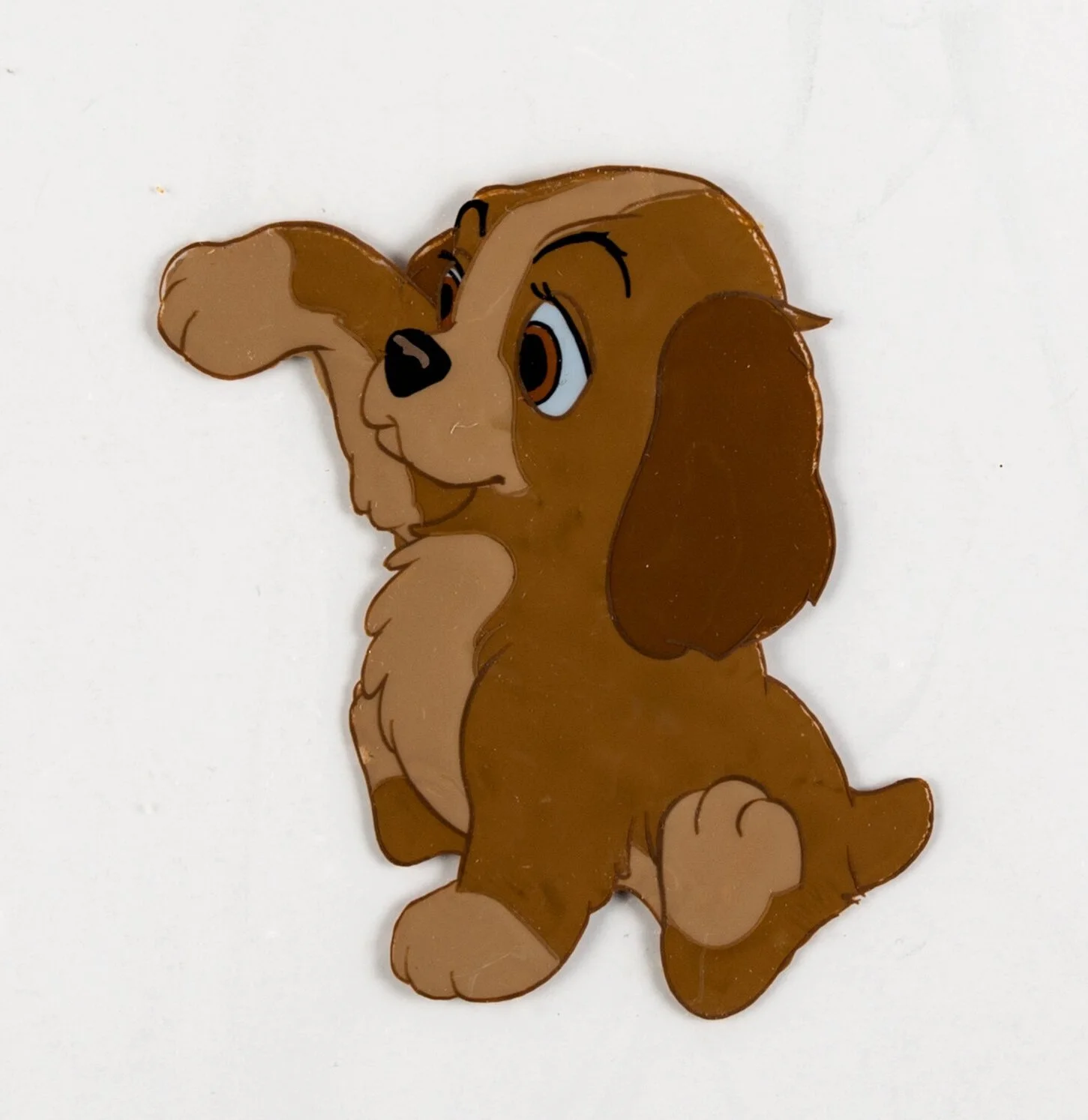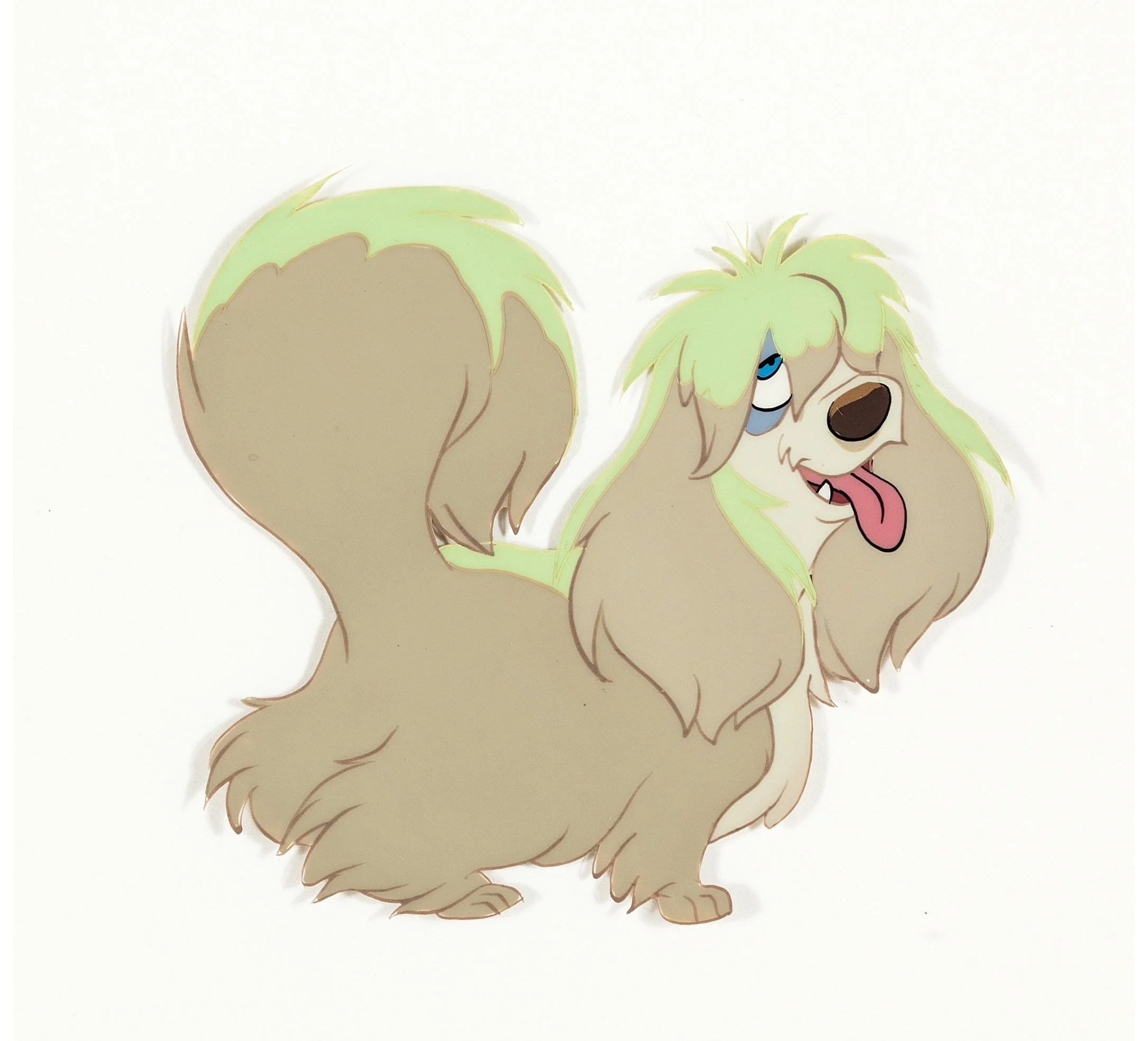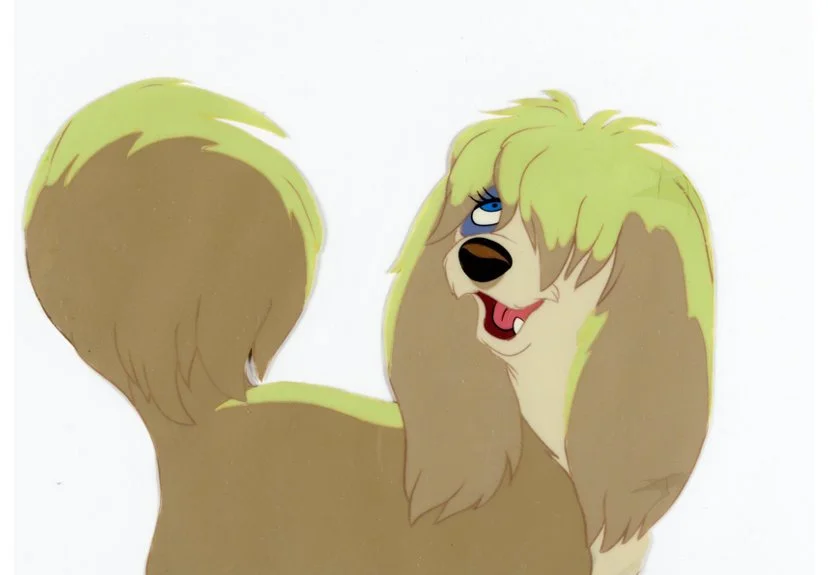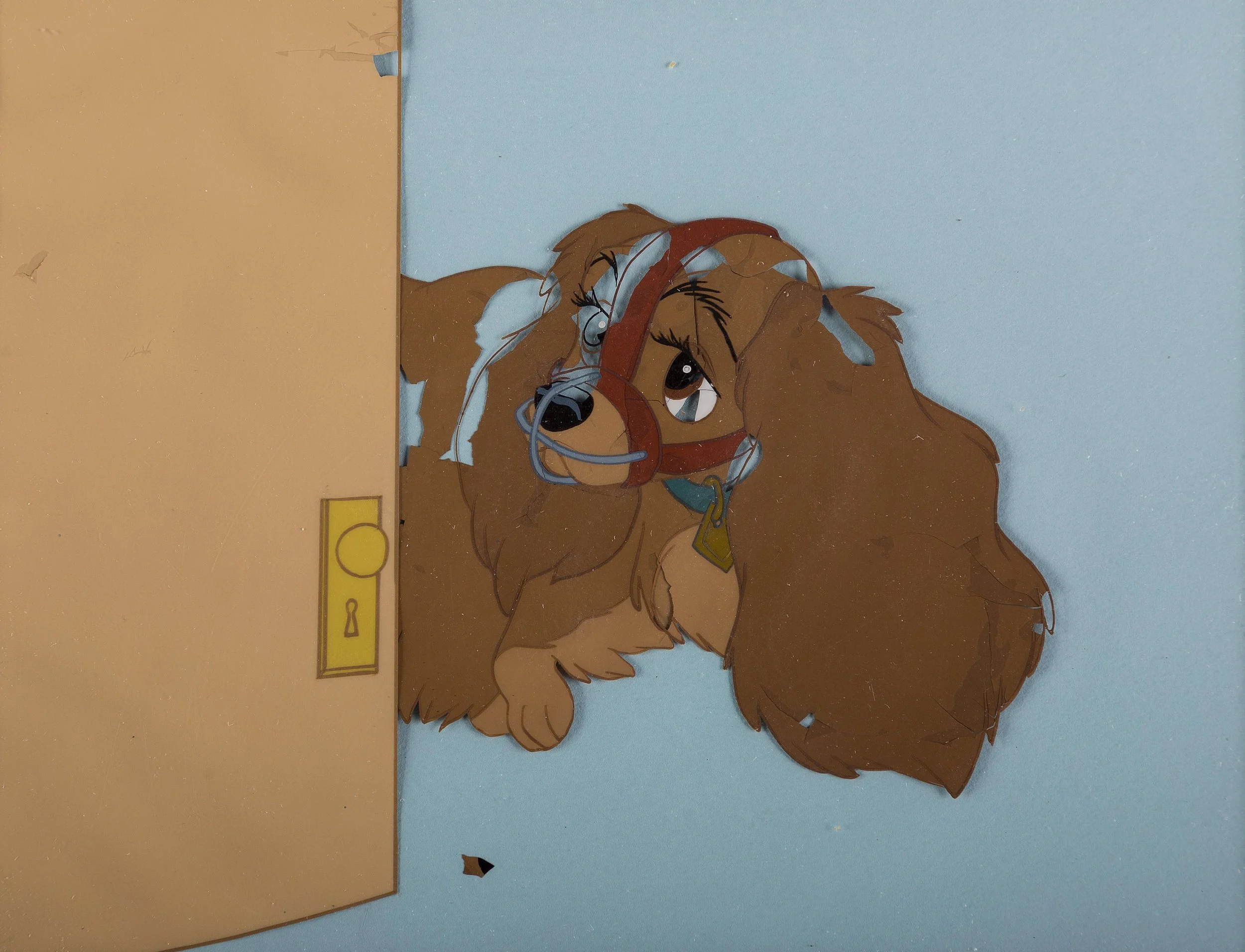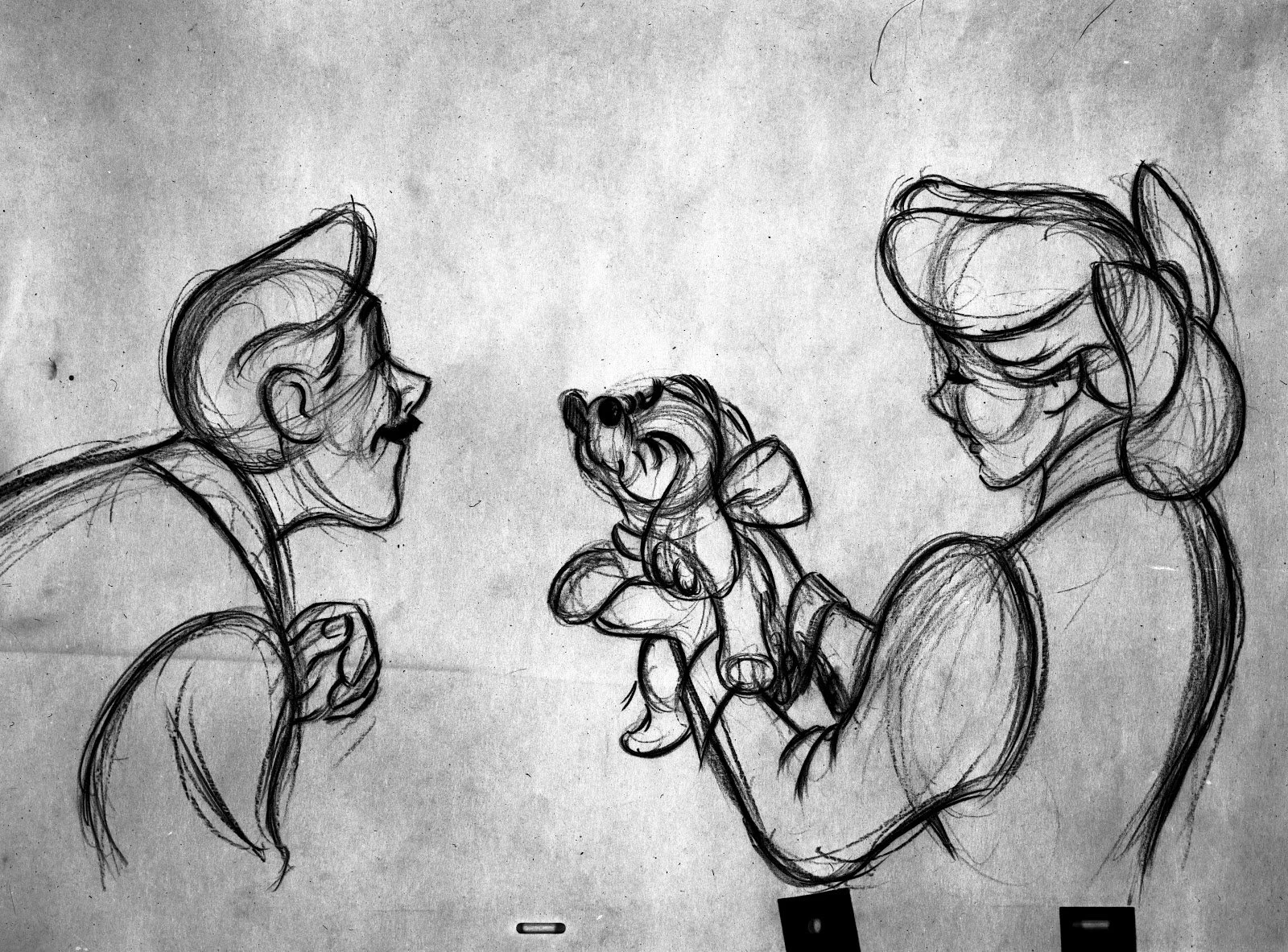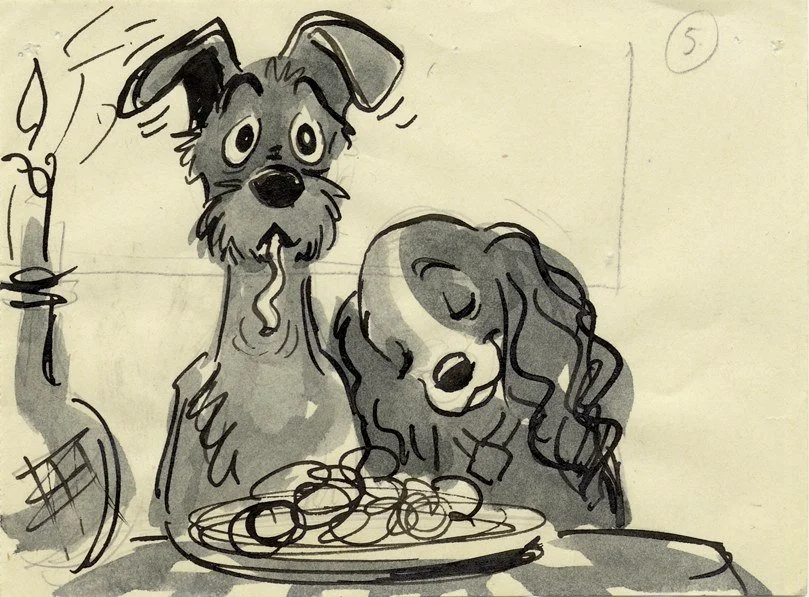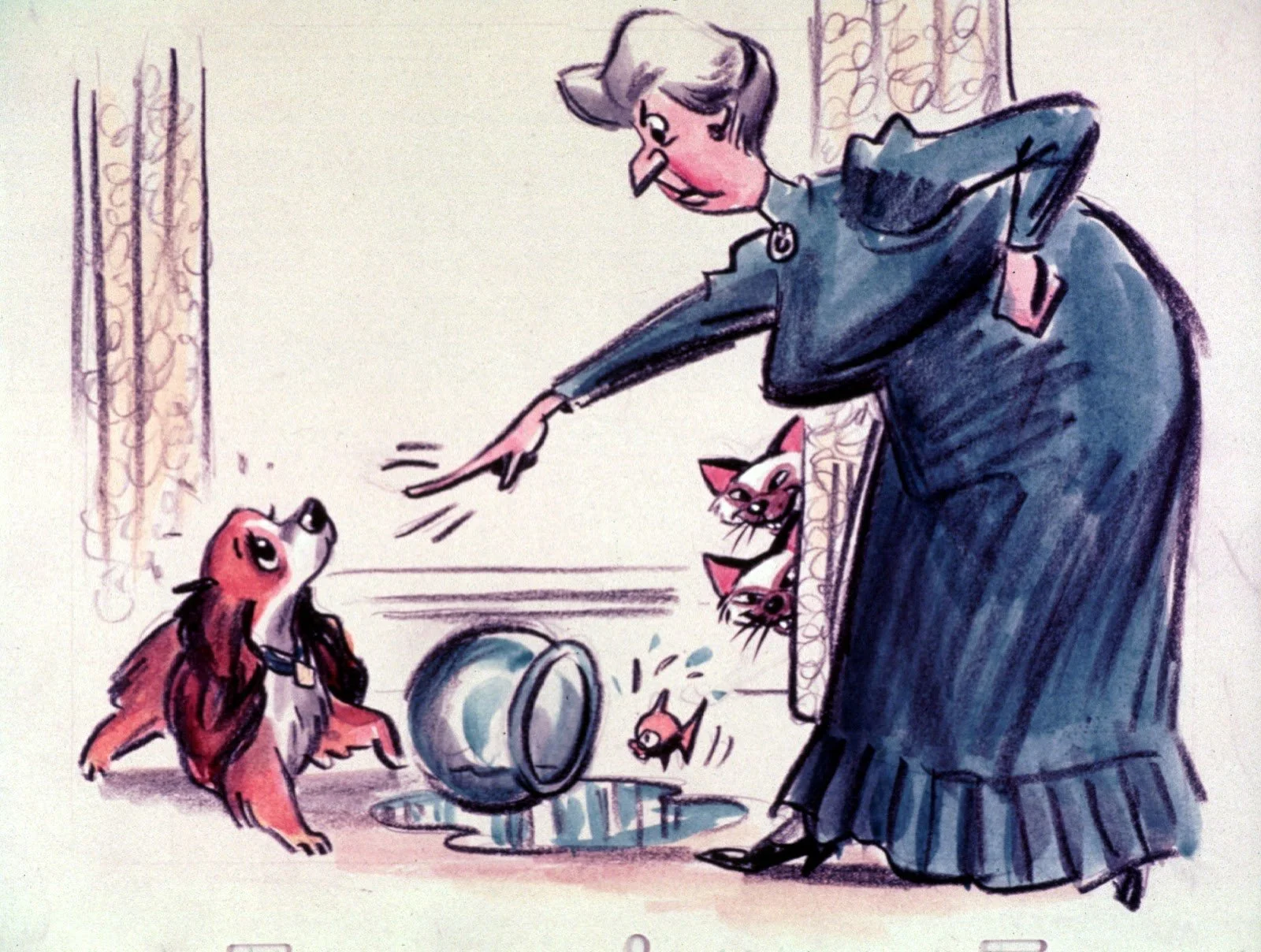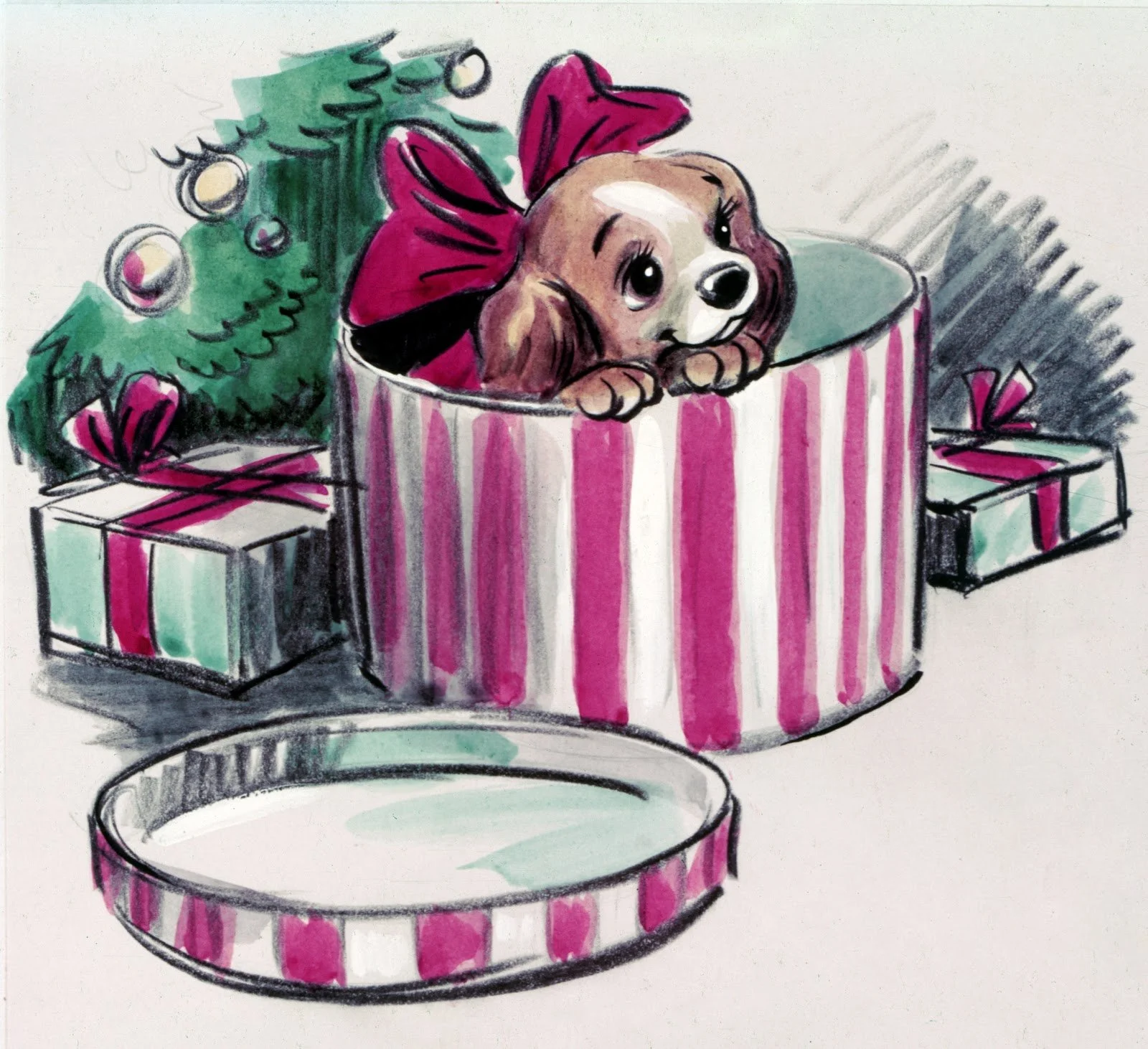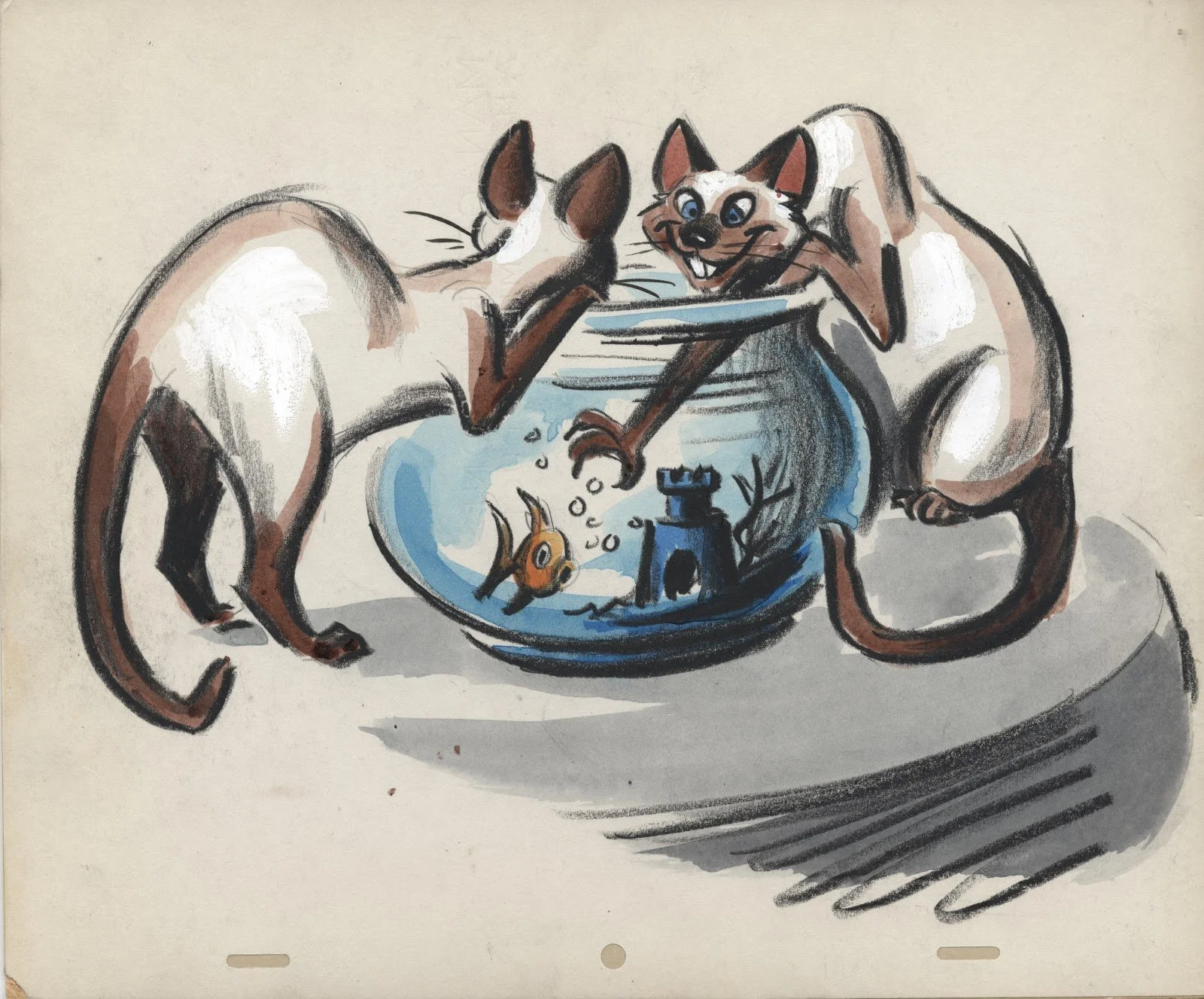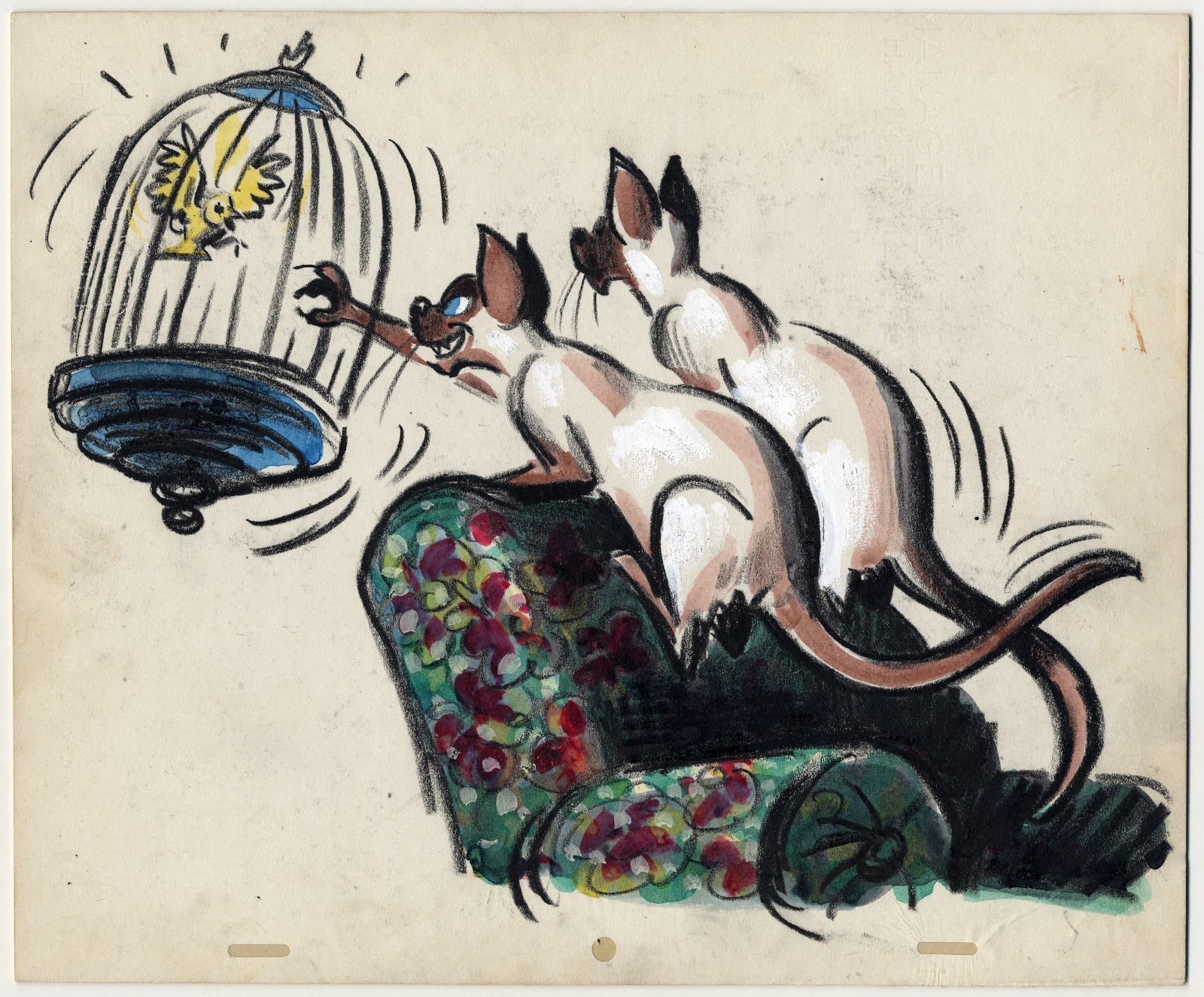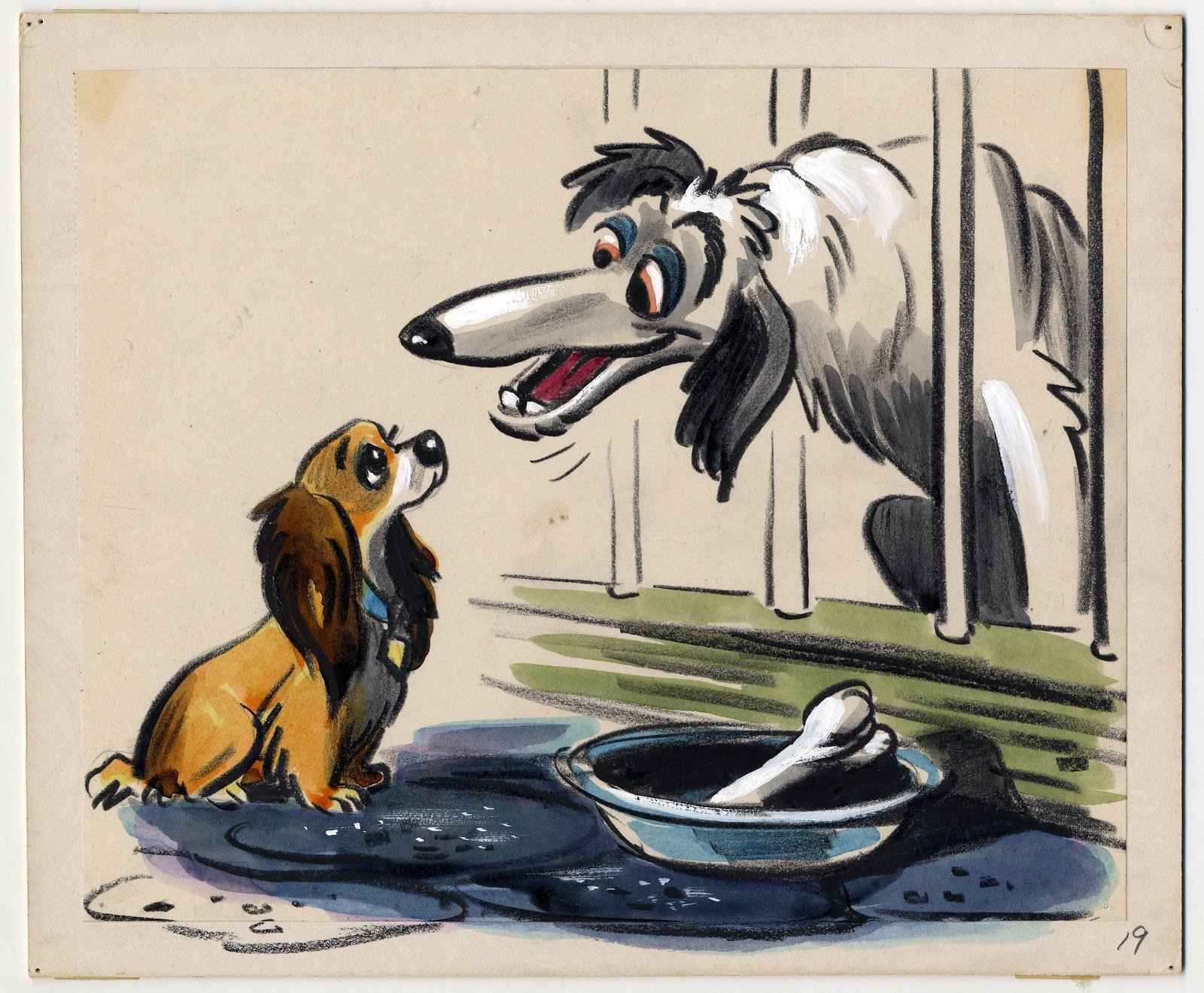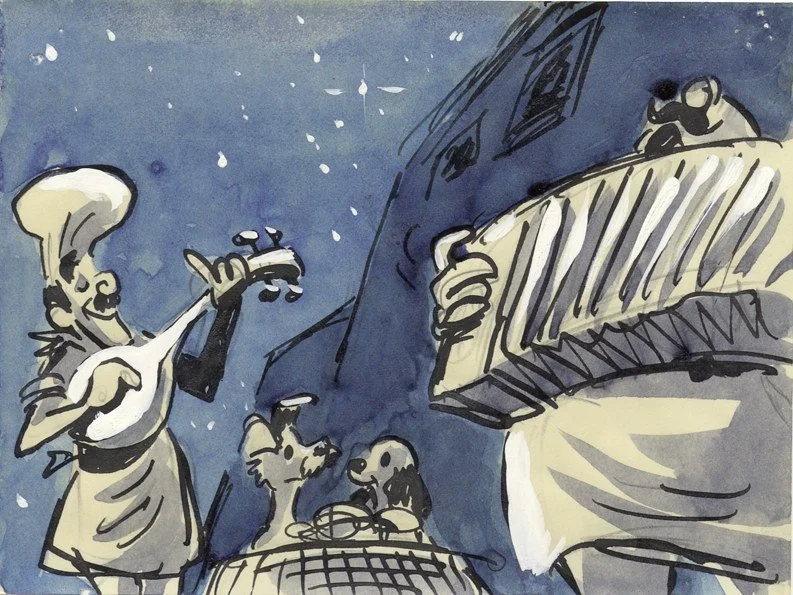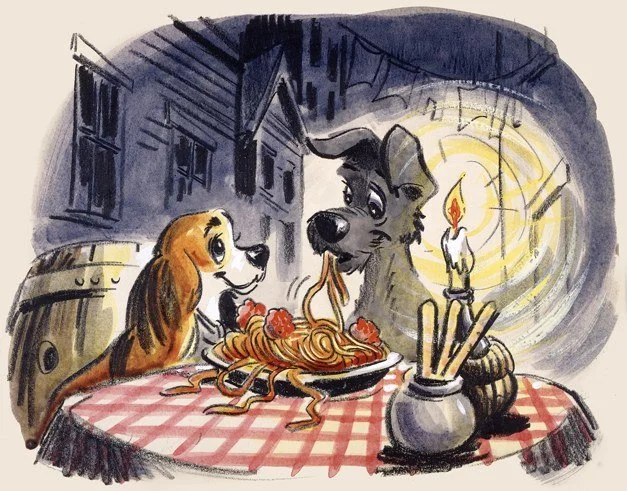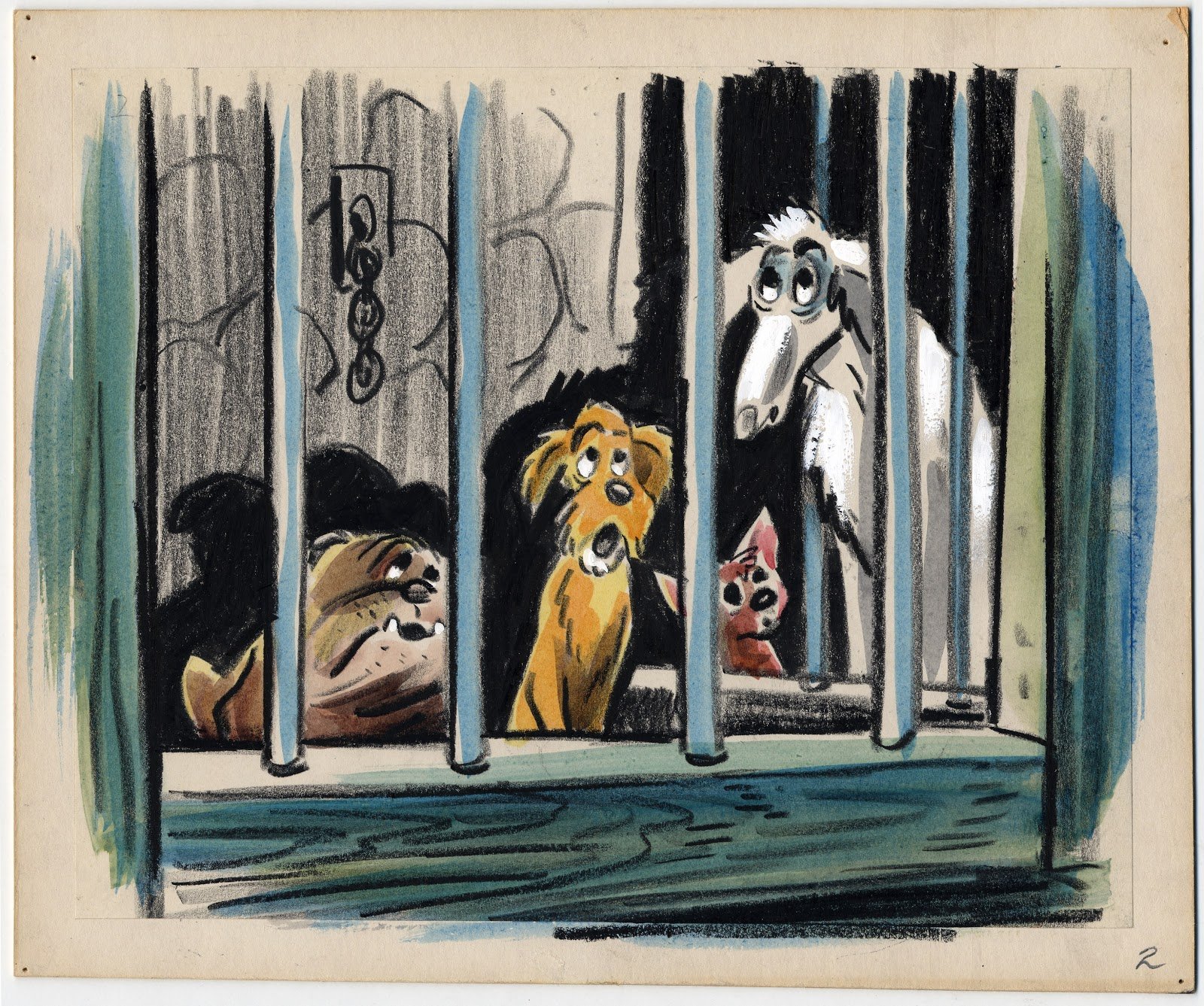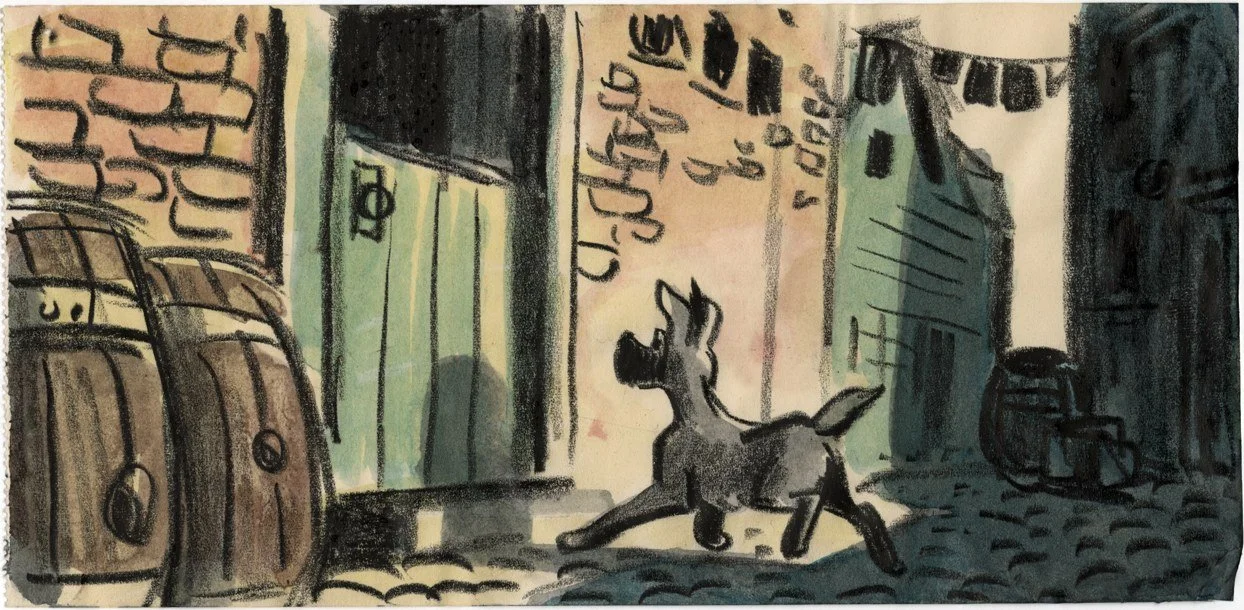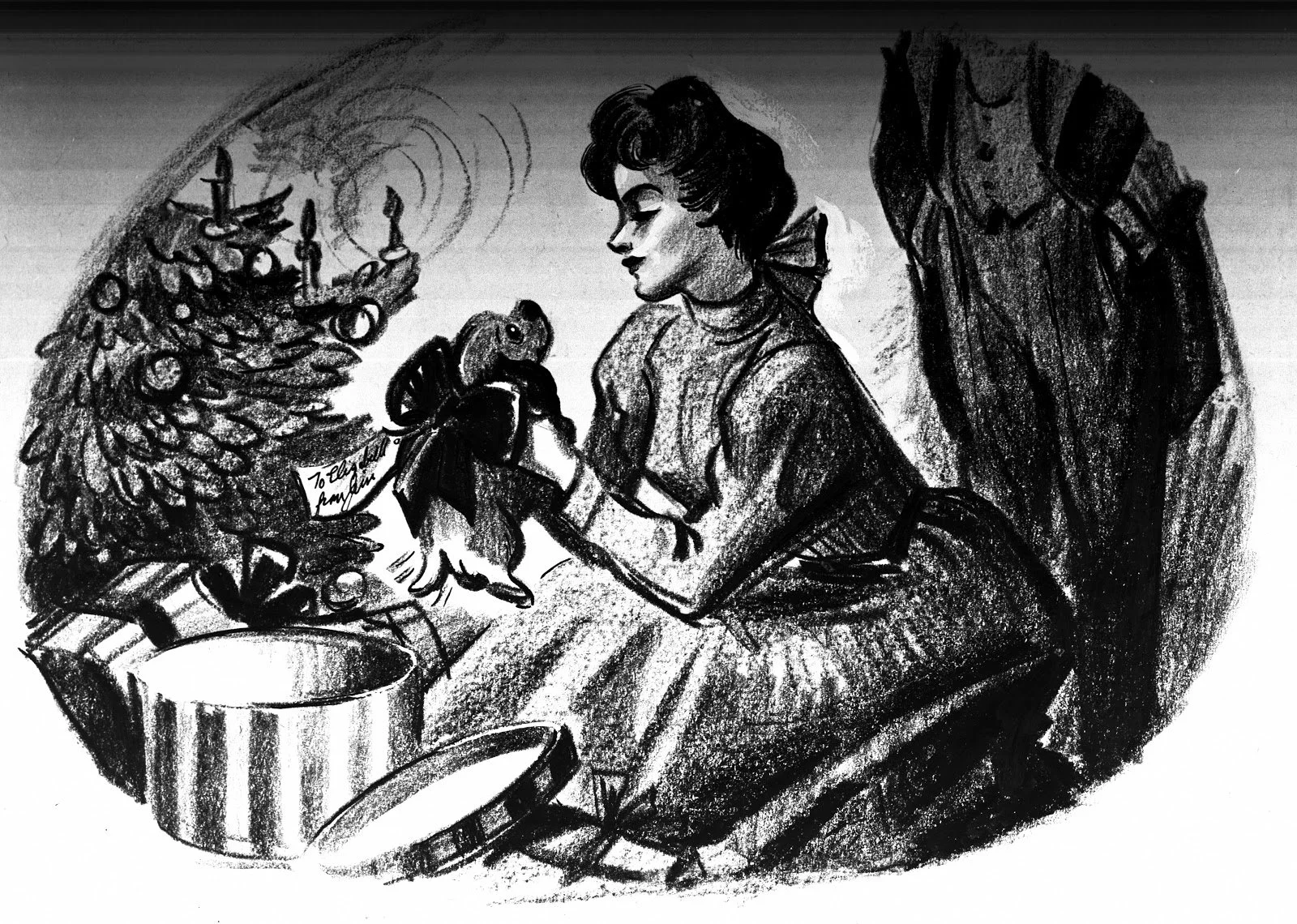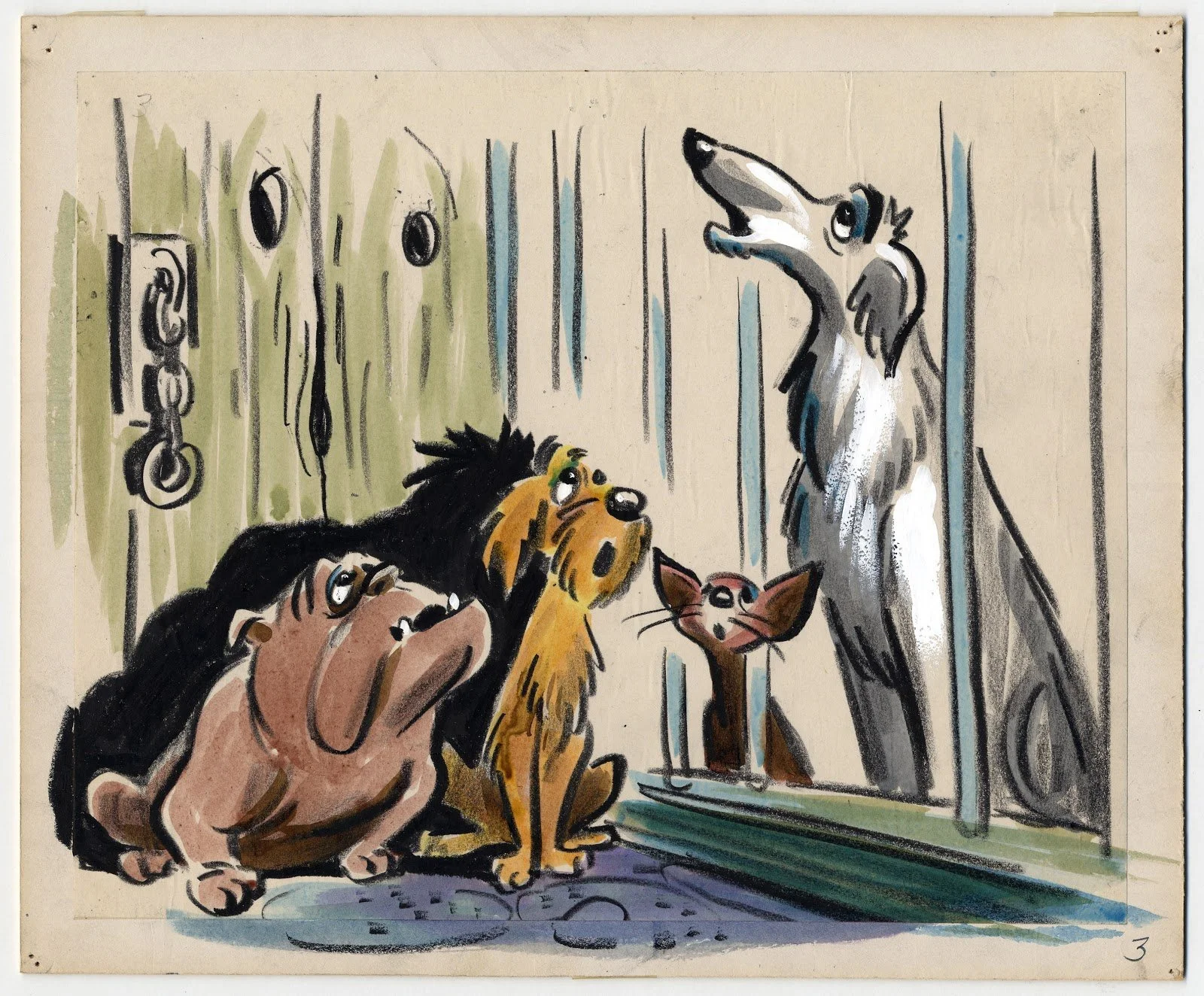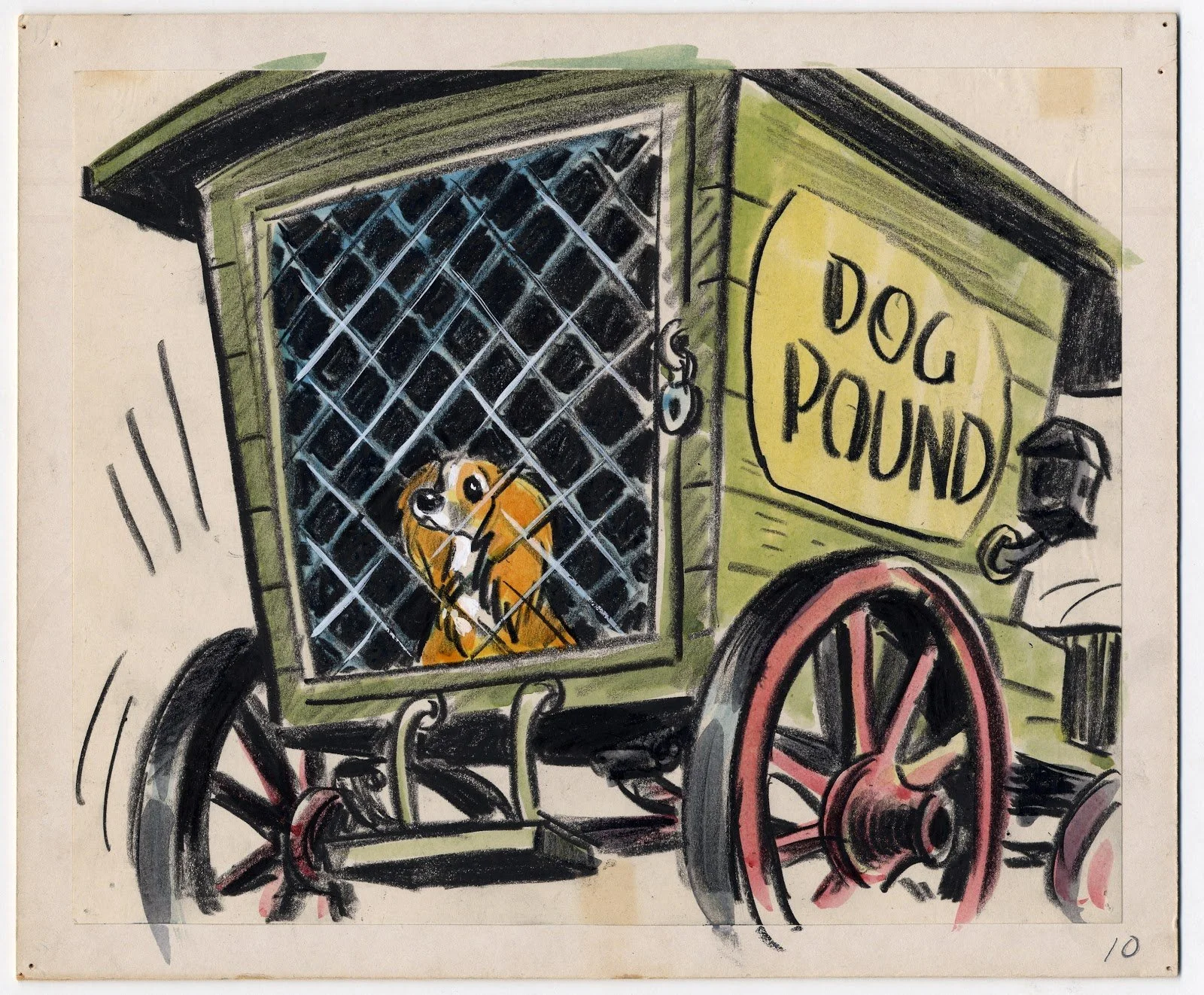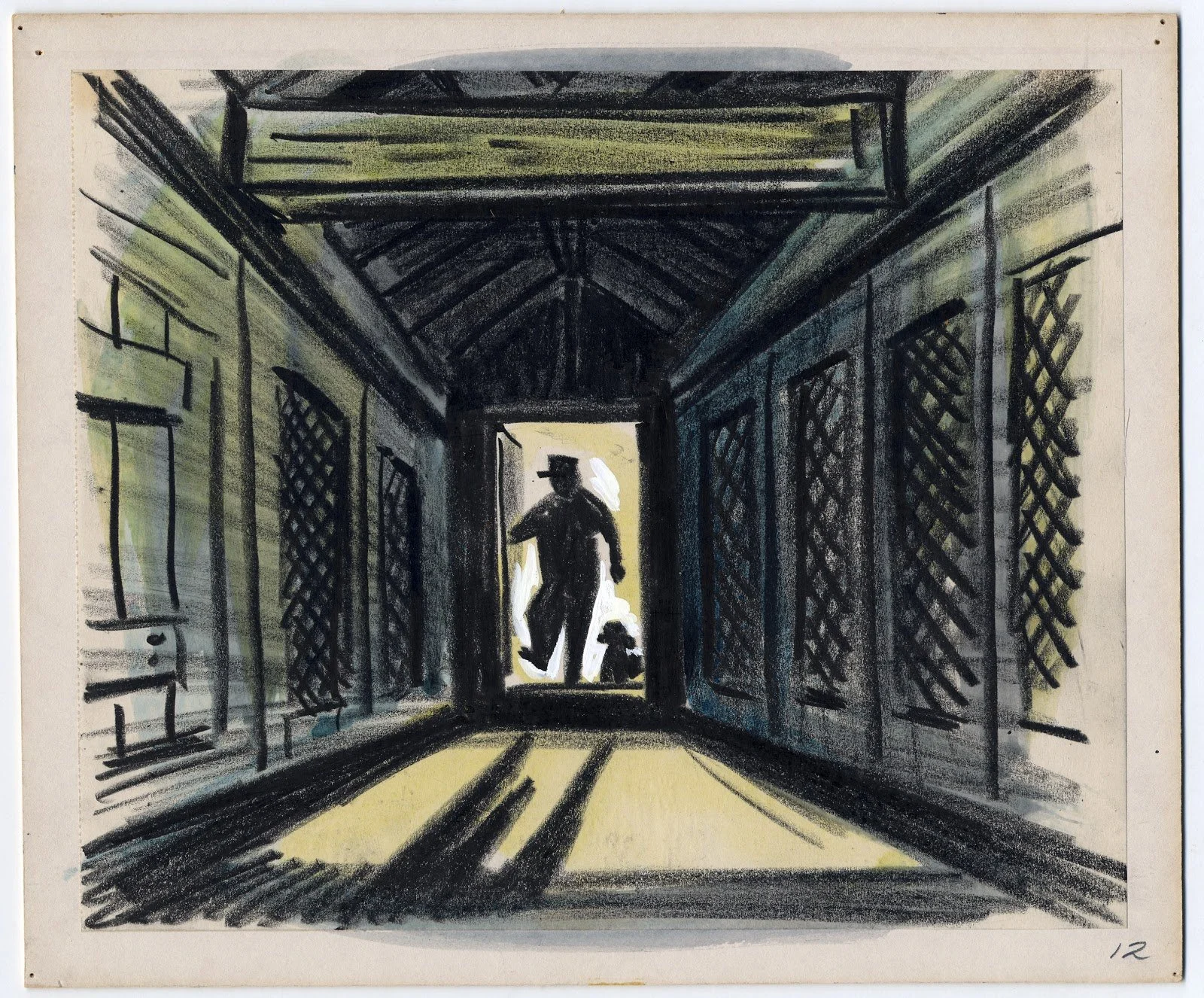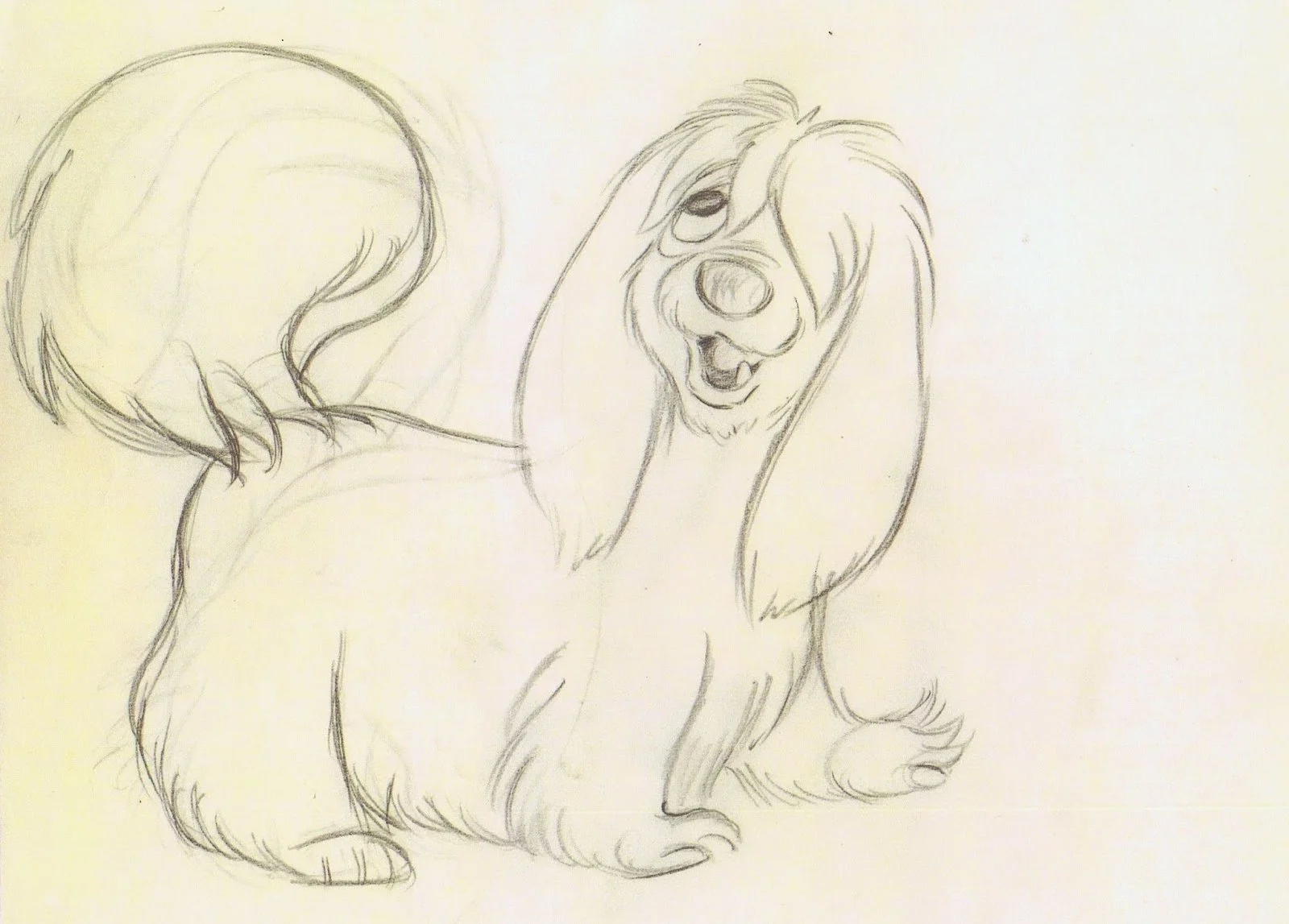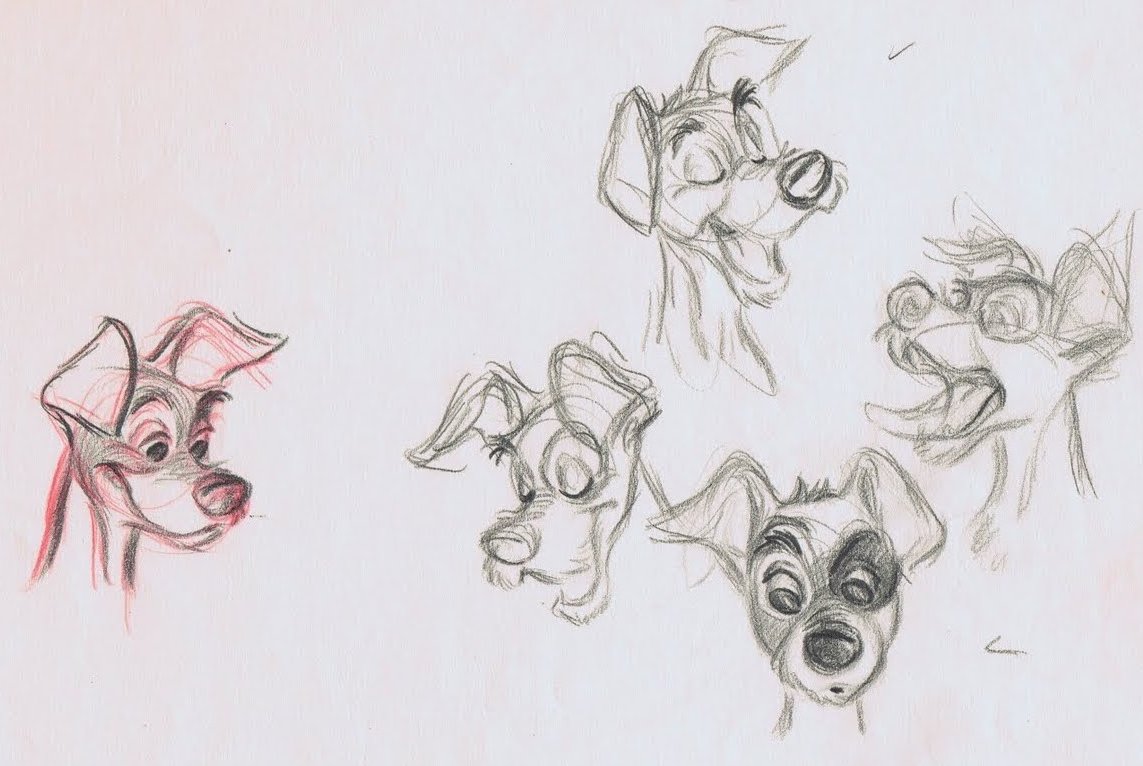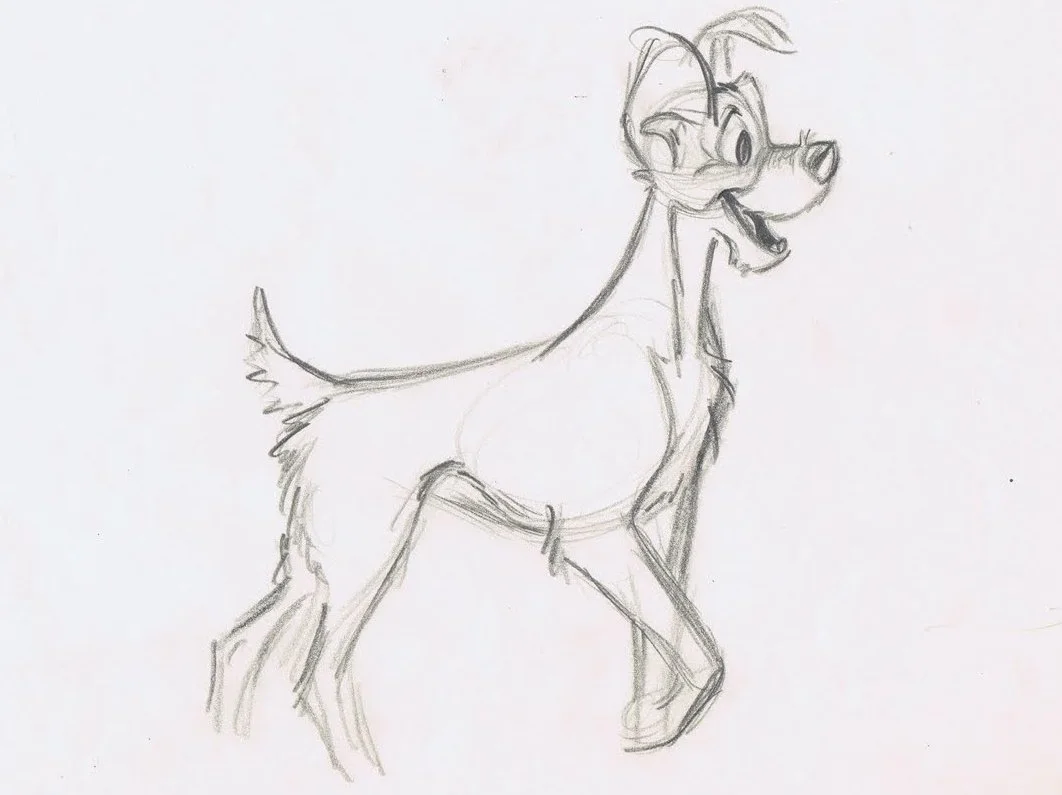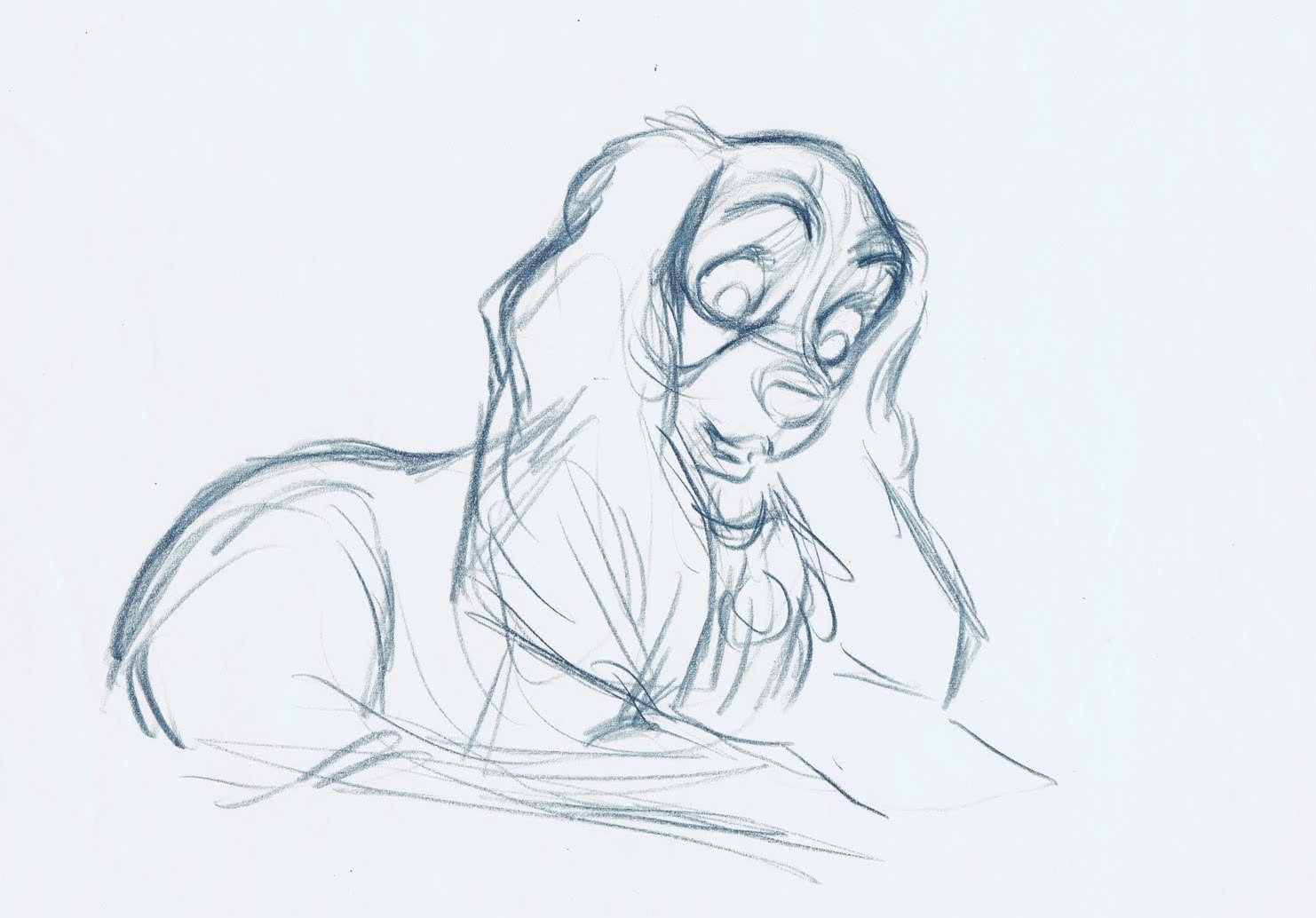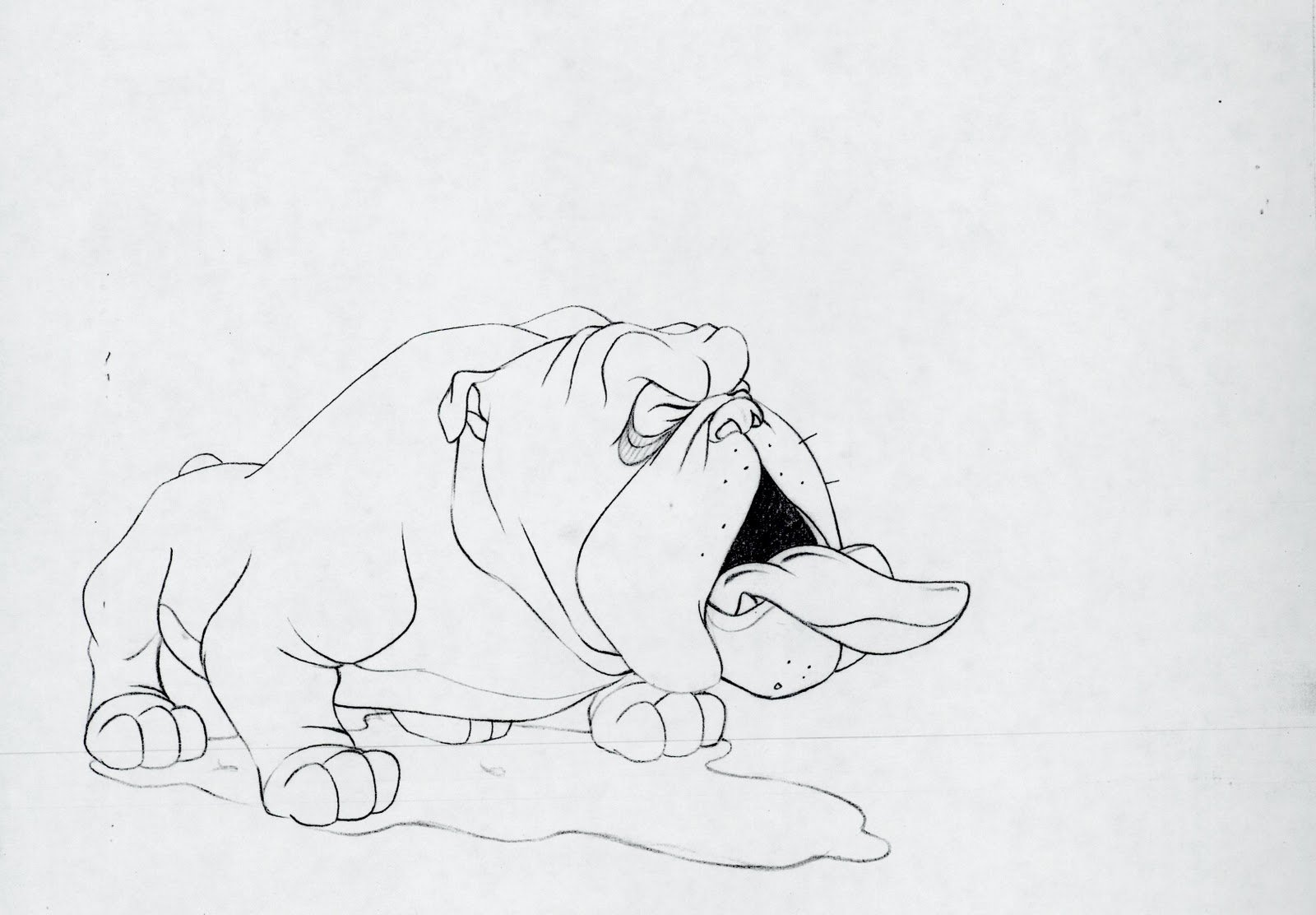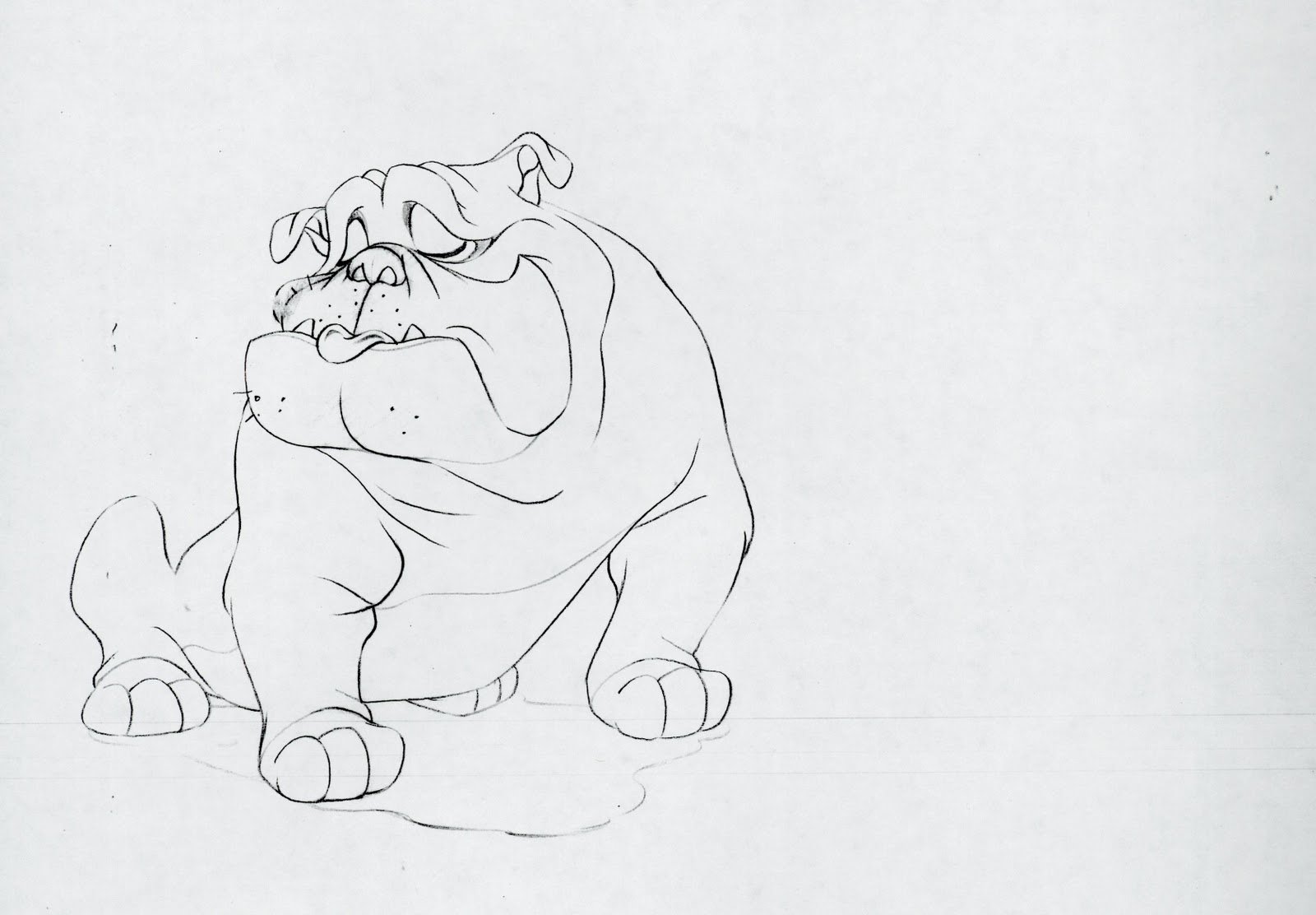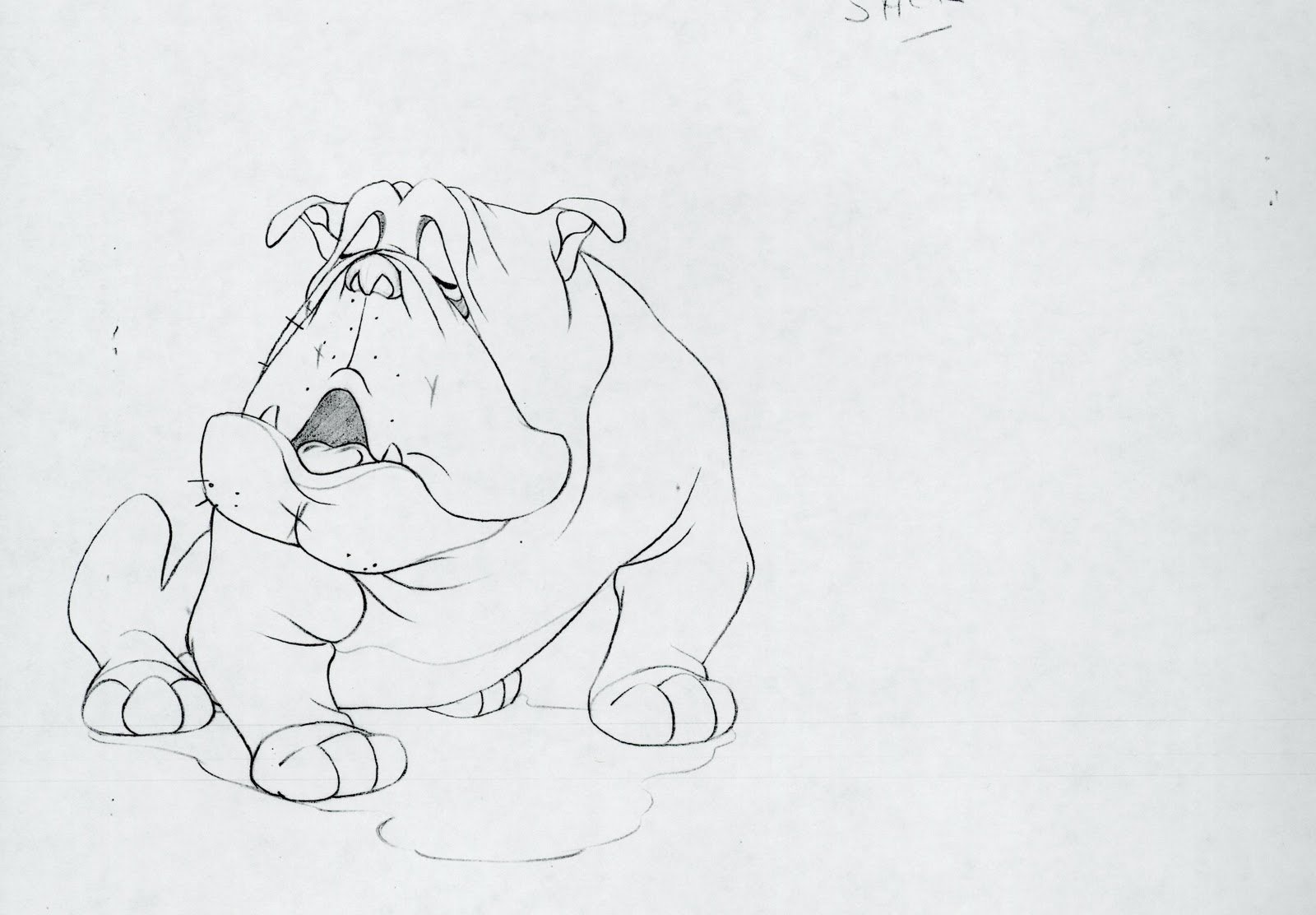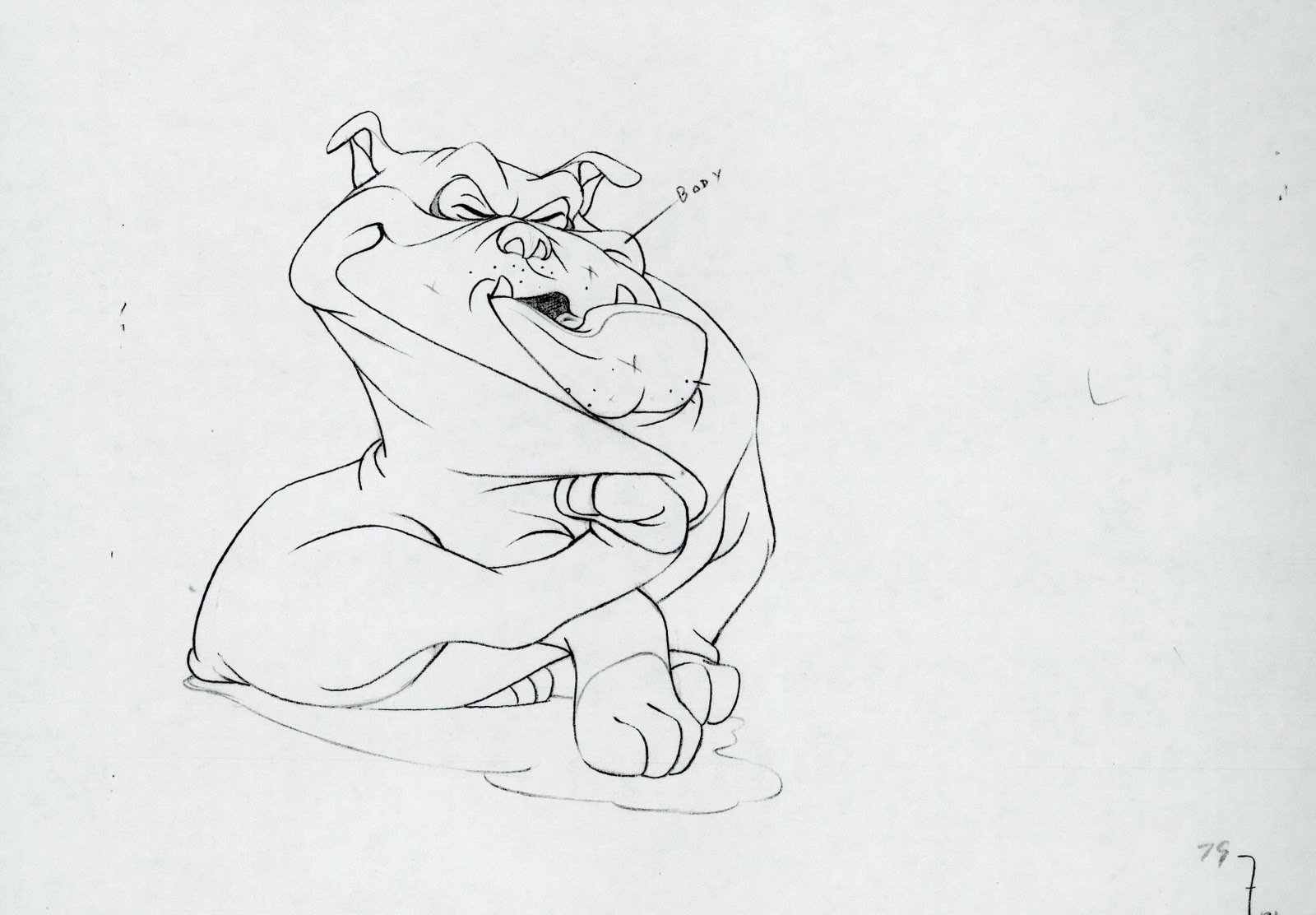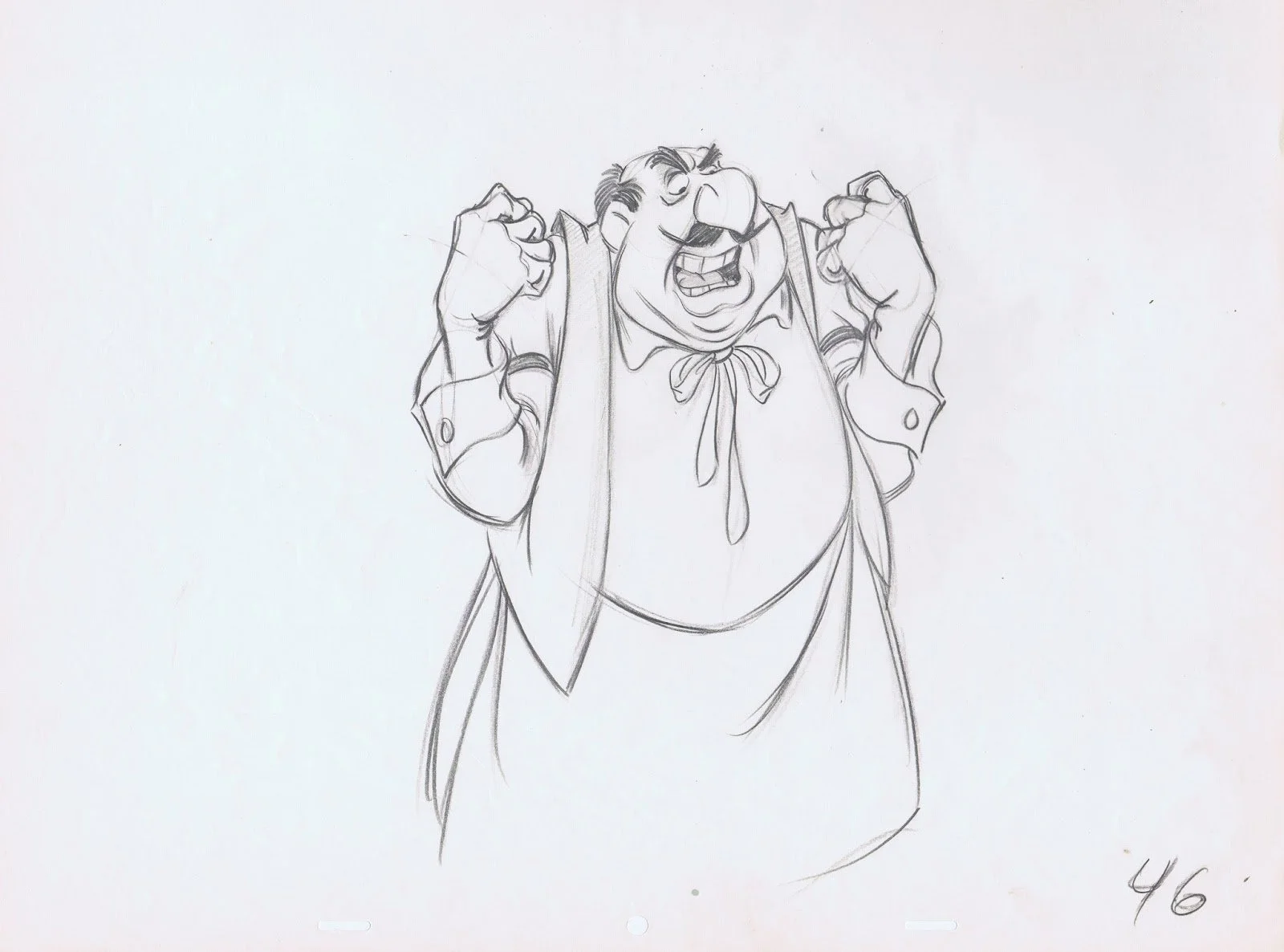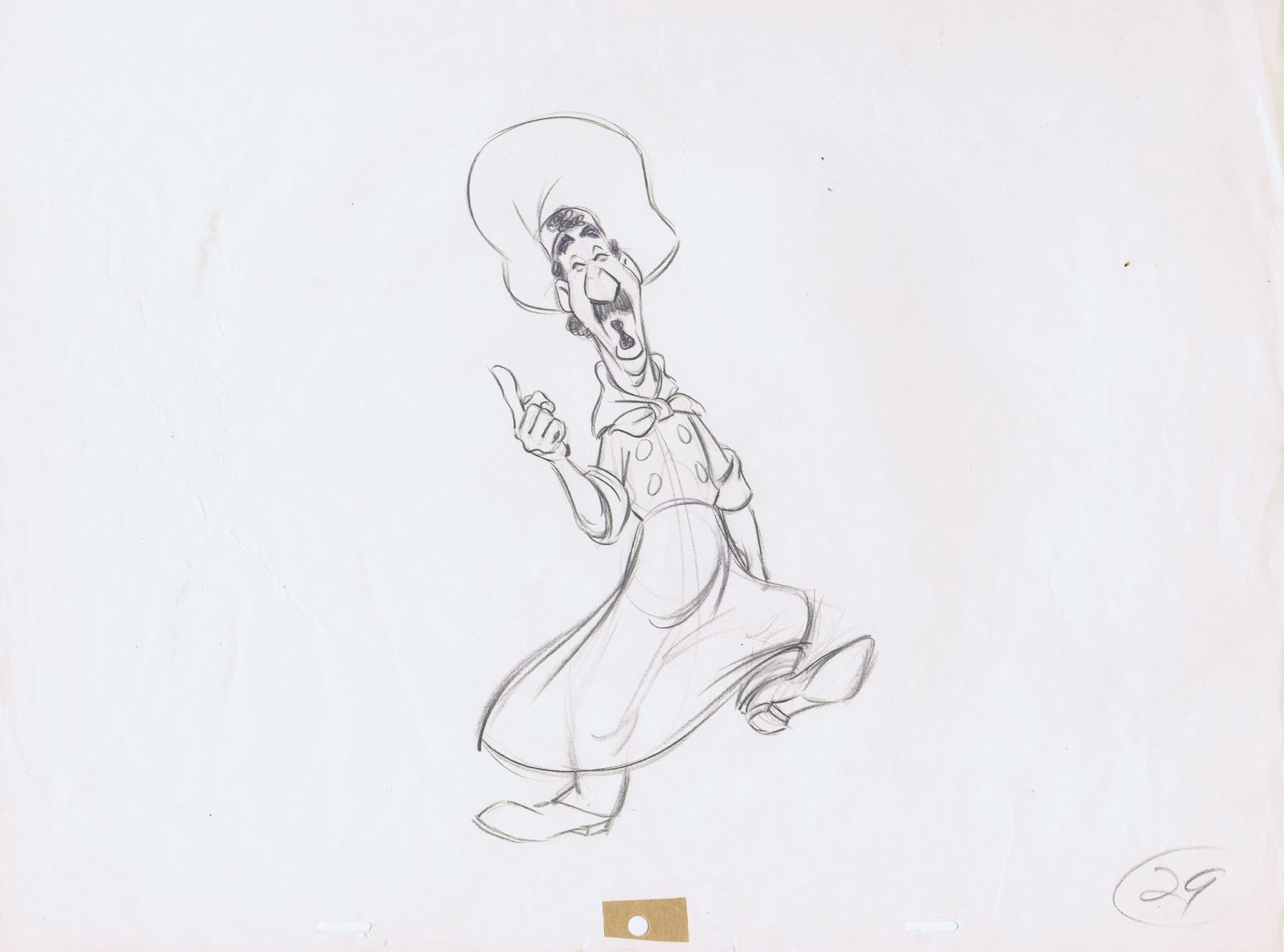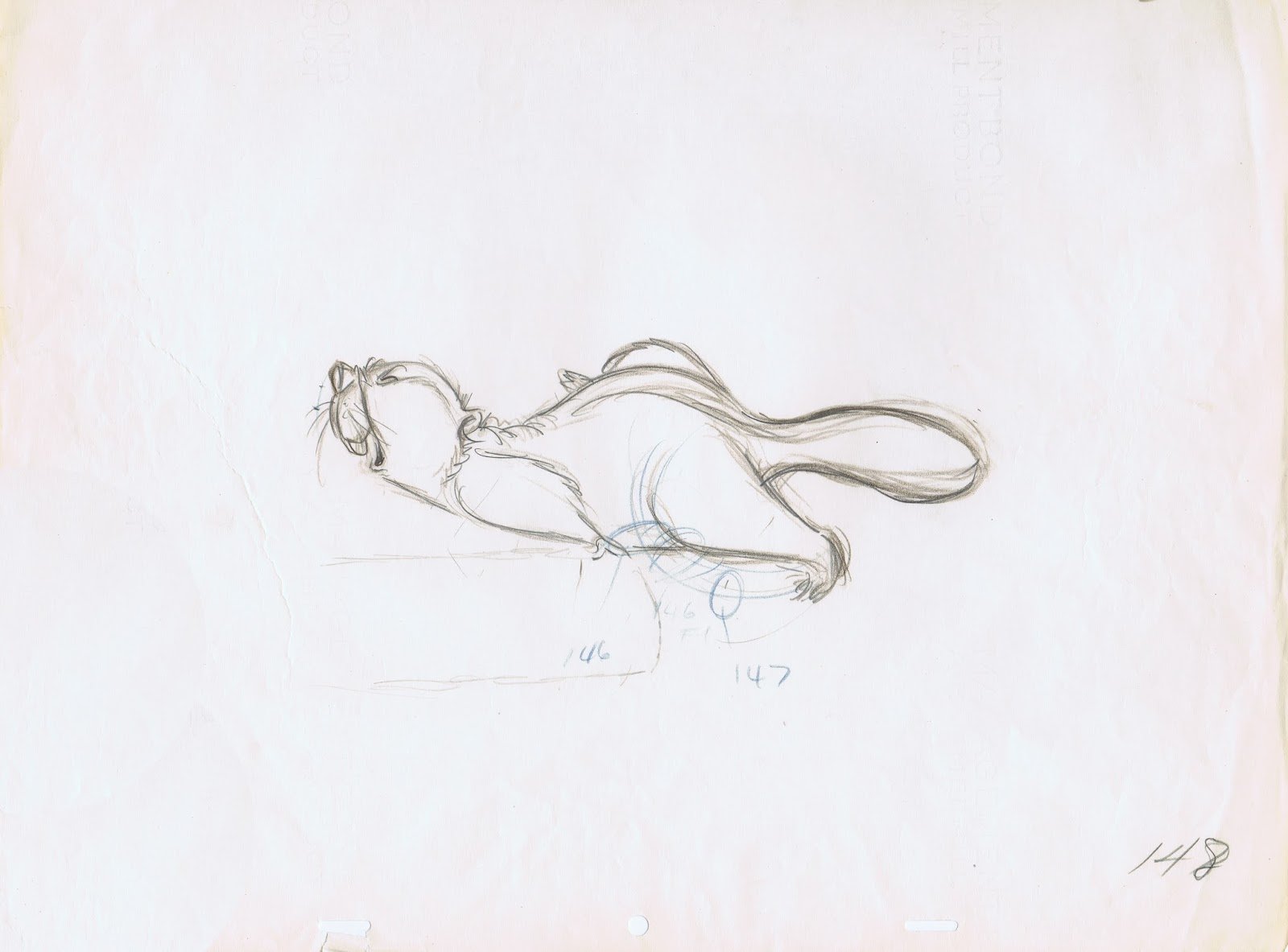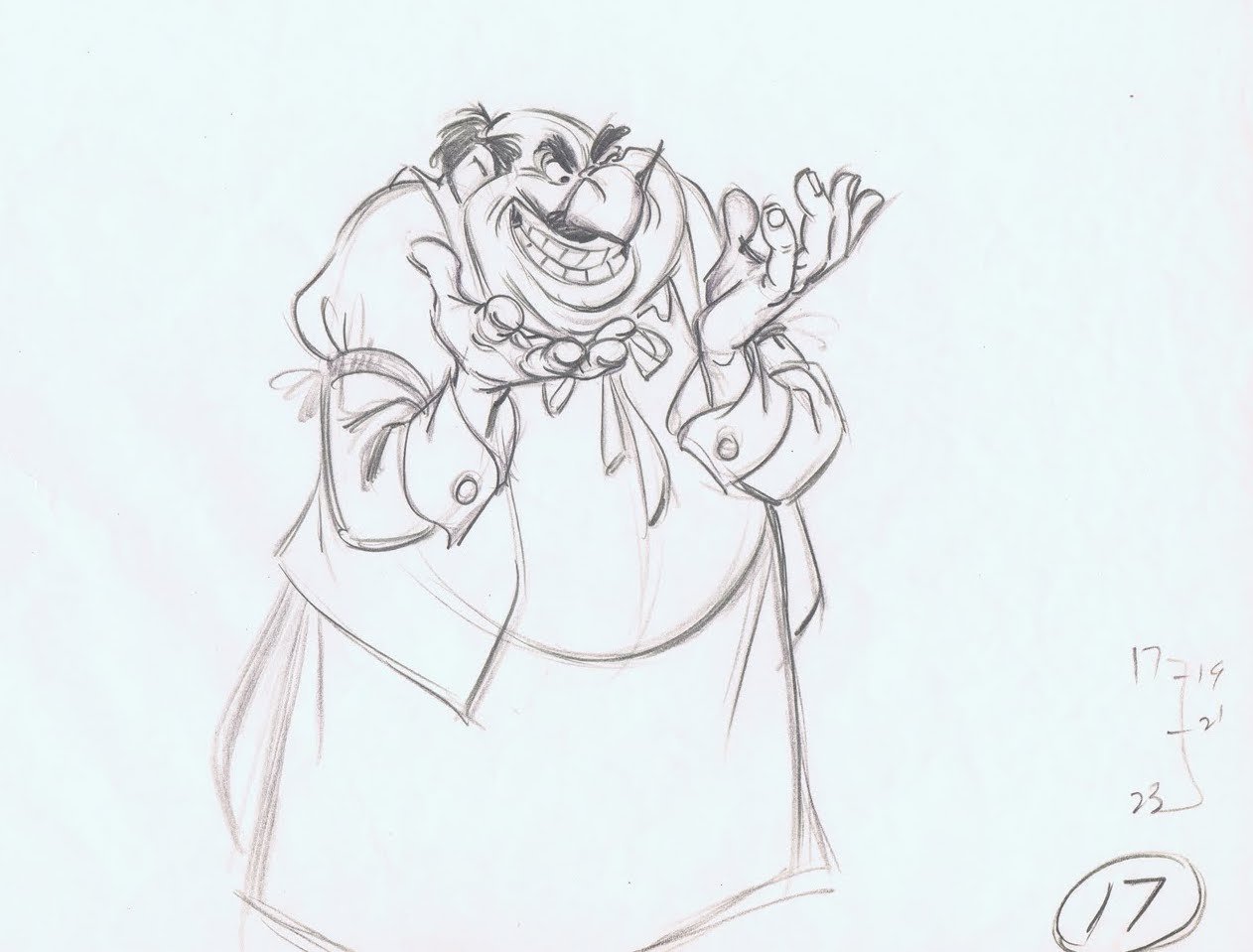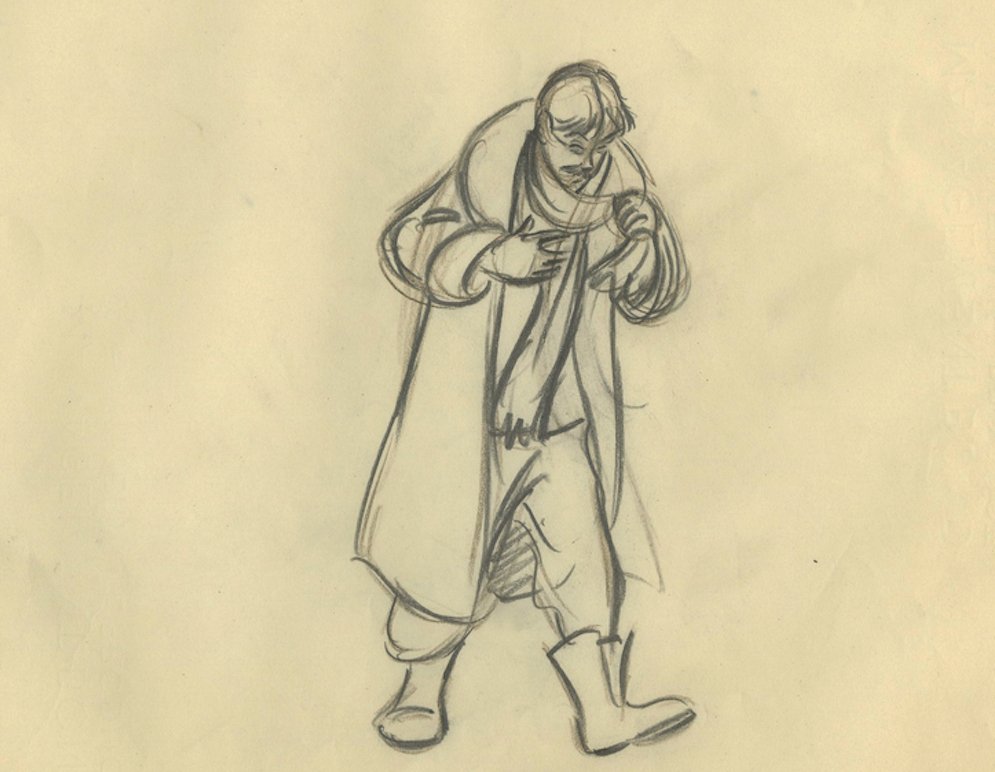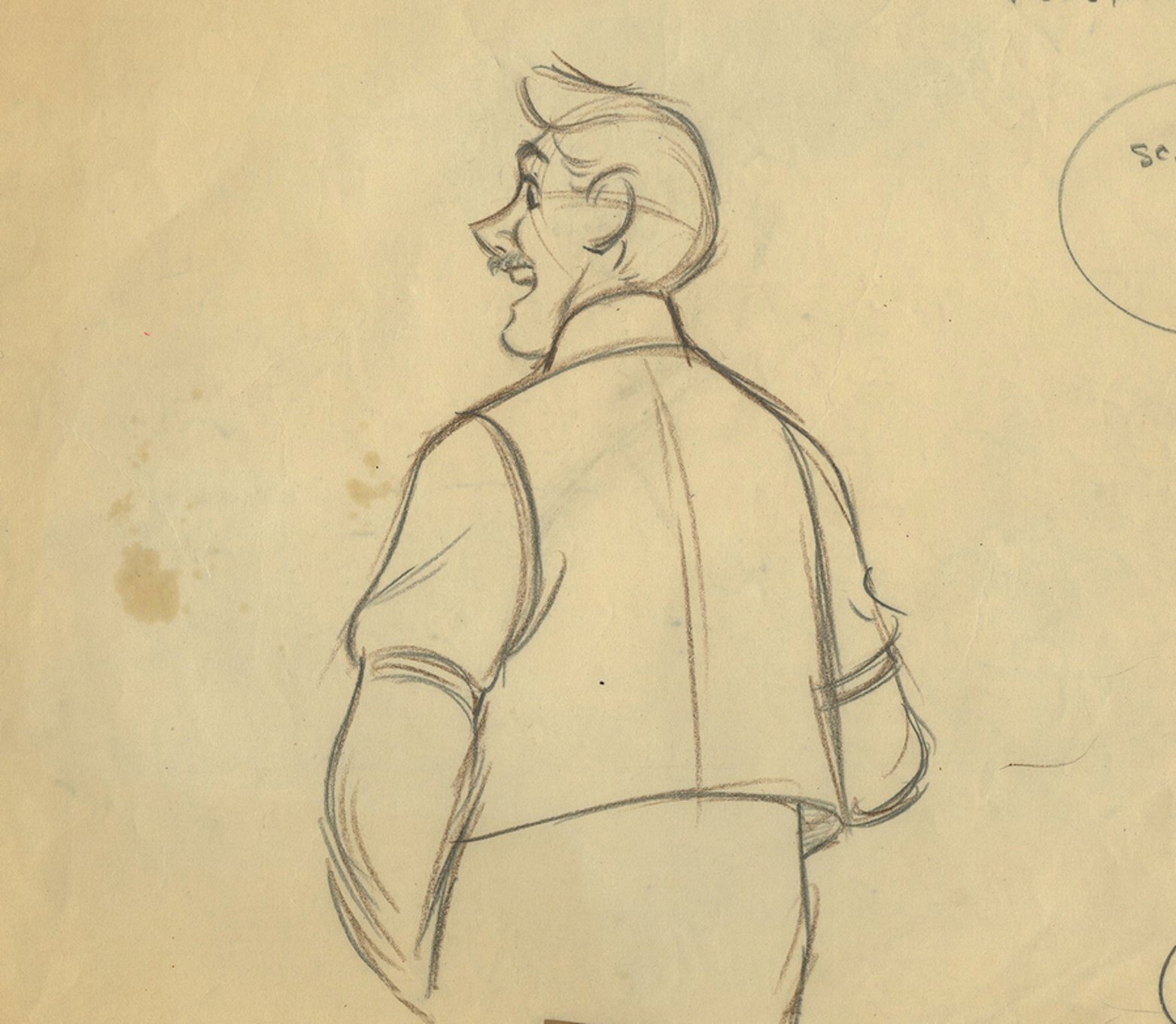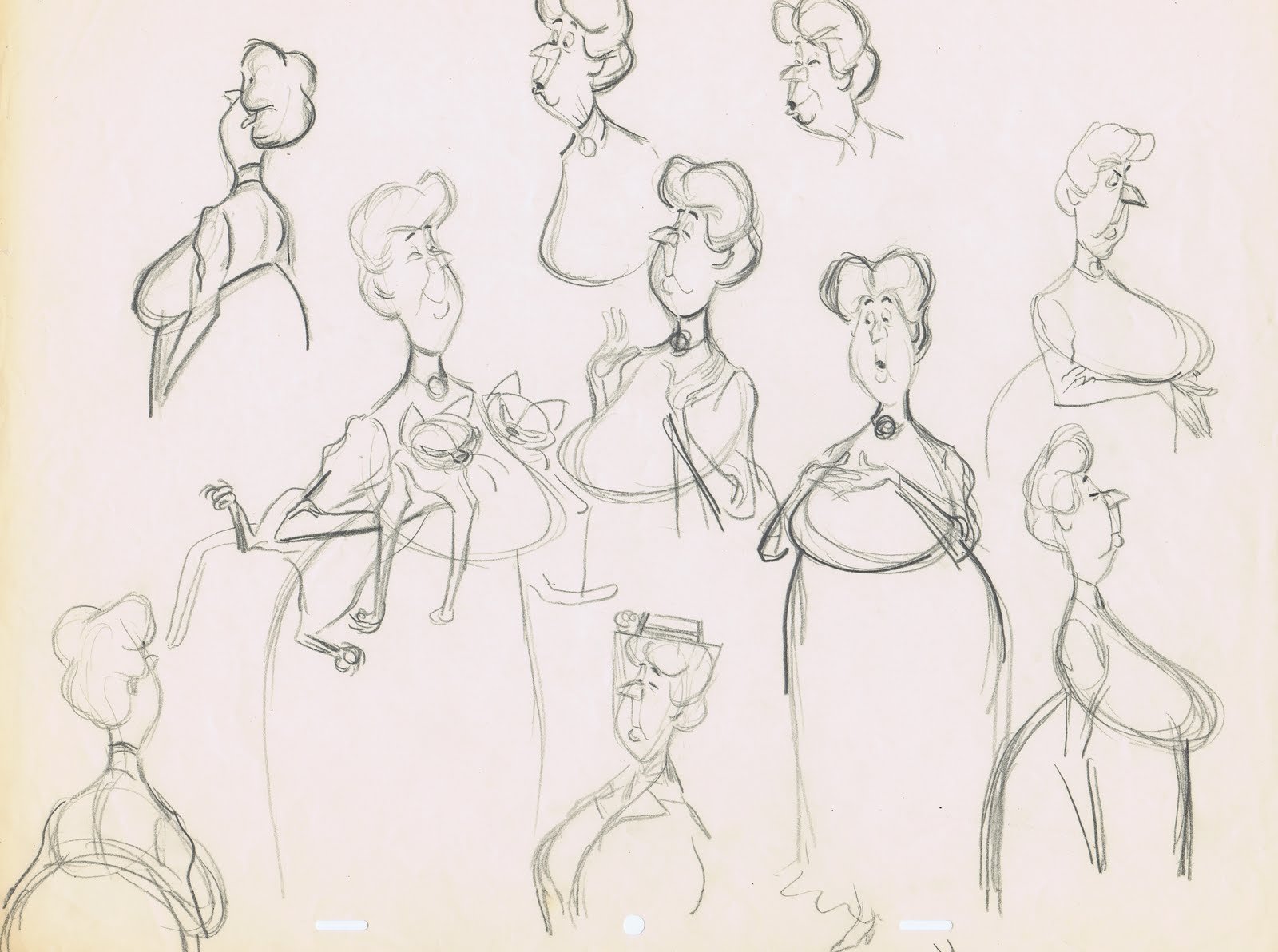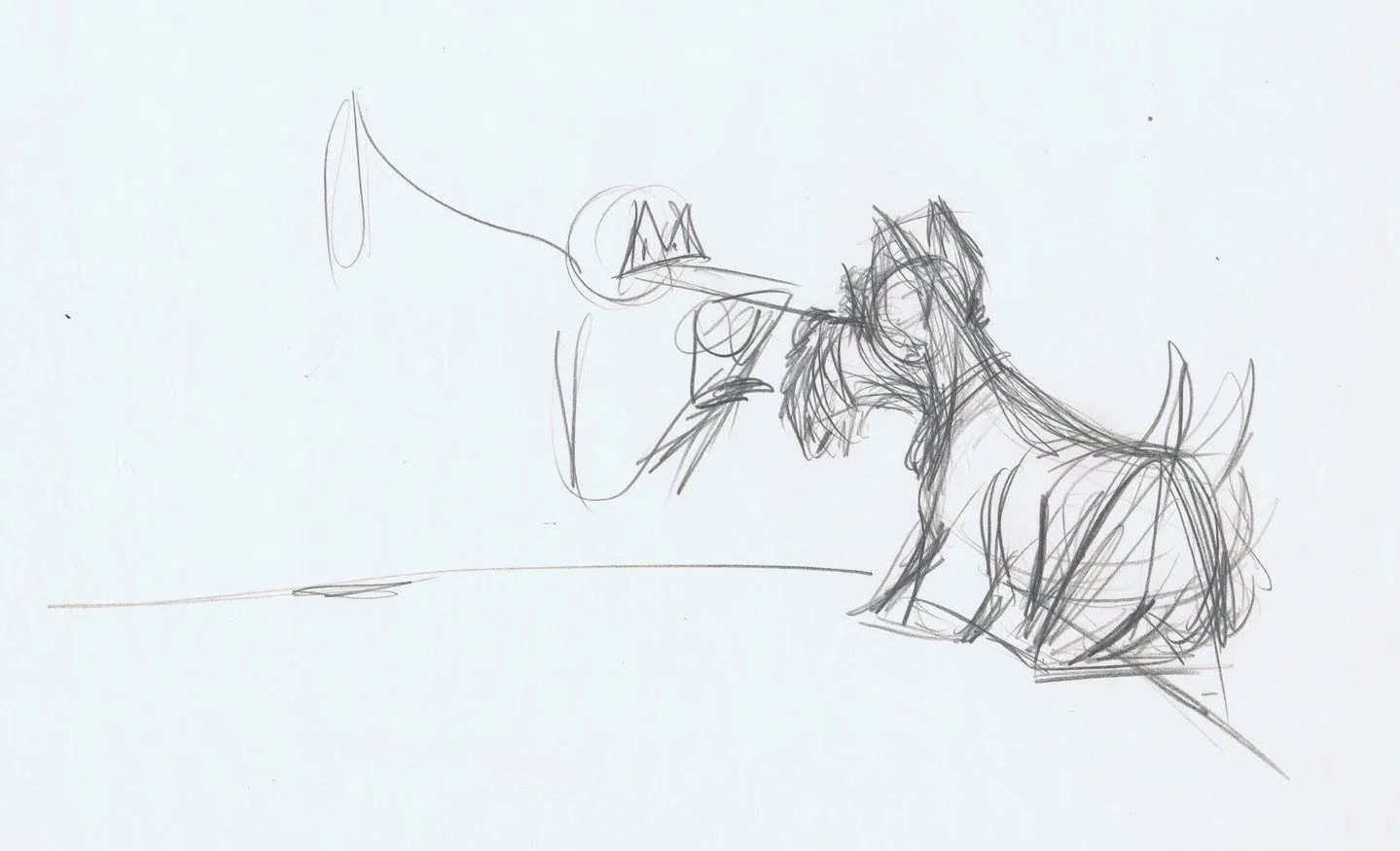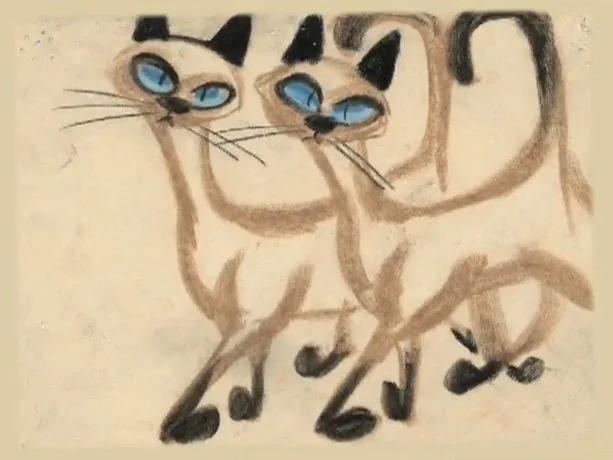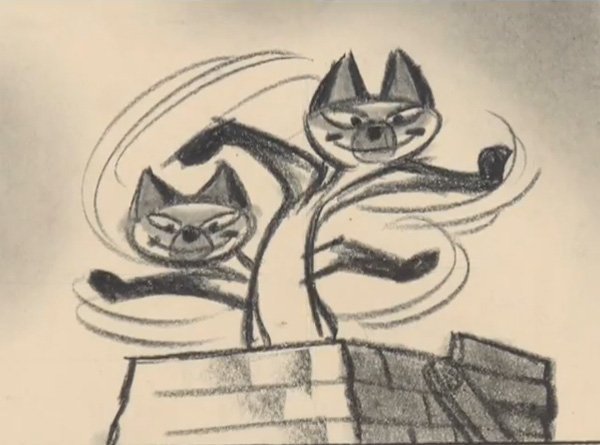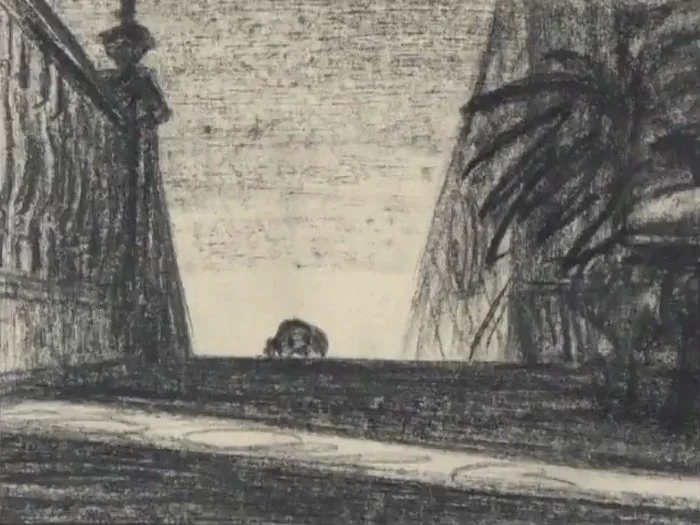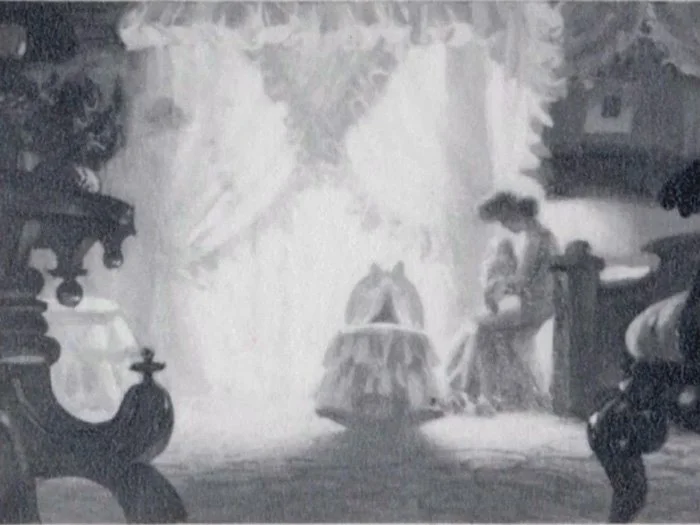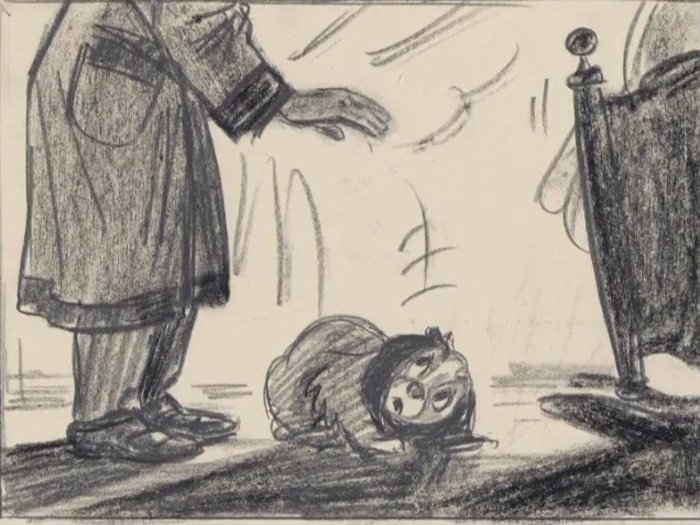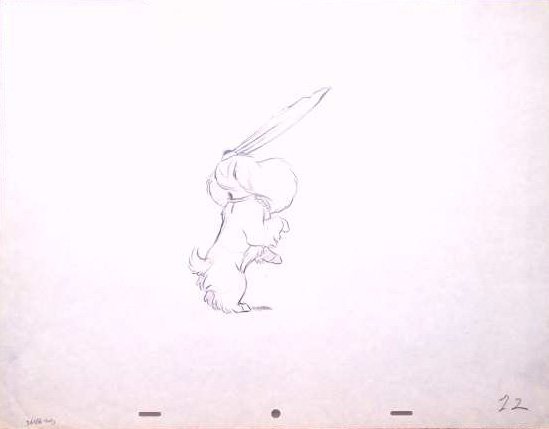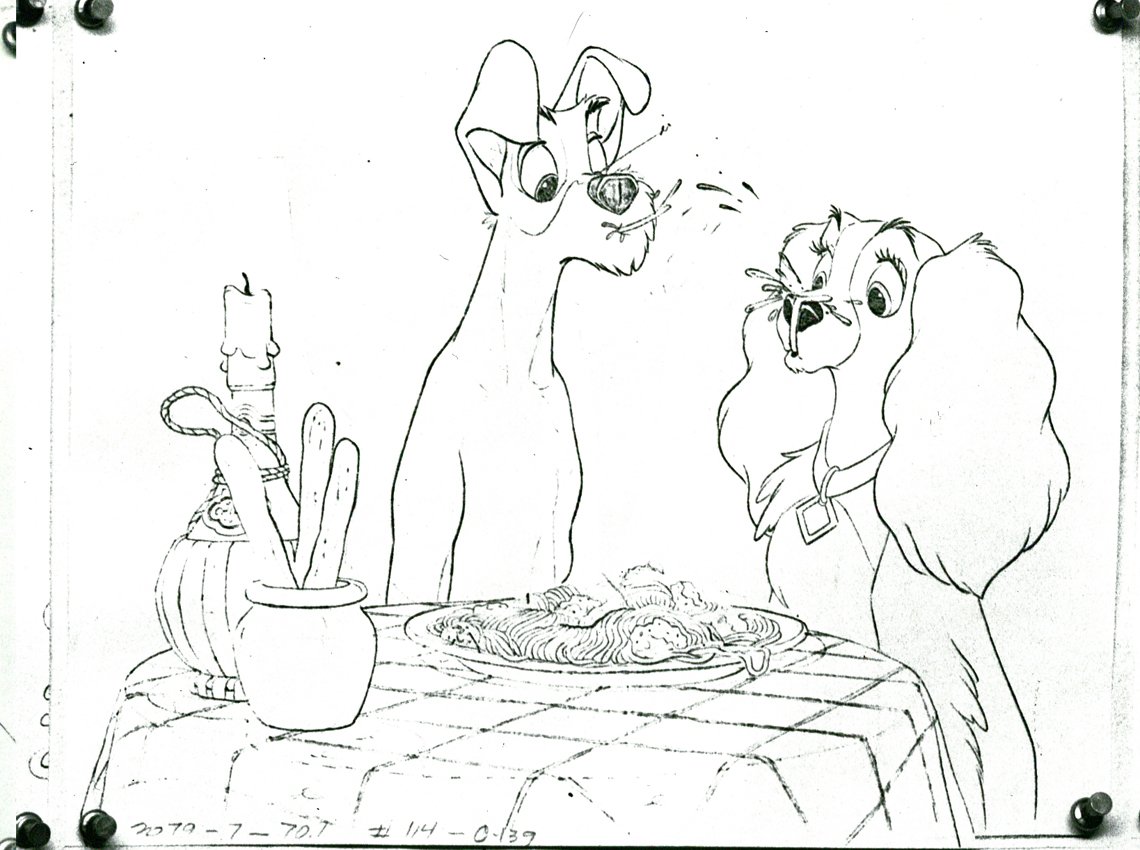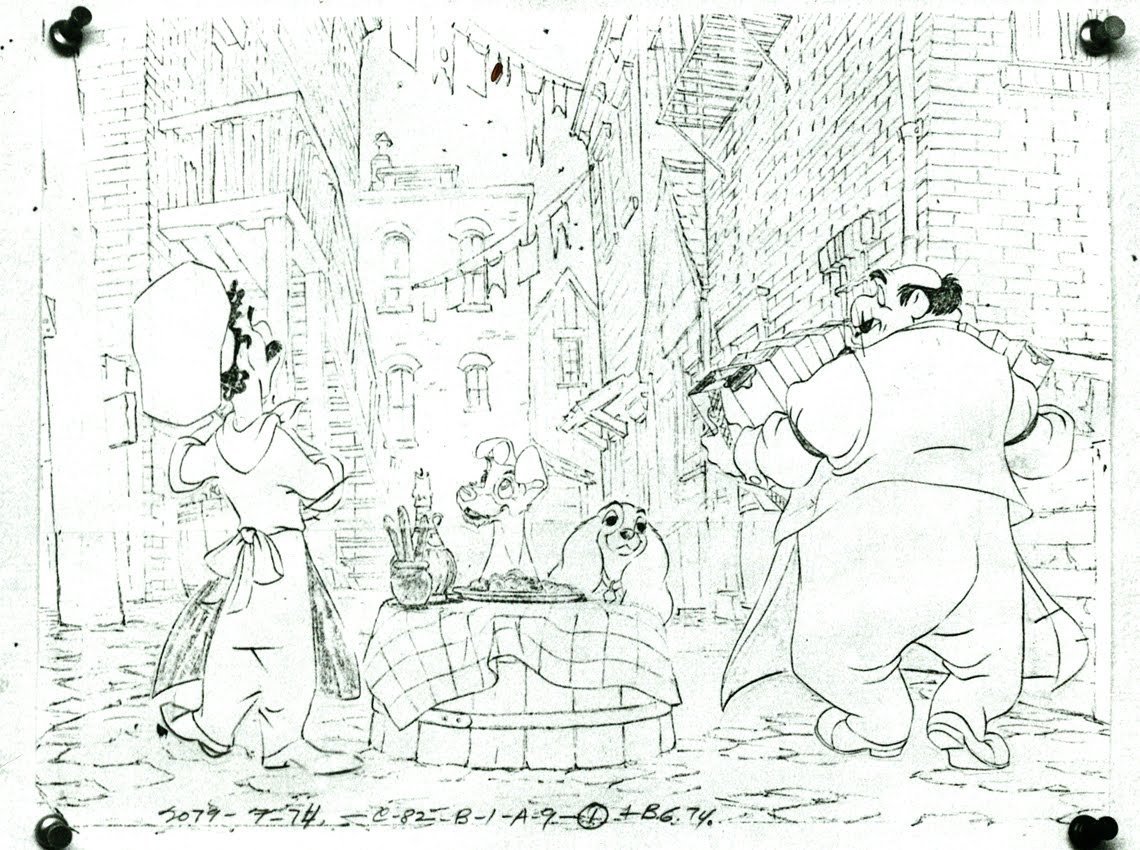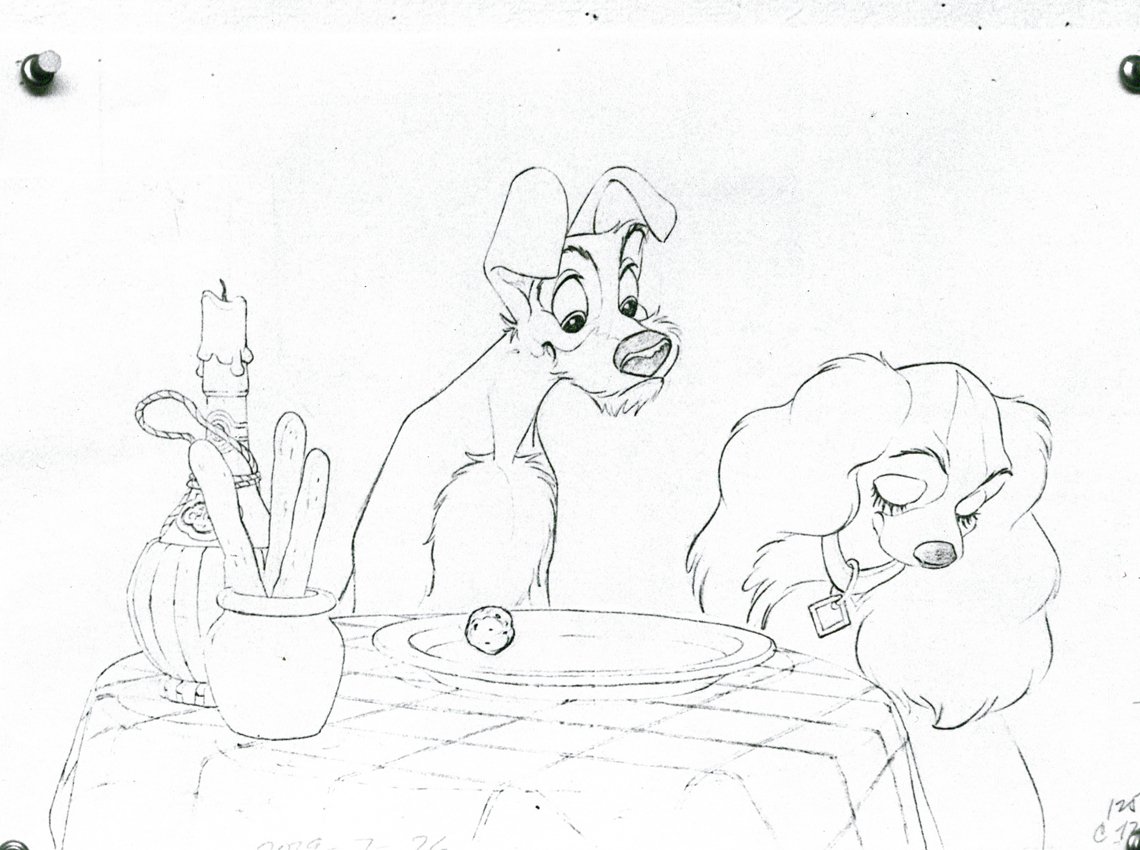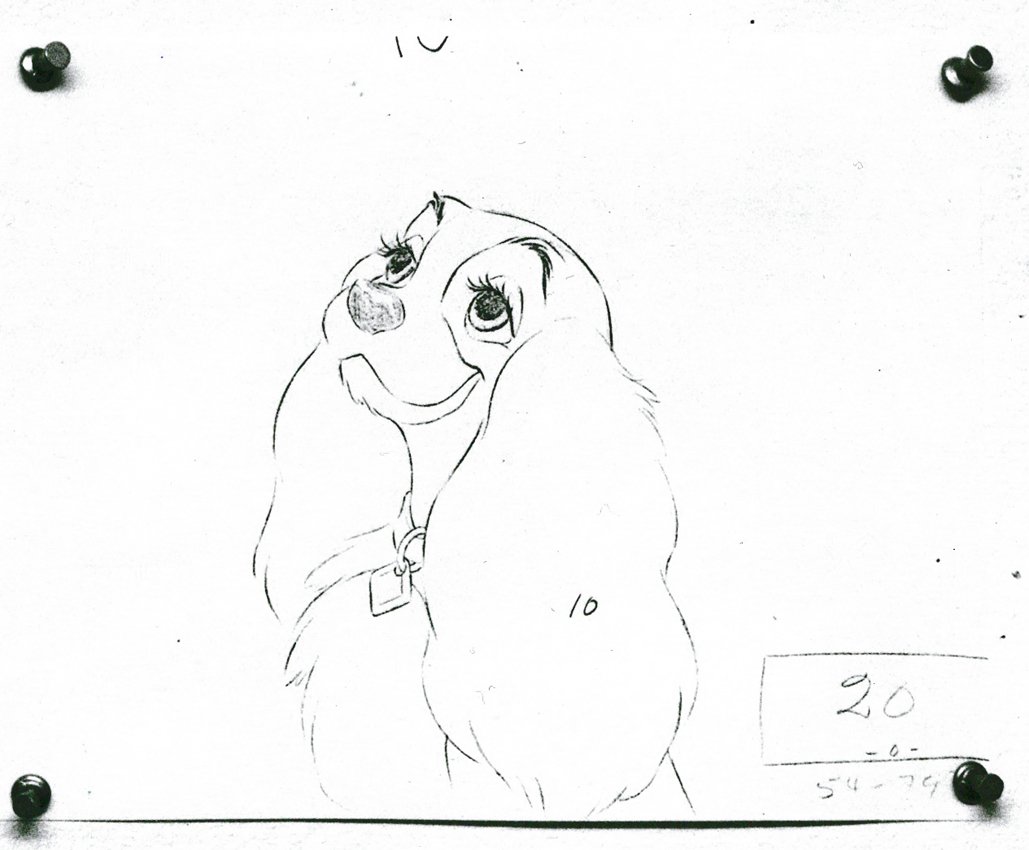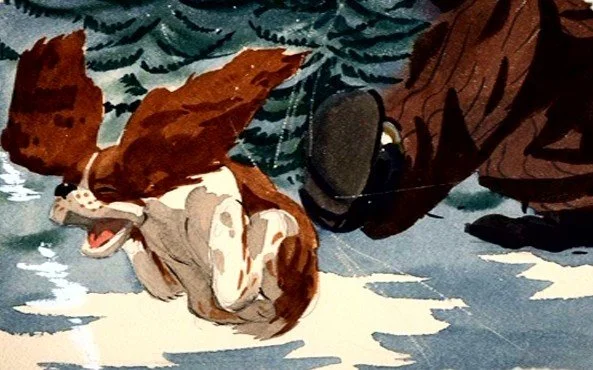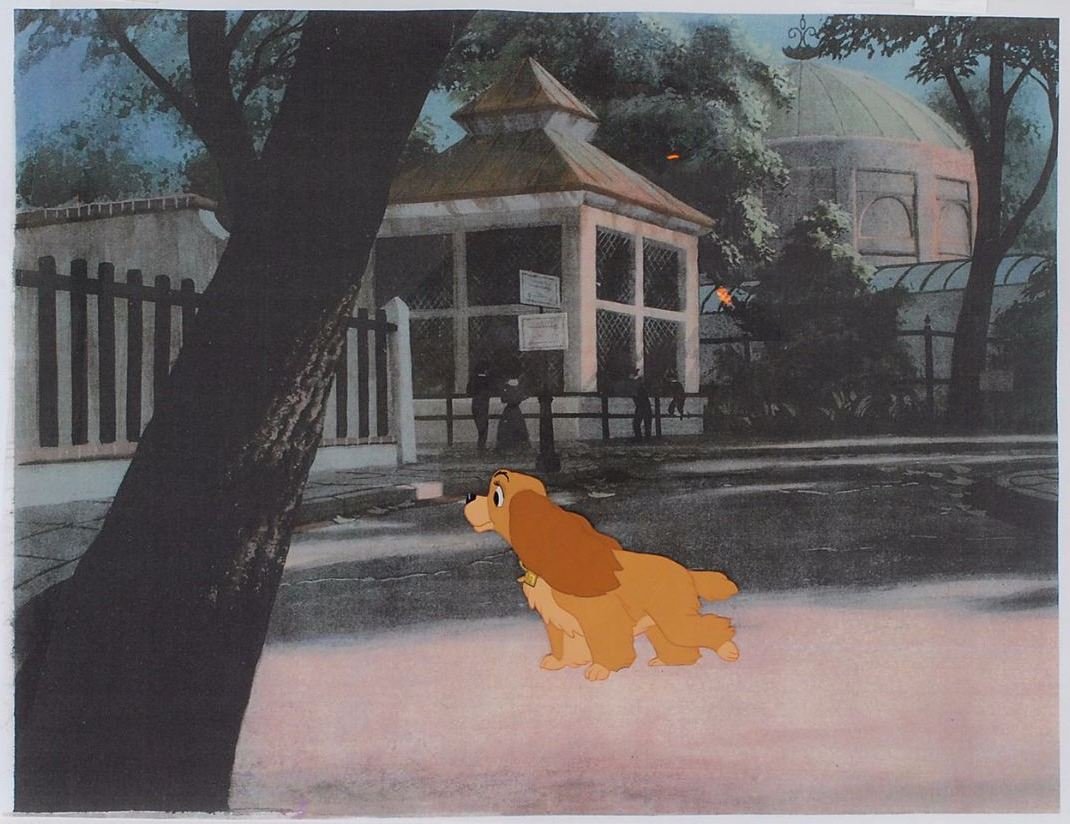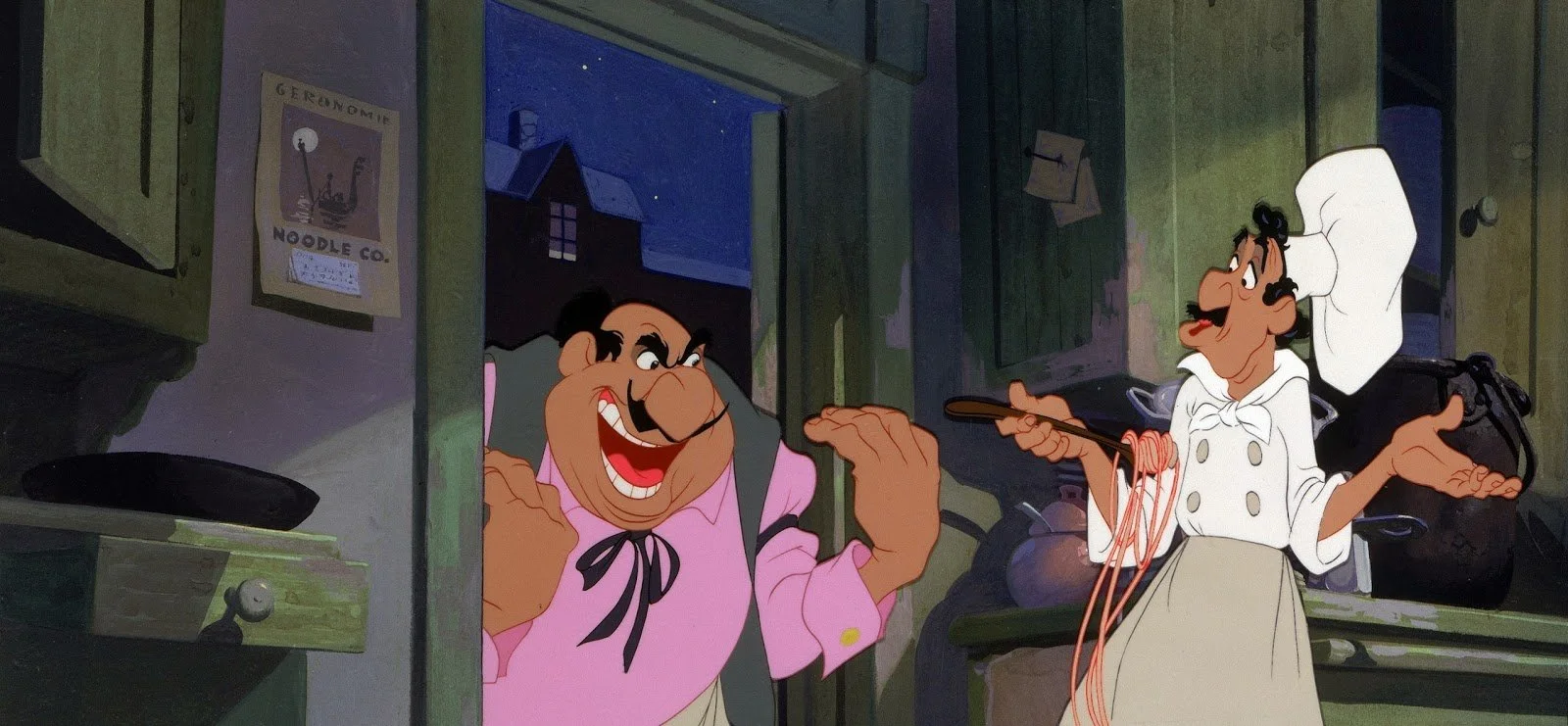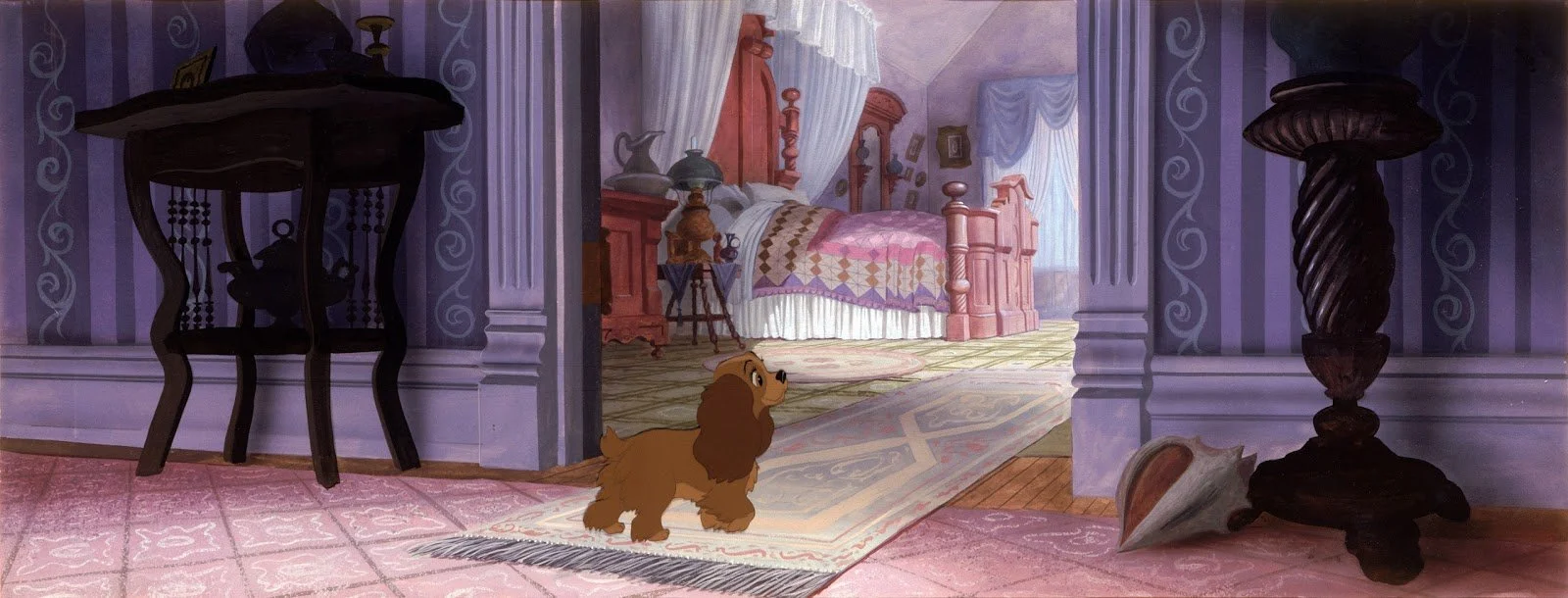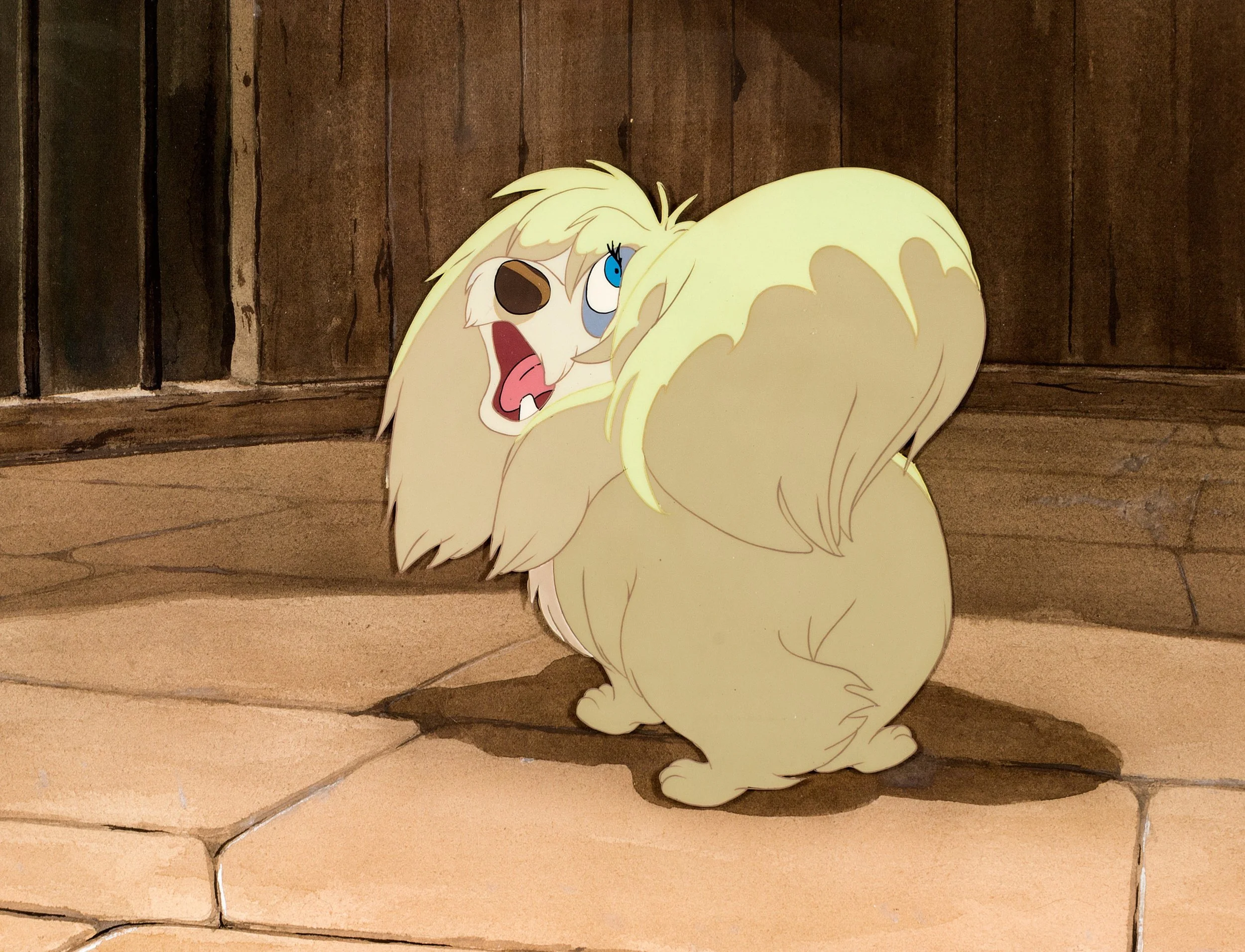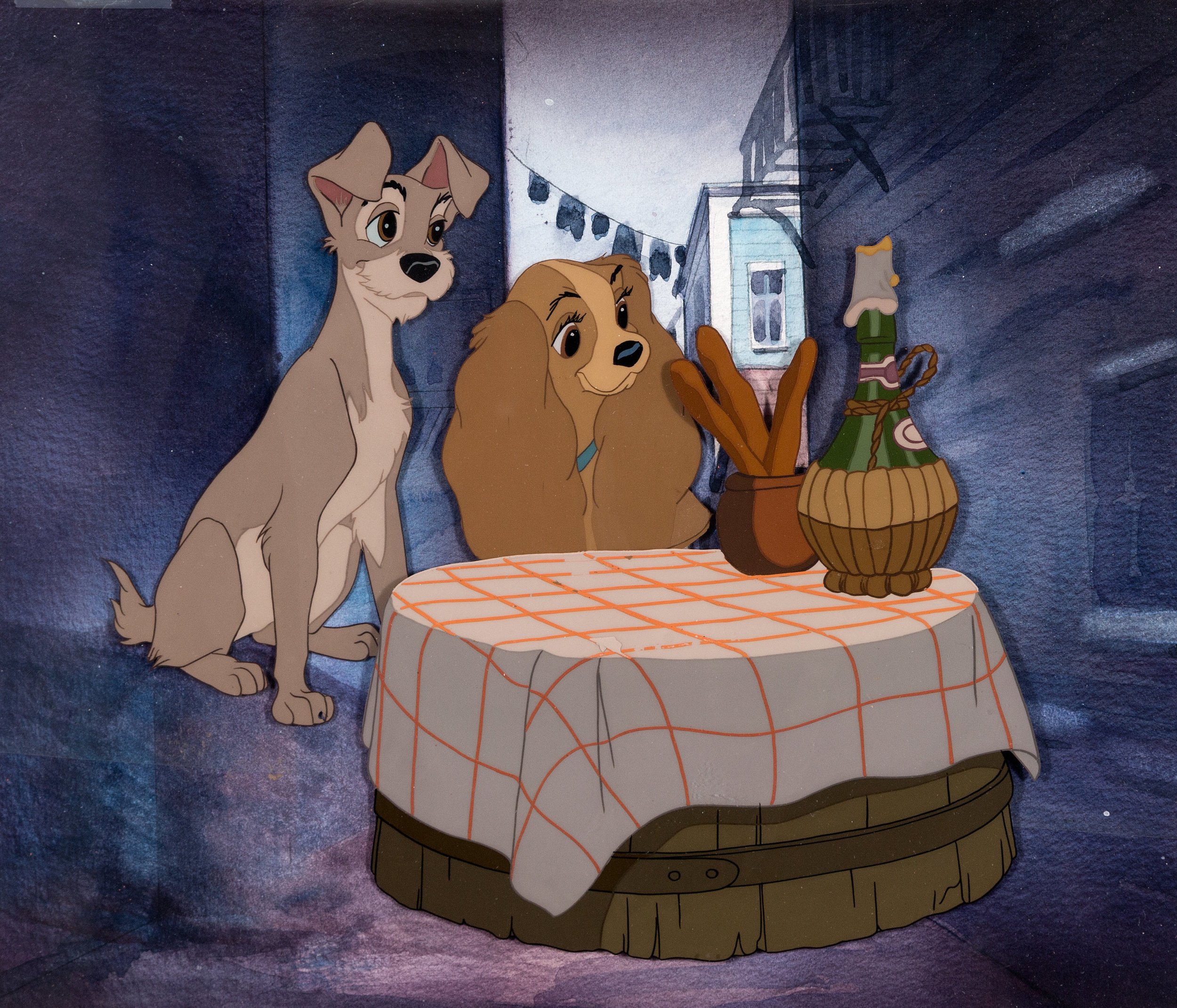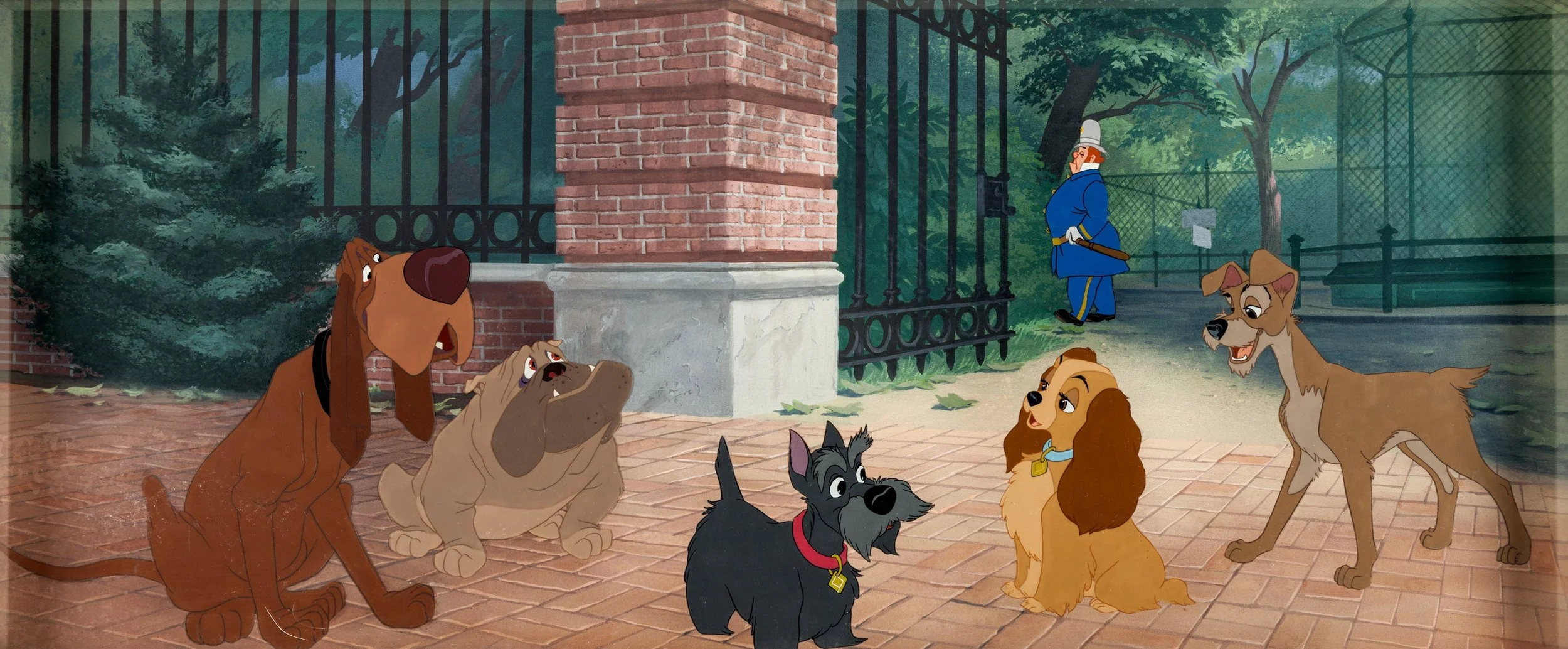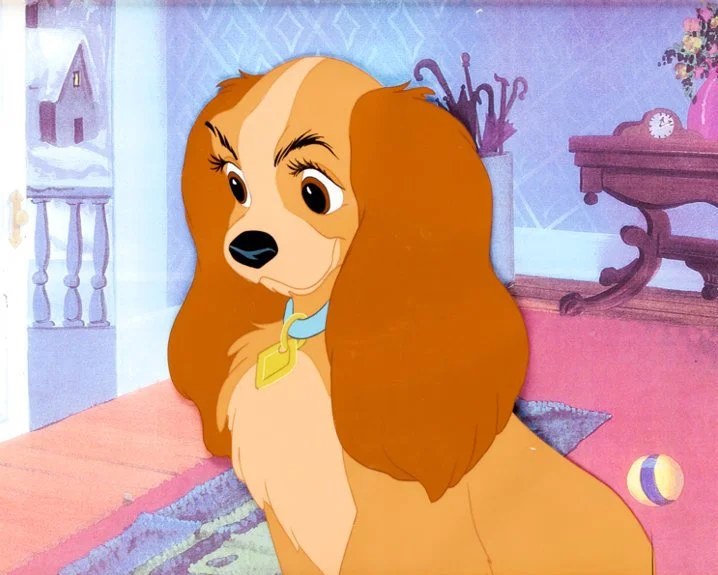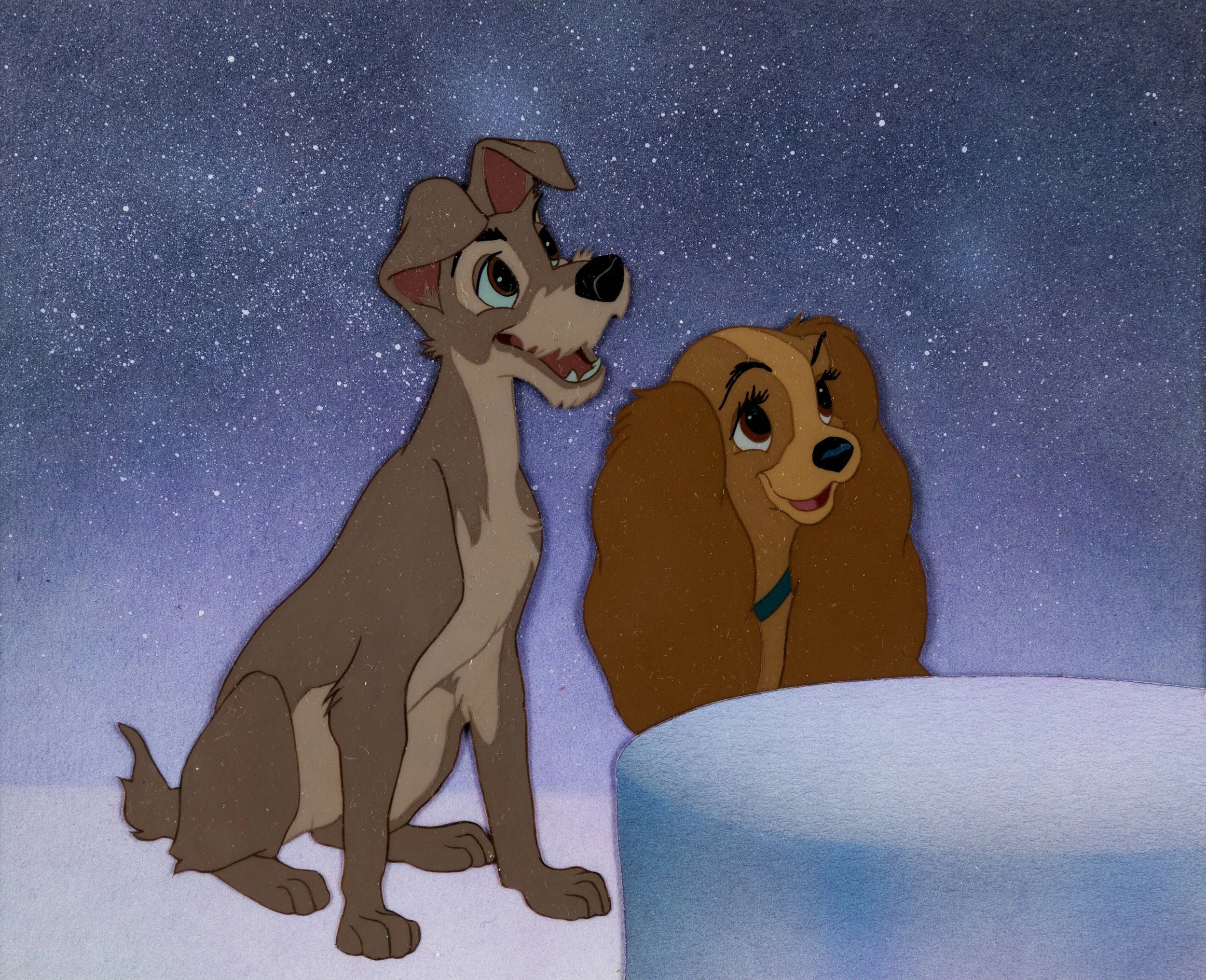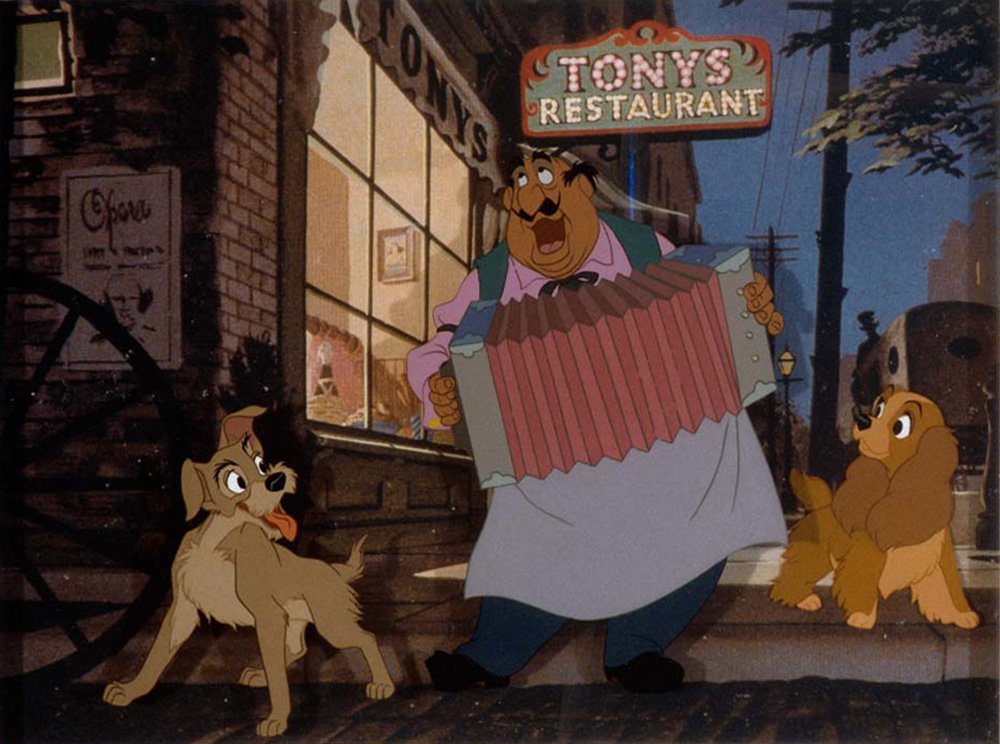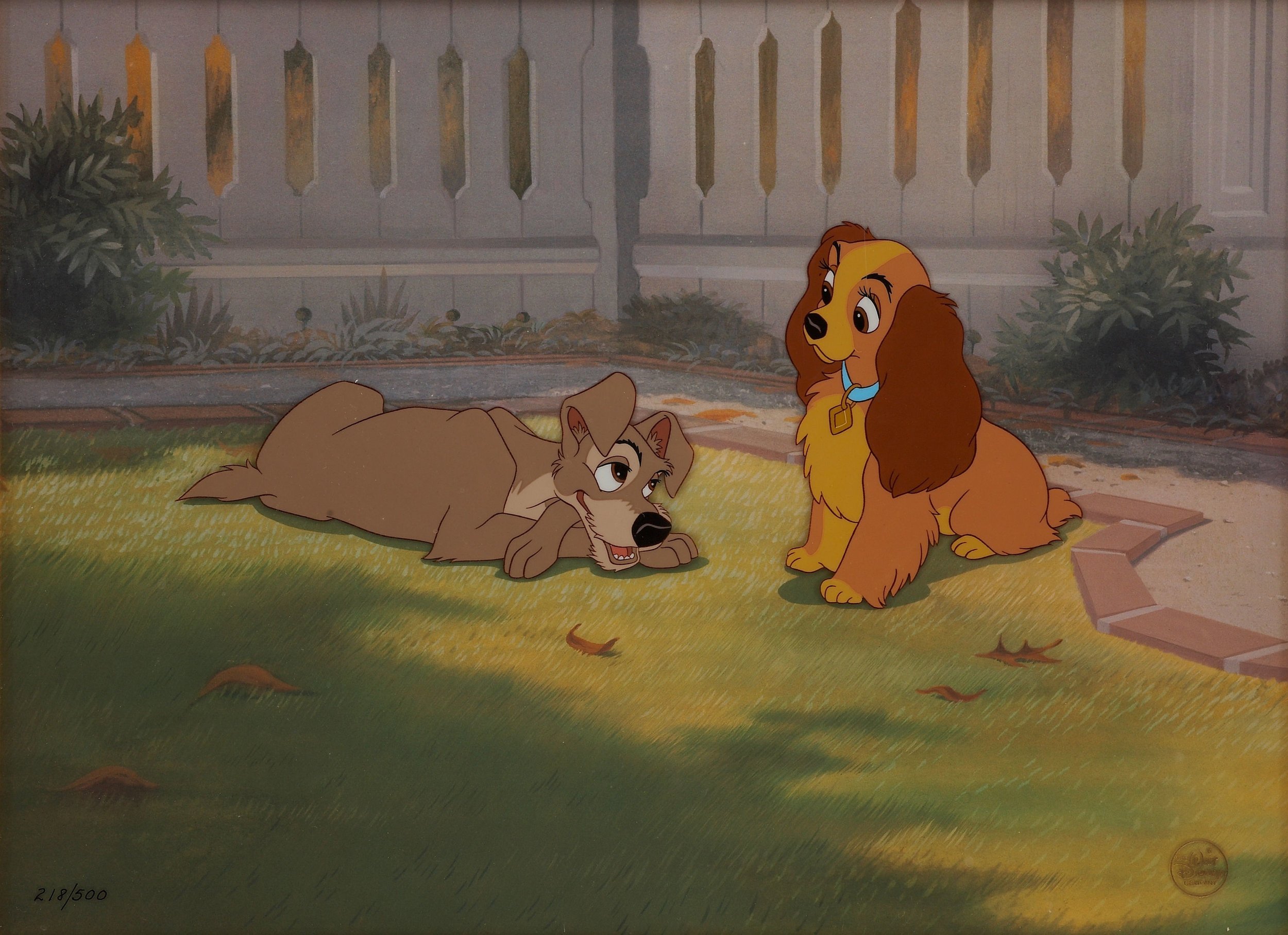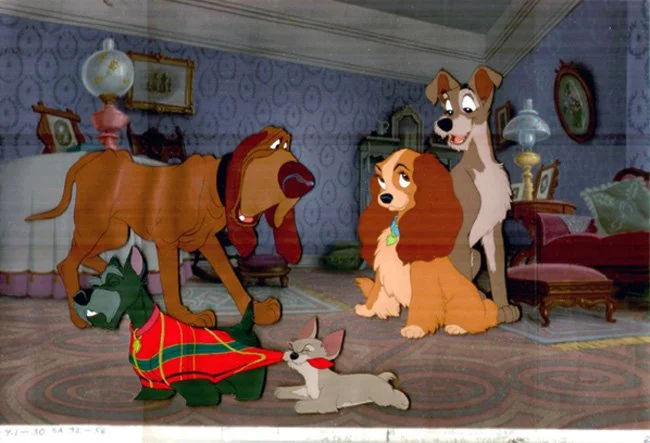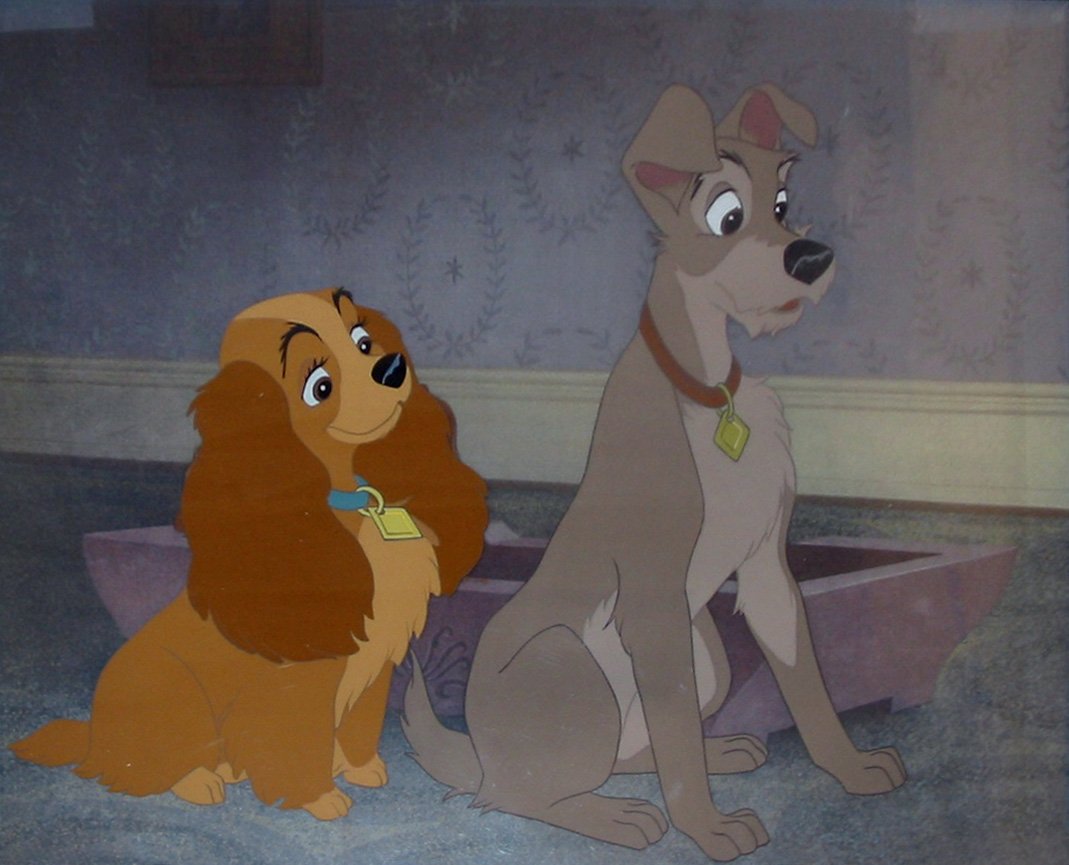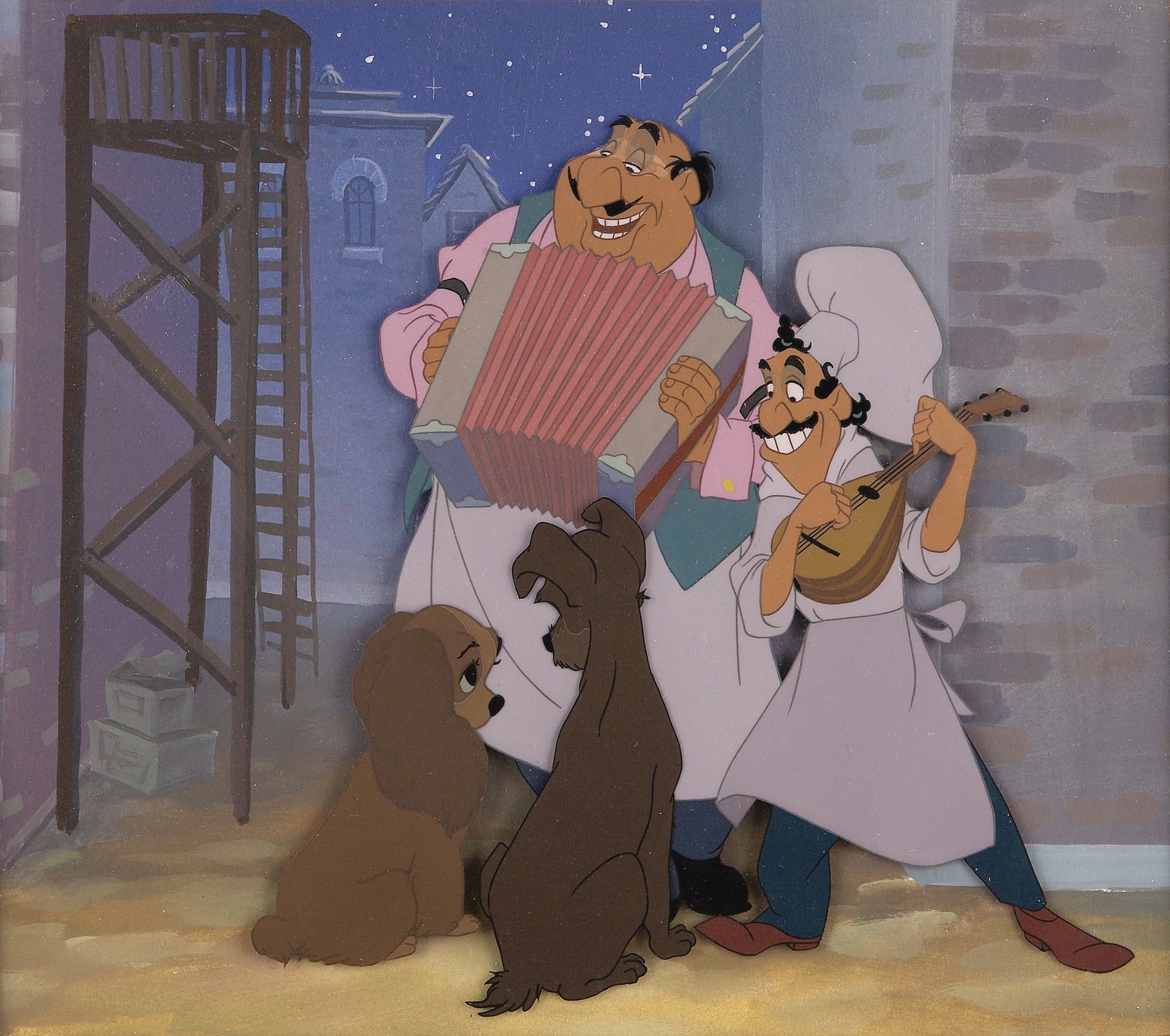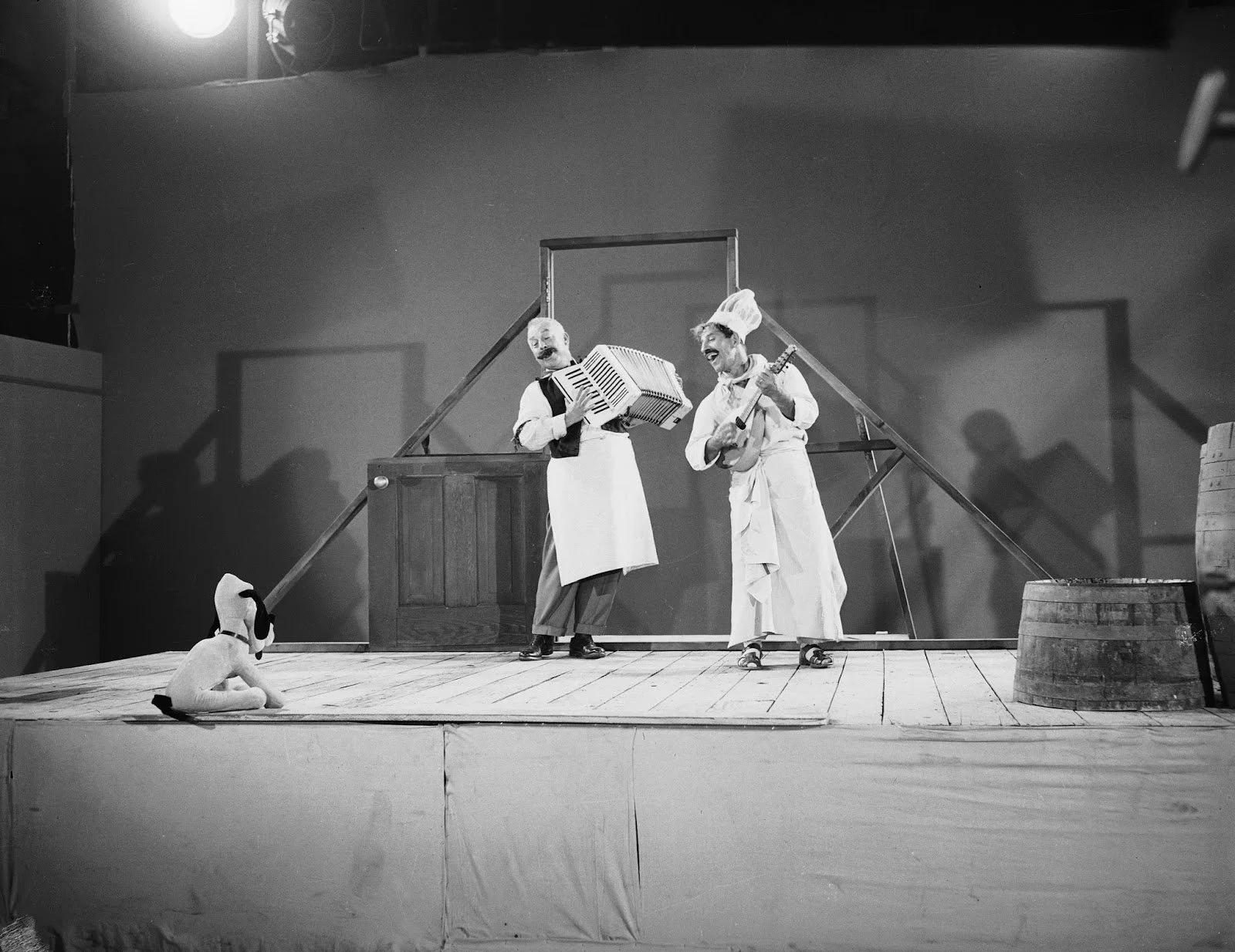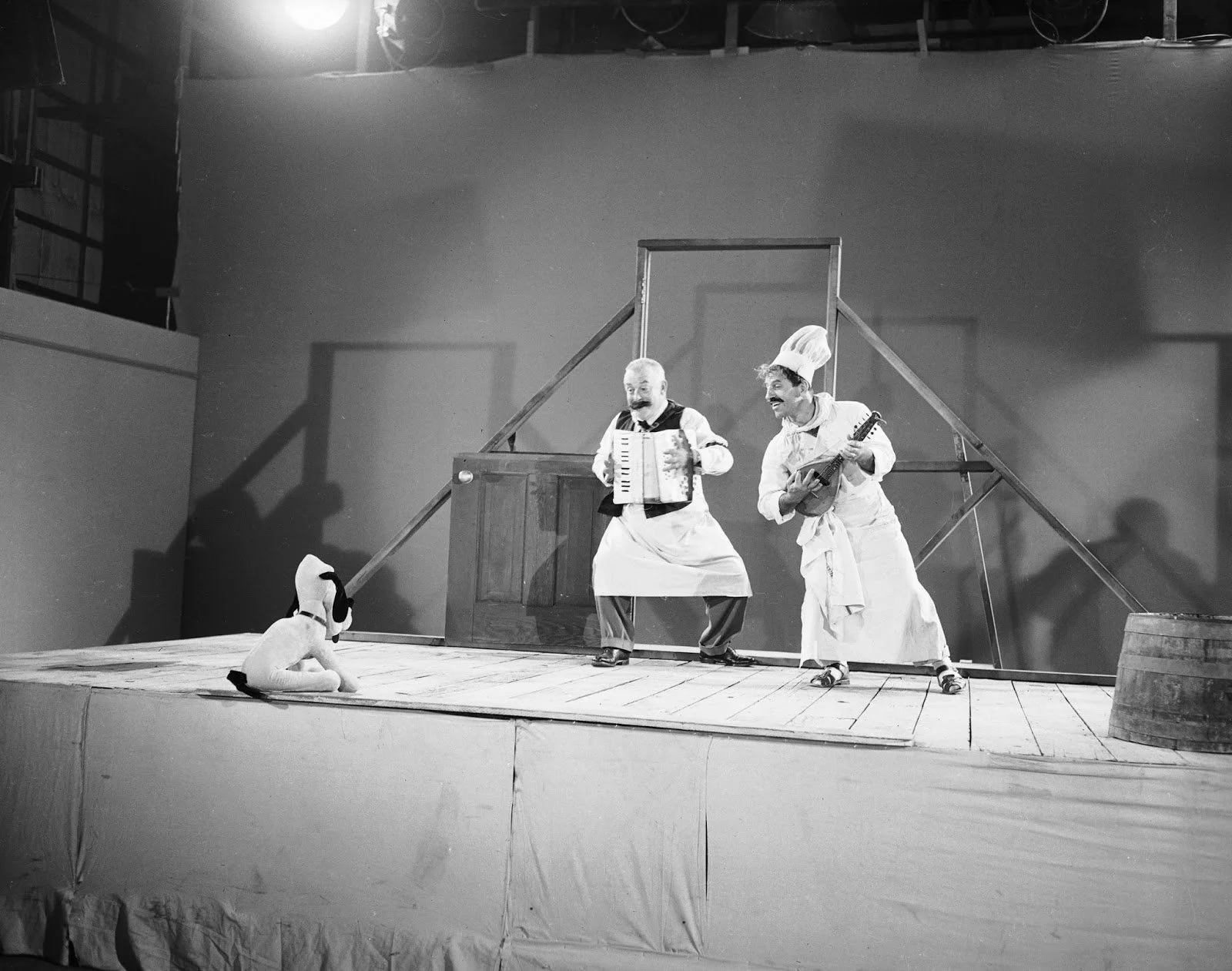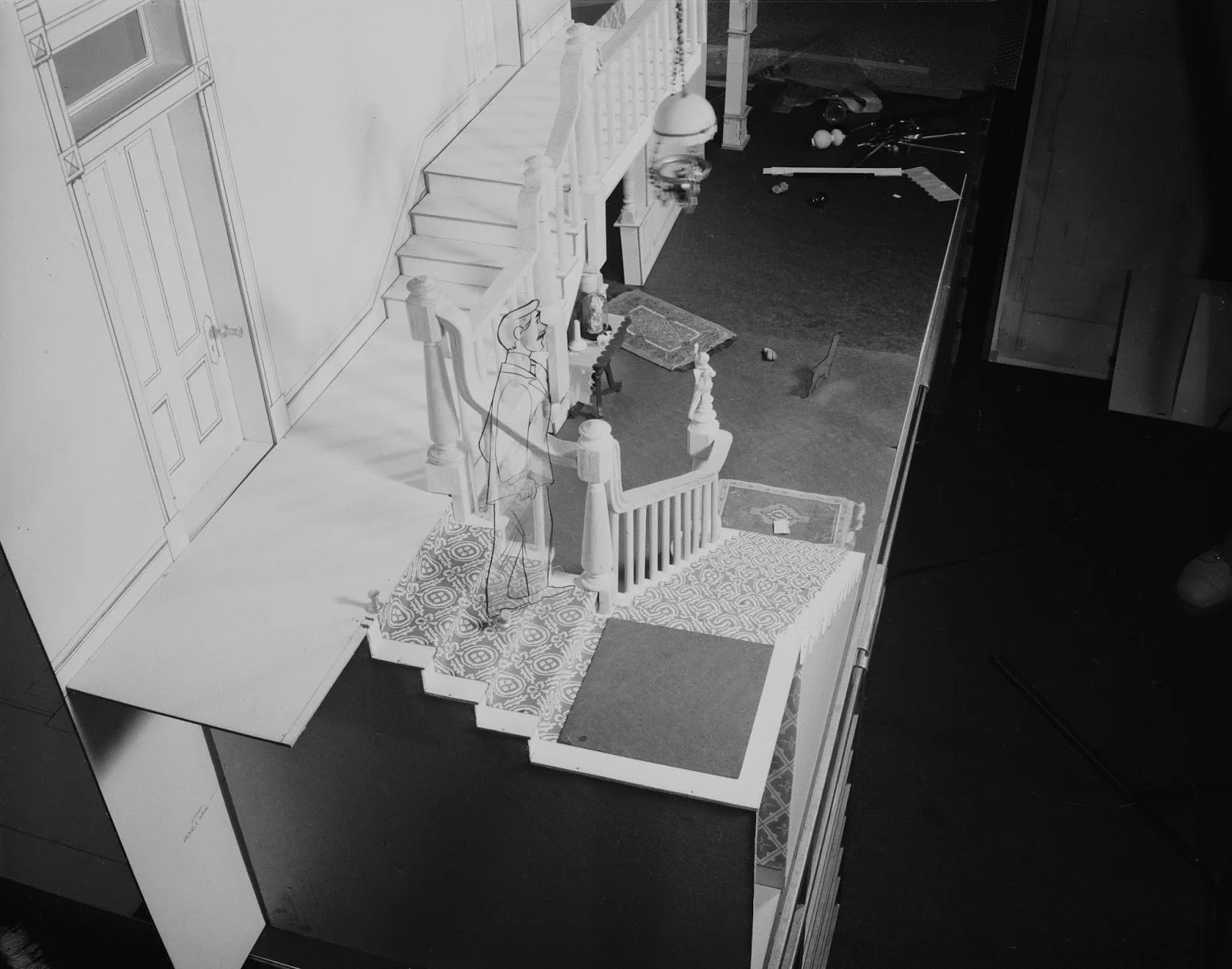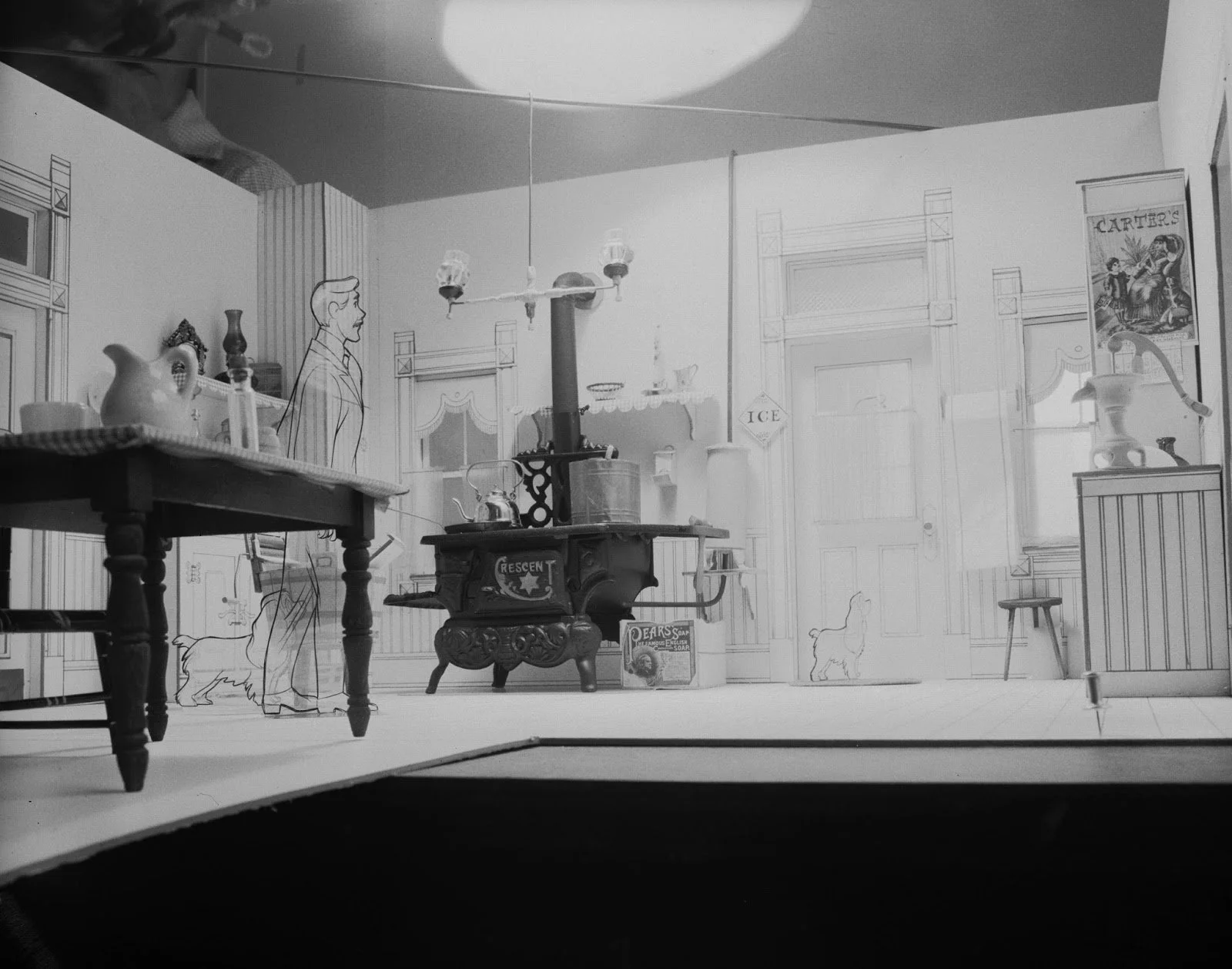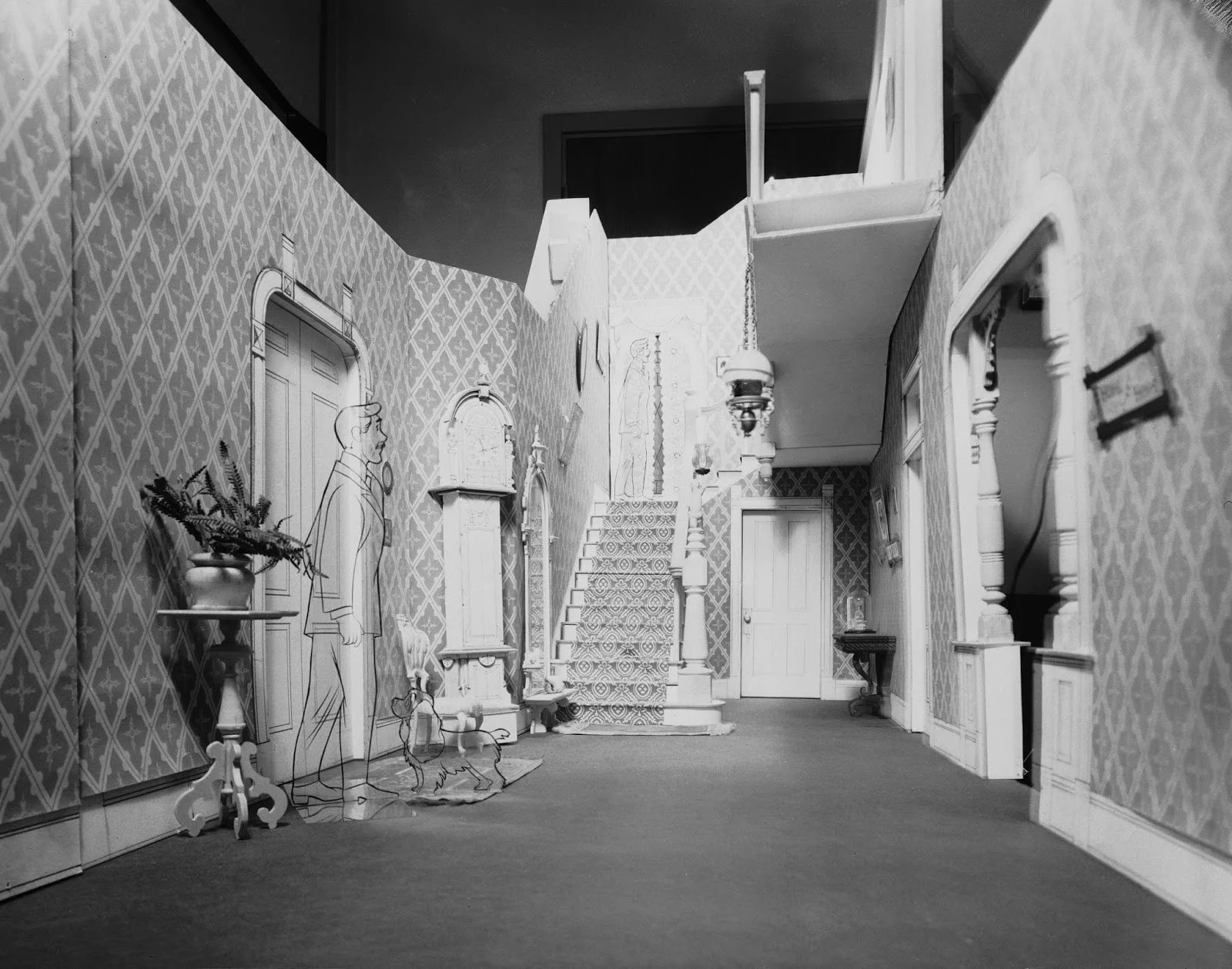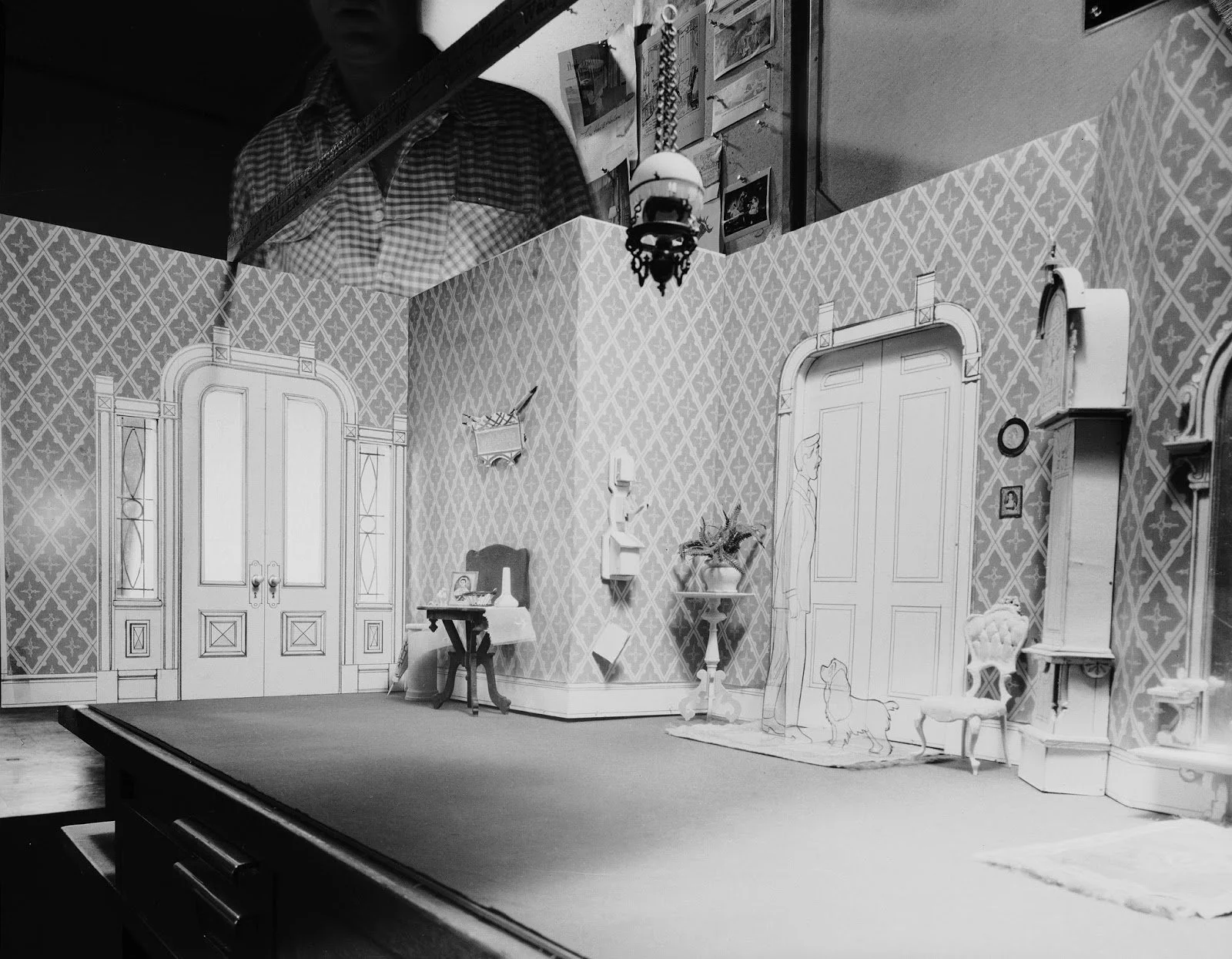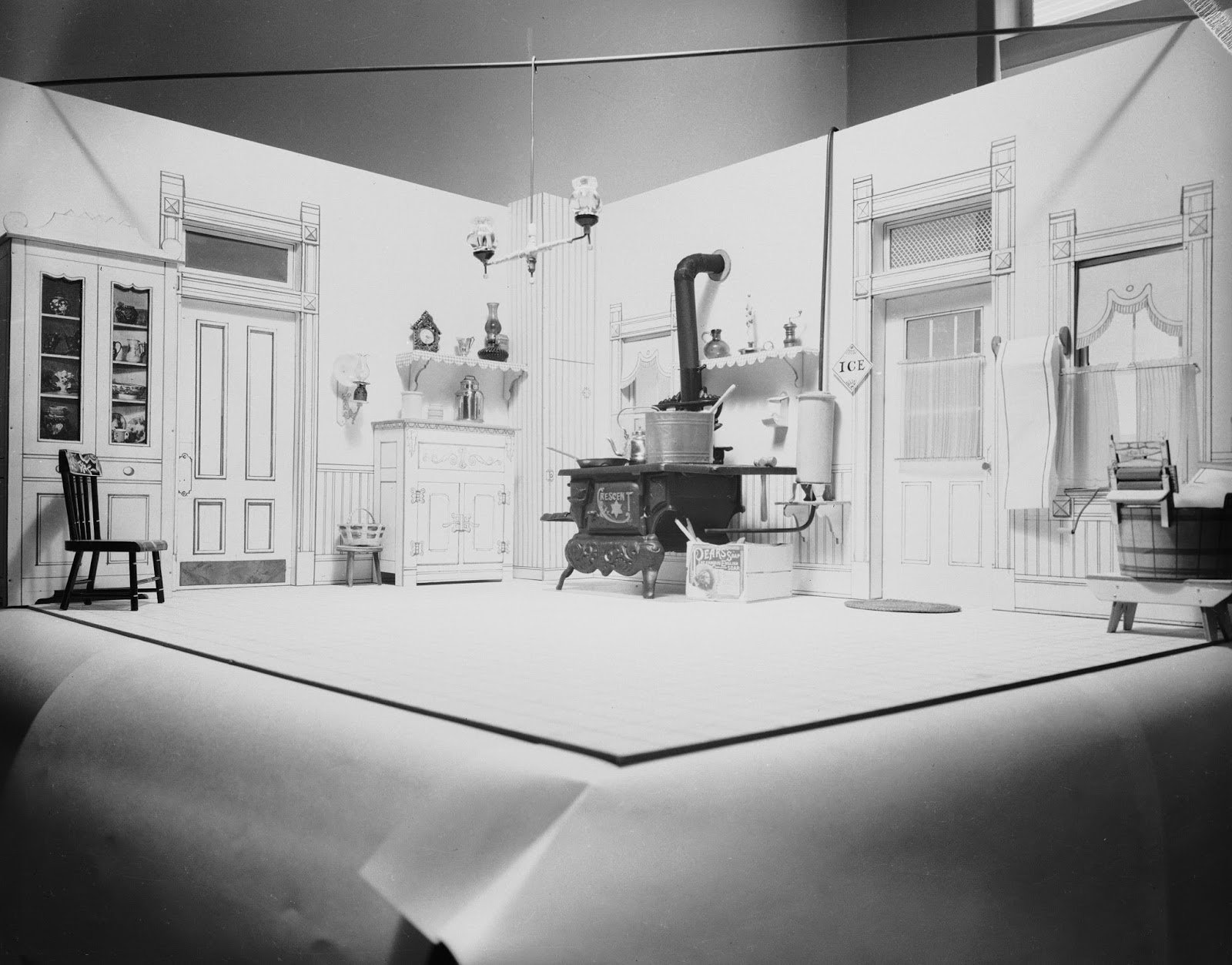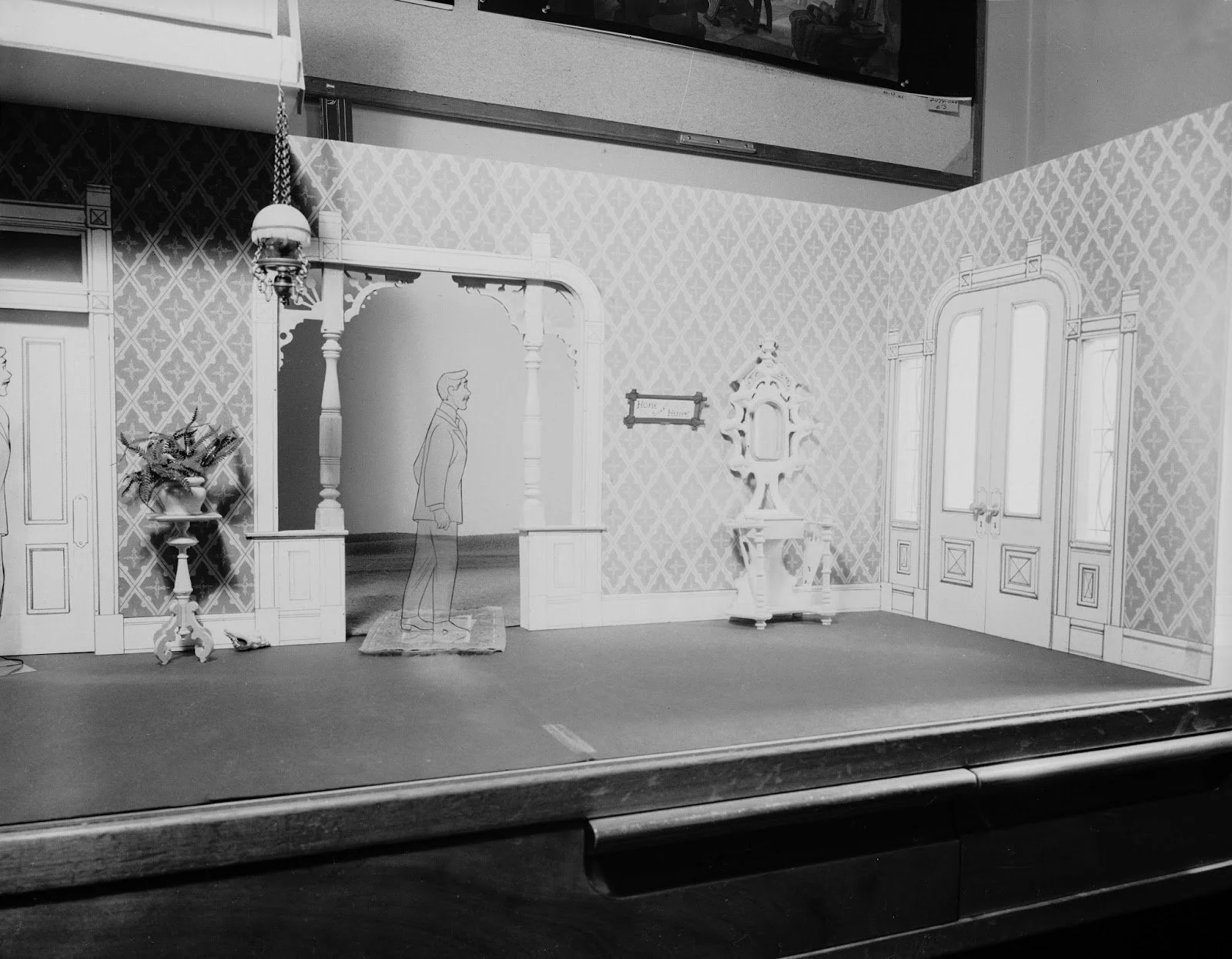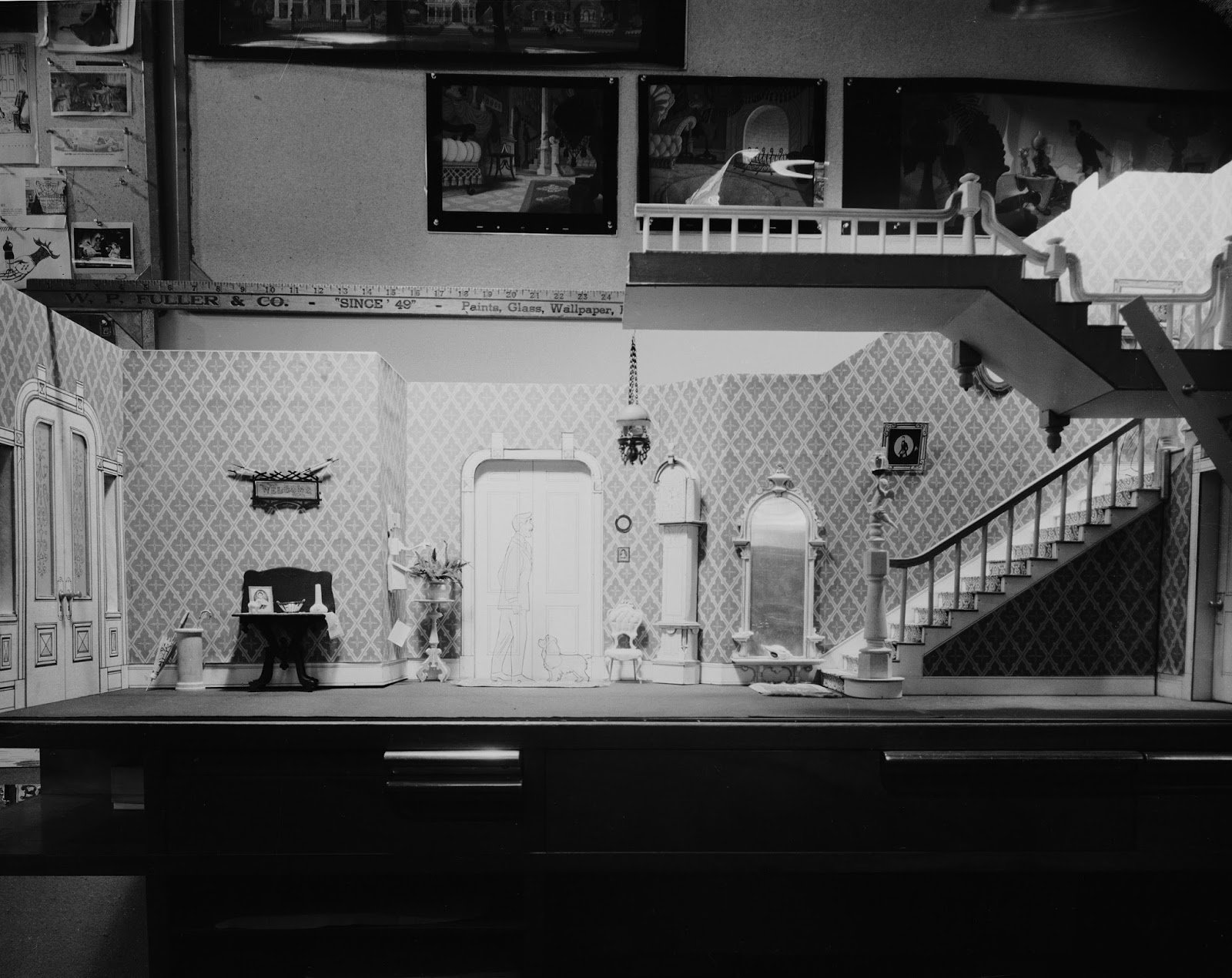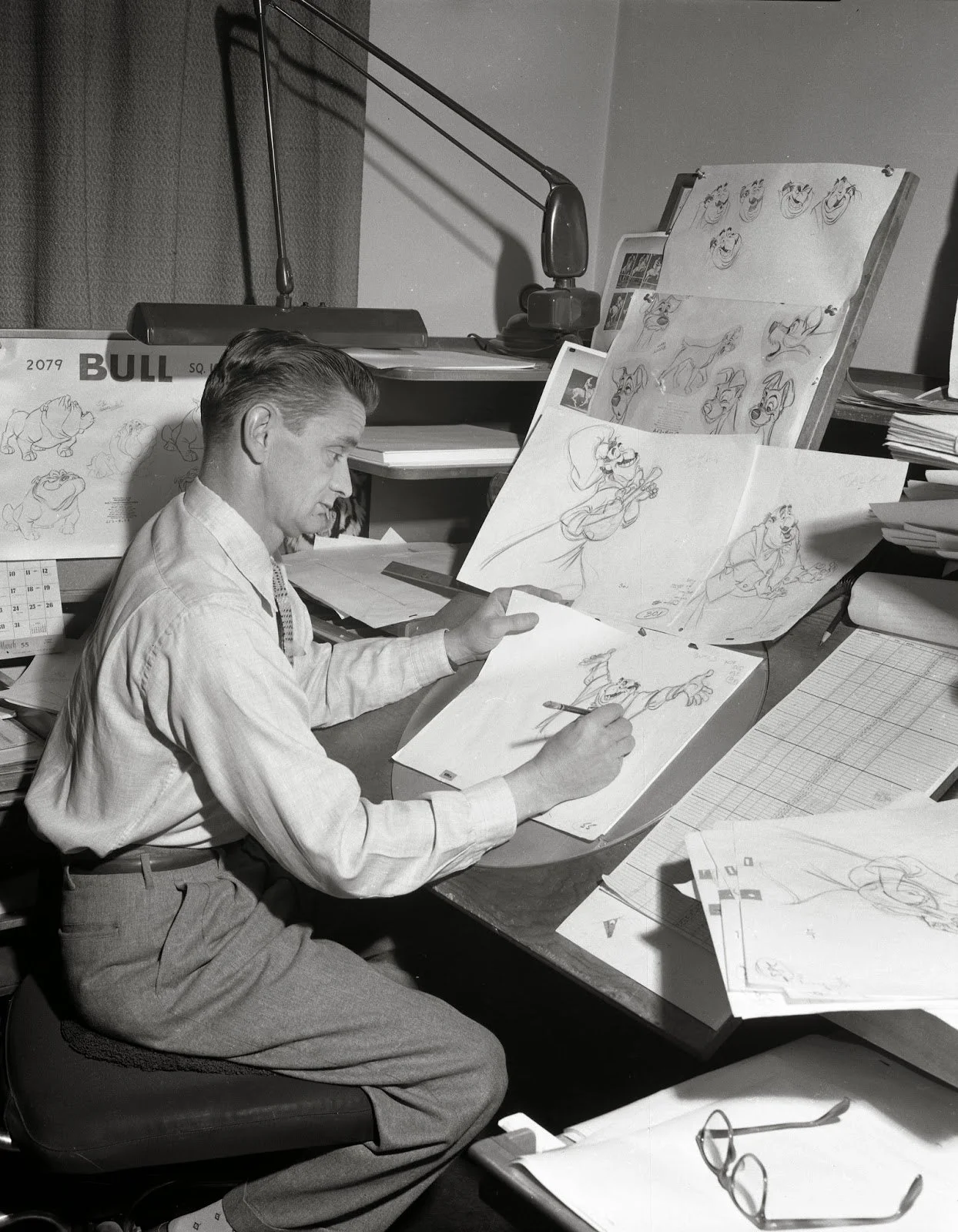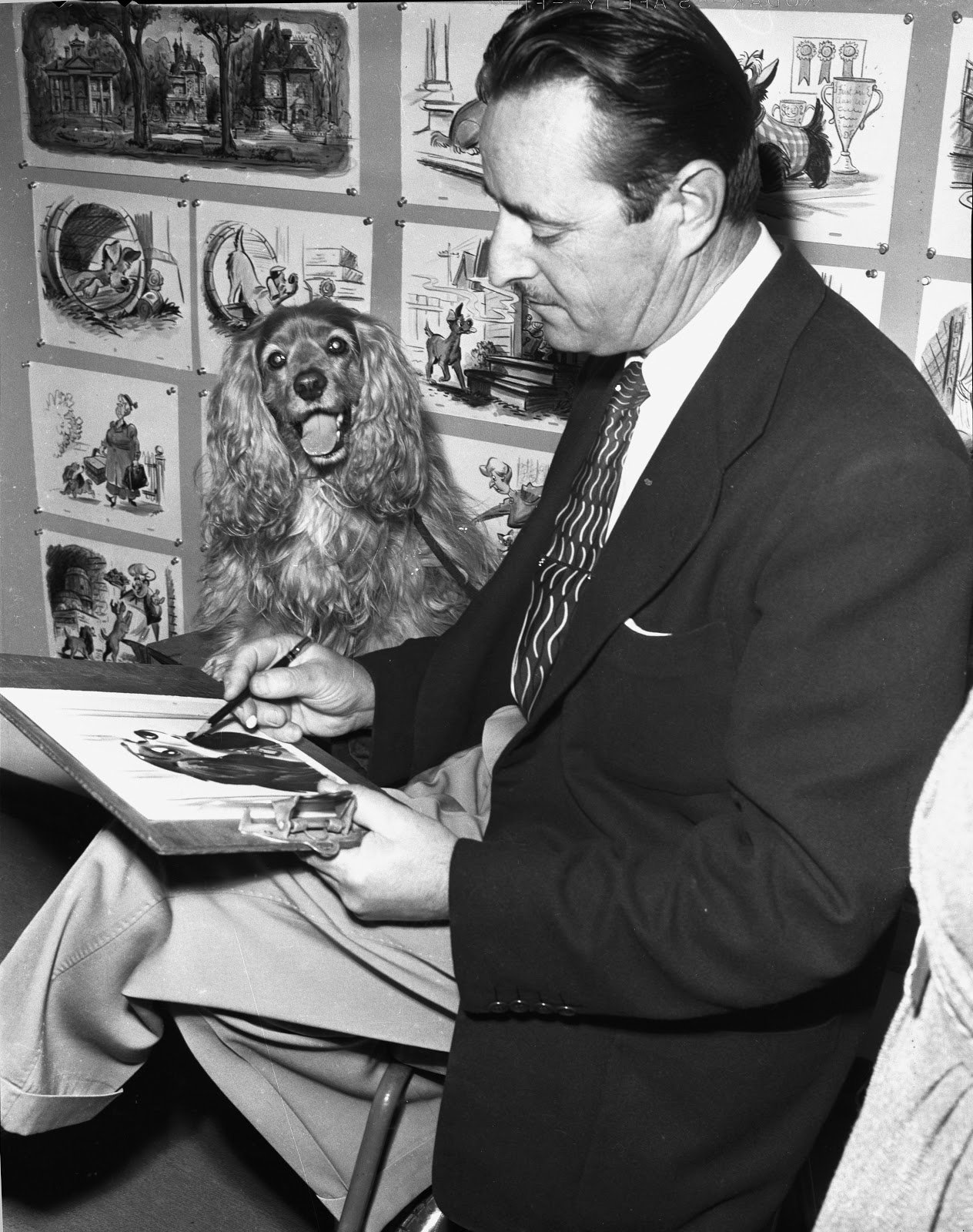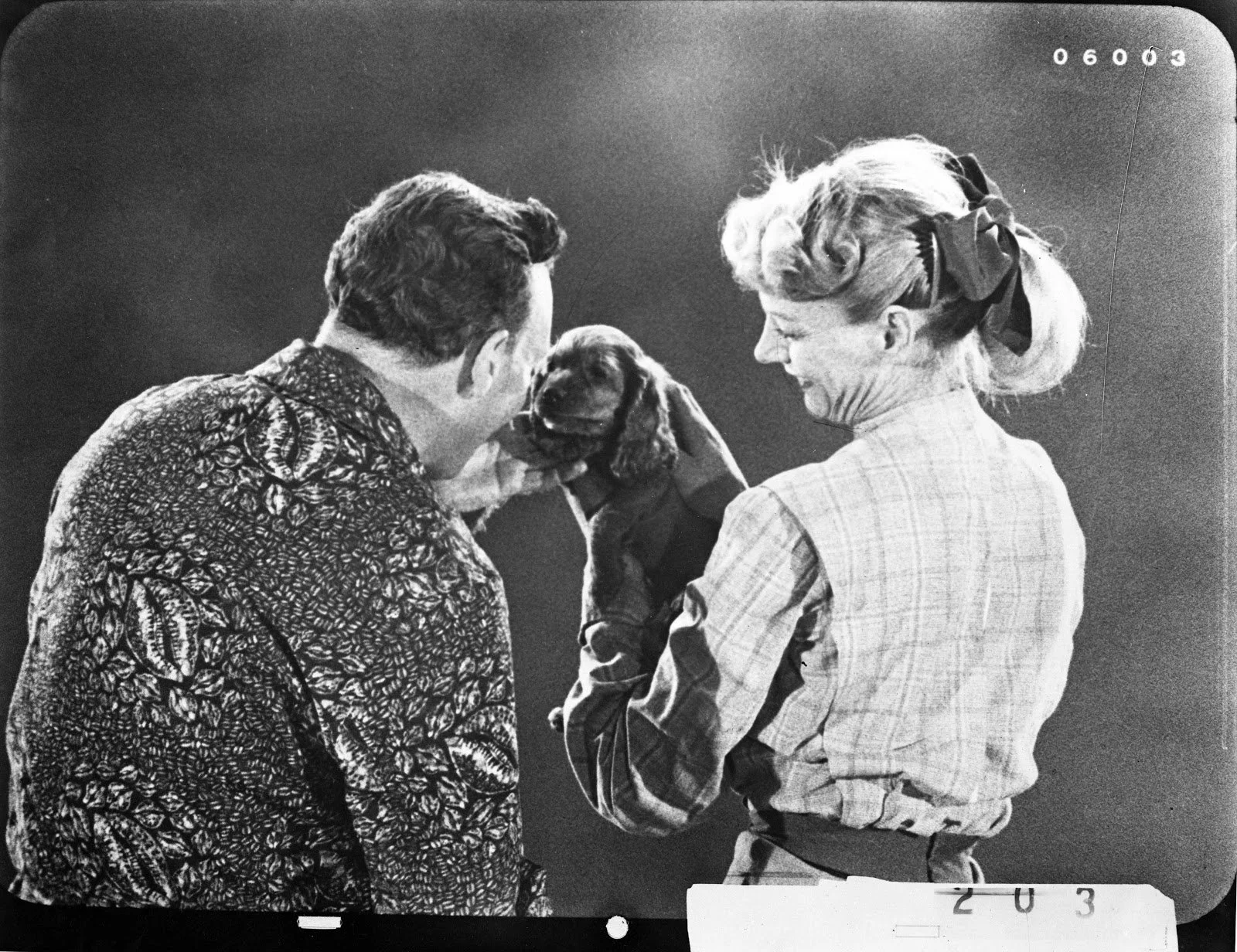Art of Lady and the Tramp
/ CDRLady and the Tramp is a 1955 American animated film produced by Walt Disney and released by Buena Vista Film Distribution. The 15th Disney animated feature film, it was directed by Clyde Geronimi, Wilfred Jackson, and Hamilton Luske. The film was based on the 1945 Cosmopolitan magazine story "Happy Dan, The Cynical Dog" by Ward Greene, and tells the story of Lady the pampered Cocker Spaniel as she grows from a puppy to adult, deals with changes in her family, and meets and falls in love with Tramp the homeless mutt.
As they had done with deer on Bambi, the animators studied many dogs of different breeds to capture the movement and personality of dogs. Although the spaghetti-eating sequence is probably now the best-known scene from the film, Walt Disney was prepared to cut it, thinking that it would not be romantic and that dogs eating spaghetti would look silly. Animator Frank Thomas was against Walt's decision and animated the entire scene himself without any layouts. Walt was impressed by Thomas's work and how he romanticized the scene and kept it in. On viewing the first take of the scene, the animators felt that the action should be slowed down, so an apprentice trainee was assigned to create "half numbers" in between many of the original frames.
Originally, the background artist was supposed to be Mary Blair and she did some inspirational sketches for the film. However, she left the studio to become a children's book illustrator in 1953. Claude Coats was then appointed as the key background artist. Coats made models of the interiors of Jim Dear and Darling's house and shot photos and film at a low perspective as a reference to maintain a dog's view. Eyvind Earle (who later became the art director of Disney's Sleeping Beauty) did almost 50 miniature concept sketches for the "Bella Notte" sequence and was a key contributor to the film.
In 1937, Walt Disney Productions story artist Joe Grant came up with an idea inspired by the antics of his English Springer Spaniel Lady, and how she got "shoved aside" by Joe's new baby. He approached Walt Disney with sketches of Lady. Disney enjoyed the sketches and commissioned Grant to start story development on a new animated feature titled Lady. Through the late 1930s and early 1940s, Joe Grant and other artists worked on the story, taking a variety of approaches, but Disney was not pleased with any of them, primarily because he thought Lady was too sweet, and there was not enough action. Walt Disney read the short story written by Ward Greene, titled "Happy Dan, the Cynical Dog", in Cosmopolitan magazine, published in 1945. He thought that Grant's story would be improved if Lady fell in love with a cynical dog character like the one in Greene's story, and bought the rights to it. The cynical dog had various names during development, including Homer, Rags, and Bozo, before "Tramp" was chosen. The finished film is slightly different from what was originally planned. Lady was to have only one next-door neighbor, a Ralph Bellamy-type canine named Hubert. Hubert was later replaced with Jock and Trusty. Aunt Sarah was the traditional overbearing mother-in-law. In the final film, she is softened to a busybody who, though antagonistic towards Lady and Tramp, is well-meaning (she sends a packet of dog biscuits to the dogs at Christmas to apologize for mistreating them). Aunt Sarah's Nip and Tuck were later renamed Si and Am. Originally, Lady's owners were called Jim Brown and Elizabeth. These were changed to highlight Lady's point of view. They were briefly referred to as "Mister" and "Missis" before settling on the names "Jim Dear" and "Darling". To maintain a dog's perspective, Darling and Jim's faces are rarely shown, similar to Tom's various owners in the Tom and Jerry cartoons. The rat was a somewhat comic character in early sketches, but became a great deal more frightening, due to the need to raise dramatic tension. A scene created but then deleted was one in which after Trusty says "Everybody knows, a dog's best friend is his human", Tramp describes a world in which the roles of both dogs and humans are switched; the dogs are the masters and vice versa. There was a love triangle between Lady, Tramp, and a Russian wolfhound named Boris (who appears in the dog pound in the final version).
In 1949, Grant left the studio, yet Disney story men were continually pulling Grant's original drawings and stories off the shelf to retool. A solid story began taking shape in 1953, based on Grant's storyboards and Greene's short story. Greene later wrote a novelization of the film that was released two years before the film itself, at Walt Disney's insistence, so that audiences would be familiar with the story. Due to Greene's novelization, Grant did not receive film credit for his story work, an issue that animation director Eric Goldberg hoped to rectify in the Lady and the Tramp Platinum Edition's behind-the-scenes vignette that explained Grant's role.
The pictures on this page are a collection of artworks created for this movie.
THE STORY
In 1909, in a small Midwestern town, "Jim Dear" gives his wife "Darling" a cocker spaniel puppy as a Christmas present. The puppy, named Lady, grows up pampered by her doting owners and befriends her neighbors' dogs Jock (a Scottie) and Trusty (an elderly Bloodhound). Meanwhile, across town, a stray terrier-mix named Tramp feeds on scraps and handouts, and frees his friends Peg the Pekingese and Bull the Bulldog from the local dog catcher.
Fleeing the angry dogcatcher, Tramp finds himself in Lady's neighborhood. He overhears a distraught Lady conversing with Jock and Trusty about her owners' suddenly-distant behavior towards her. When Jock and Trusty deduce this is because Darling is pregnant, Tramp inserts himself into the conversation as the "voice of experience", and warns Lady that "when a baby moves in, a dog moves out". Annoyed, Jock drives him from the yard. Tramp's words cause Lady to fret throughout Darling's pregnancy, but when the baby boy arrives, she is allowed to meet and bond with him, dispelling her fears…

Ready for more?
Discover thousands of model sheets, concept designs, background paintings from the best animation movies and TV series!


